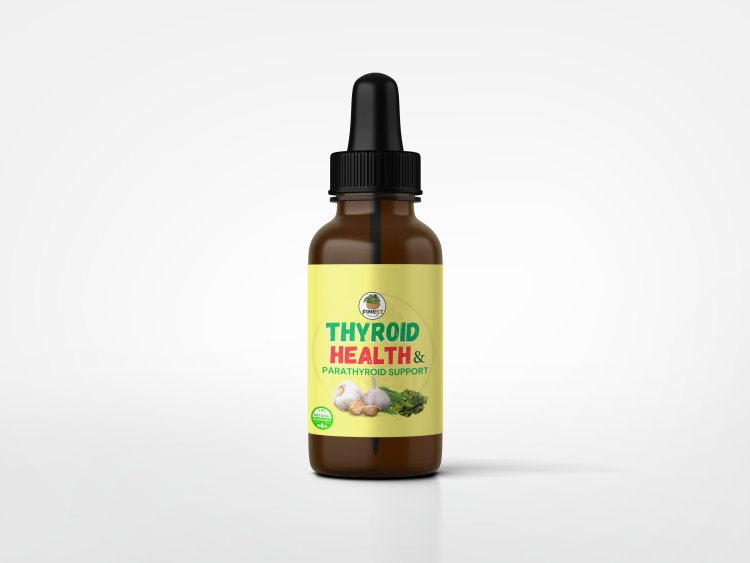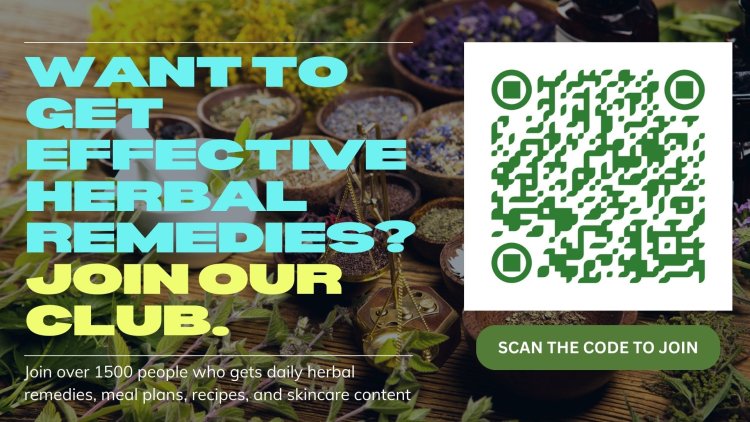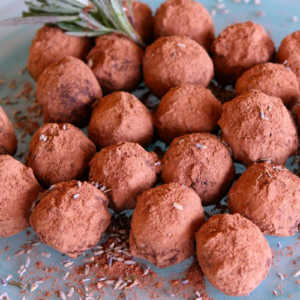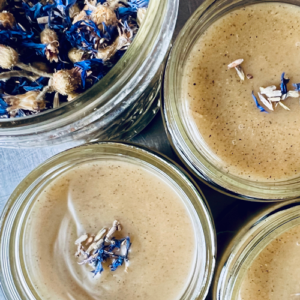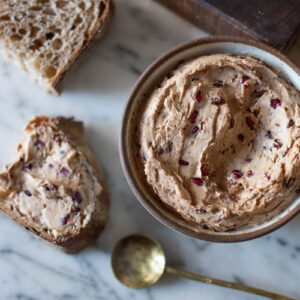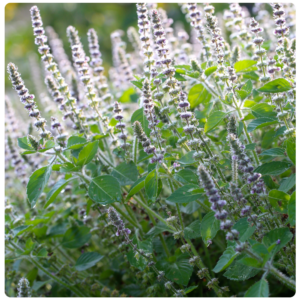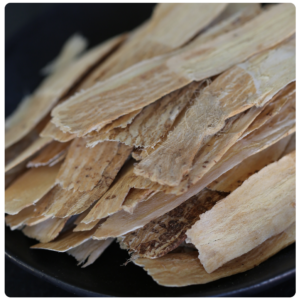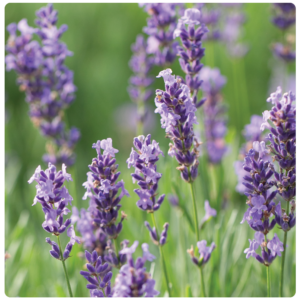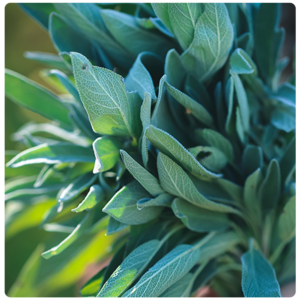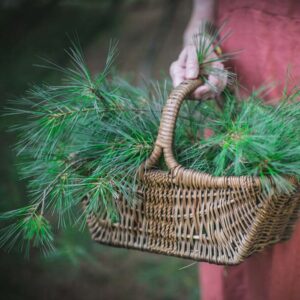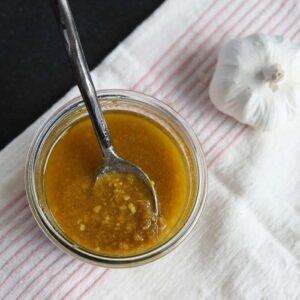This drink provides more than just a pleasing taste—it’s a nutrient-dense formulation designed to support the body’s inherent functions. Here’s how each ingredient supports weight loss:
Warm Water: Commencing your day with warm water boosts metabolic function, rehydrates the body, and supports digestive health. Furthermore, it assists in the removal of toxins, preparing the body for efficient nutrient uptake.
Raw Apple Cider Vinegar (ACV) : ACV is a recognized weight management supplement. It contains acetic acid, which may contribute to reduced fat storage, decreased appetite, and enhanced insulin sensitivity. Furthermore, ACV promotes gut health by fostering the growth of beneficial bacteria.
Lemon Juice : Lemons are an abundant source of vitamin C and antioxidants, which play a crucial role in detoxifying the liver and enhancing immune function. Additionally, lemon juice has an alkalizing impact on the body, promotes digestive health, and may facilitate efficient fat metabolism.
Ginger Root : As a natural anti-inflammatory and digestive aid, ginger offers numerous health benefits. It can alleviate bloating, enhance metabolism, and suppress cravings. Additionally, its warming properties stimulate circulation and support fat burning.
Raw Honey: As a sweetener, honey is replete with nutritional benefits that extend far beyond mere sweetness. Raw honey is replete with enzymes, vitamins, and minerals that bolster energy levels and facilitate healthy digestion. Moreover, its lower glycemic index relative to refined sugars makes it a more wholesome choice. How to Prepare the
Drink Ingredients:
1 cup warm water
1 tablespoon raw apple cider vinegar
1 teaspoon raw honey (or to taste)
¼ teaspoon ground ginger
1 tablespoon lemon juice (freshly squeezed is best)
Instructions:
Warm the water to a temperature of 100–110°F/38–43°C, avoiding boiling point. Excessive heat can denature the beneficial enzymes present in ACV and honey.
Combine warm water, raw apple cider vinegar, lemon juice, and ground ginger in a mug or glass, stirring well to combine.
To achieve optimal sweetness, incorporate raw honey into the mixture and stir until the honey is completely dissolved.
To achieve maximum benefits, consume this drink first thing in the morning on an empty stomach. How It Supports Weight Loss Boosts Metabolism : The combination of ACV, lemon, and ginger creates a metabolic boost that helps your body burn calories more efficiently throughout the day.
Reduces Cravings: Research has indicated that ACV and lemon juice can help regulate blood sugar levels, thereby decreasing hunger pangs and cravings for unhealthy snack options.
Enhances Digestion: This beverage facilitates the breakdown of food and improves gut health, ensuring optimal nutrient absorption and efficient waste elimination.
Detoxifies the Body : The combination of lemon juice and ginger facilitates the purification of the liver and kidneys, removing toxins that may hinder weight loss efforts.
This is also a very effective Detox Tea To Detoxifies The Body
When taking this supplement, powder or loose form is a great option. This recipe will add the much-needed element of rest and relaxation for anyone seeking relief from the winter blues
Tips for Success
Consistency Is Key: To experience the best outcomes, incorporate this elixir into your morning routine, as consistency is vital for achieving noticeable results over time.
Align with a Nutritious Diet:
For enhanced weight loss outcomes, this beverage is most effective when used in conjunction with a balanced diet rich in whole foods, lean proteins, and vegetables.
Physical Activity Guidance : To optimize the benefits of this drink, engage in regular physical activity as part of your daily routine. Taking a daily walk can lead to noticeable improvements.
Be Mindful of Your Body's Signals:
If you encounter discomfort (e.g., acid reflux due to ACV), mitigate the issue by diluting the drink with more water or decreasing the ACV amount. Always seek guidance from a healthcare professional if concerns persist throughout this journey.
For a more comprehensive understanding of A Effective Beverage for Rapid Weight Loss and related issues, Please Contact Dr. Anthia Wint at FHS Consultation.
]]>Menopause is a natural and inevitable transition in a woman's life, marking the end of her reproductive years. Typically occurring between the ages of 45 and 55, this phase brings hormonal changes that can trigger a range of physical and emotional symptoms. Many women experience hot flashes, night sweats, mood swings, sleep disturbances, and vaginal dryness, all of which can impact their quality of life.
While hormone replacement therapy (HRT) remains a conventional treatment, concerns over potential side effects have led many women to seek natural alternatives. Herbal supplements have emerged as a trusted, holistic option for managing menopause symptoms, offering a gentler approach to hormonal balance and overall well-being. This article explores the benefits of herbal remedies, their effectiveness, and how Finest Herbal Shop provides natural solutions to support women through this transition.
Understanding Menopause and Its Symptoms
Menopause occurs due to a decline in estrogen and progesterone production, leading to various physiological changes. Common symptoms include:
Hot Flashes & Night Sweats: Sudden, intense feelings of heat, often accompanied by sweating and flushing, which can disrupt daily activities and sleep.
Mood Swings & Anxiety: Fluctuating hormone levels may cause irritability, anxiety, or even depression.
Sleep Disruptions: Many women struggle with insomnia or frequent waking, leading to fatigue and daytime drowsiness.
Vaginal Dryness & Low Libido: Estrogen decline affects vaginal tissue, leading to dryness, discomfort, and reduced sexual desire.
Instead of resorting solely to pharmaceutical treatments, a growing number of women are embracing herbal supplements as a natural and effective way to ease these symptoms.
Herbal Supplements: Nature’s Solution for Menopause Relief
Dr. Anthia states that herbal remedies have been used for centuries to support hormonal balance and alleviate menopause-related discomfort. Here are some of the most effective herbs Dr wint used for her herbal supplements for menopause: Finest Herbal Shop Blood Circulation Balance Herbal Tonic & Organic Herbs Such As
1. Black Cohosh – The Hot Flash Remedy
Black cohosh is one of the most extensively researched herbs for menopause. It helps reduce the severity and frequency of hot flashes and night sweats. Additionally, it may promote better sleep and improve mood stability.
2. Red Clover – A Natural Source of Phytoestrogens
Red clover contains plant-based compounds that mimic estrogen in the body, helping to alleviate hot flashes and improve bone health. While results may vary, many women report positive effects when using red clover supplements as part of their menopause management routine.
3. Dong Quai – The Hormonal Balancer
Often referred to as "female ginseng," Dong Quai has been used in traditional Chinese medicine for centuries to support hormonal balance. It helps improve circulation, reduce hot flashes, and ease menstrual discomfort in perimenopausal women.
4. Maca Root – Boosting Energy & Libido
Maca root is known for its adaptogenic properties, helping to enhance energy levels, reduce stress, and improve libido. Many women find that incorporating maca into their daily routine supports overall hormonal health and combats menopause-related fatigue.
5. Ashwagandha – Stress & Sleep Support
Menopause often brings heightened stress and disrupted sleep. Ashwagandha, a powerful adaptogen, helps regulate cortisol levels, promoting relaxation and improving sleep quality. It also enhances mood and cognitive function, making it a valuable addition to menopause wellness plans.
6. Finest Herbal Shop Blood Circulation Balance Herbal Tonic– Relief for Dryness & Mood Swings
Rich in gamma-linolenic acid (GLA), Finest Herbal Shop Blood Circulation Balance Herbal Tonic is widely used to combat hormonal imbalances. It is particularly effective in alleviating mood swings, reducing breast tenderness, and improving skin hydration, making it a favorite among menopausal women.
A Holistic Approach to Menopause Management
While herbal supplements offer significant relief, they work best when combined with a holistic approach to wellness. Here are some additional lifestyle strategies to ease menopause symptoms:
Balanced Diet: Incorporate nutrient-rich foods, including leafy greens, whole grains, healthy fats, and lean proteins.
Regular Exercise: Engage in activities like yoga, walking, or strength training to improve mood and bone health.
Stress Management: Practice meditation, deep breathing, or mindfulness to reduce anxiety and emotional fluctuations.
Hydration & Skincare: Drink plenty of water and use natural moisturizers to combat dryness.
Quality Sleep: Establish a bedtime routine and limit screen time before bed to improve sleep quality.
Finest Herbal Shop: Your Partner in Natural Menopause Relief Buy Now
At Finest Herbal Shop, we are dedicated to providing high-quality, natural herbal solutions tailored to women's health needs. Our carefully curated supplements are designed to support hormonal balance, ease menopause symptoms, and promote overall well-being. Whether you are experiencing hot flashes, mood swings, or sleep disruptions, our trusted herbal remedies can help you navigate menopause with confidence and comfort.
Why Choose Finest Herbal Shop?
Premium Quality: Our products are sourced from the finest natural ingredients, ensuring purity and effectiveness.
Expert Guidance: We offer personalized recommendations to help you choose the right herbal supplements for your needs.
Holistic Wellness: Beyond supplements, we promote a comprehensive approach to menopause management through lifestyle tips and natural health education.
Menopause is a transformative stage in every woman’s life, and while it comes with challenges, it doesn’t have to be overwhelming. With the right combination of herbal supplements, lifestyle adjustments, and expert guidance, managing menopause naturally is possible. Explore our range of herbal solutions at Finest Herbal Shop and take control of your menopausal journey with confidence and vitality.
For more insights and natural health solutions, visit Finest Herbal Shop today! BUY NOW
For More Information On Menopause Contact
Dr Anthia Wint At FHS Consultation By clicking on this link.
]]>
The Essence of Fine Dining
At its core, fine dining is an embodiment of excellence, creativity, and meticulous attention to detail. It celebrates the artistry of food, where chefs transform fresh, high-quality ingredients into dishes that are not just meals, but stories told through taste. The experience begins well before the first course is served, starting with the selection of the restaurant itself.
Ambiance and Atmosphere
The ambiance of a fine dining restaurant plays a vital role in crafting the perfect dining experience. The moment you walk through the door, you should feel like you’ve stepped into a world that reflects the restaurant’s philosophy. Thoughtful details such as soft lighting, elegant decor, and curated music create a sensory environment that amplifies the experience. The layout of the space, including the arrangement of tables and choice of seating, promotes intimacy and comfort, inviting guests to immerse themselves in the occasion.
In fine dining, the atmosphere is not just about aesthetics but about crafting a feeling. Every element from the design to the pace of the meal is designed to evoke a sense of calm and appreciation for what’s to come. The environment itself sets the tone for the exceptional meal and makes each visit feel special
Service Excellence
Service in fine dining is a finely honed craft that elevates the dining experience. The staff is trained to anticipate your every need, offering impeccable service that is attentive yet unobtrusive. Knowledgeable servers guide guests through the menu, sharing insights about ingredients, preparation techniques, and pairing suggestions that enhance the overall meal.
This exceptional service fosters a connection between the diner and the culinary team, transforming a simple meal into a shared celebration of food. The relationship between the guest and the restaurant is one of trust and respect, which is essential in ensuring the dining experience is seamless and unforgettable.
The Culinary Journey
At the heart of fine dining lies the food. Each dish is meticulously prepared, often inspired by seasonal ingredients and culinary traditions, offering an unforgettable taste journey. Here are some key components that define the gourmet dining experience:
Seasonal and Local Ingredients
A hallmark of fine dining is the use of seasonal, locally sourced ingredients. This not only supports local farmers and artisans but also ensures that the dishes are fresh and bursting with flavor. The dedication to seasonal ingredients allows chefs to craft menus that evolve with the seasons, so each dining experience reflects the best produce and flavors available at that time.
By sourcing locally, restaurants provide guests with a taste of the region, often introducing them to new ingredients or preparations that may not be commonly available. The chefs' creativity in using these ingredients highlights their commitment to quality, and each dish becomes a celebration of the season’s bounty.
Presentation and Plating
In fine dining, the visual presentation of a dish is as important as its flavor. The art of plating is an essential part of the experience, transforming each dish into a visual masterpiece. Fine dining chefs carefully consider how every component is arranged on the plate, balancing color, texture, and shape to create a harmonious visual appeal.
This attention to detail elevates the dining experience, engaging the diner’s eyes before the taste buds even get a chance to explore. Just as the ambiance sets the mood for the meal, plating serves as an invitation to indulge in the culinary delights that await. A beautifully presented dish excites anticipation and makes the first bite all the more extraordinary.
The Role of Wine Pairing
Wine pairing is an integral part of gourmet dining, as the right wine can elevate the flavors of a dish, enhancing both the meal and the overall dining experience. A fine dining restaurant typically boasts an extensive wine list, with selections chosen to complement the flavors, textures, and aromas of each dish on the menu.
Expert sommeliers are often on hand to suggest the ideal wine pairings, offering guests an added layer of expertise that enriches the experience. Whether it’s a robust red to accompany a rich entrée or a crisp white to brighten a seafood dish, wine pairing adds depth to the flavors of the meal, making it a more immersive experience.
The Emotional Impact of Fine Dining
Fine dining is not just about the food or the service; it’s about creating an emotional connection. Whether it’s a special celebration, a romantic evening, or simply a treat to indulge yourself, gourmet dining often becomes a lasting memory. The combination of atmosphere, service, culinary excellence, and attention to detail brings joy to all senses and creates a profound impact that lingers long after the last bite.
The experience of fine dining fosters a sense of appreciation for the craftsmanship and dedication involved in every dish. It’s a way to connect with the artistry of chefs and the culture behind the food, turning an ordinary meal into a cherished memory.
Fine dining is an art that involves much more than just eating well. It’s about creating a memorable experience where every element of ambiance, service, culinary mastery, and even wine comes together to form something exceptional. It celebrates the artistry of chefs, the creativity of culinary experts, and the passion for food that makes every meal a celebration.
Whether you’re enjoying a quiet dinner for two or indulging in an extravagant multi-course feast, fine dining is an experience that engages all your senses and provides an opportunity to connect with the very essence of food. The next time you dine out at a fine restaurant, take a moment to appreciate all the thought and dedication that went into your meal. You’re not just eating; you’re partaking in a culinary journey that transcends food and becomes an unforgettable experience.
Click on the link below to get more juicy tips:
https://fhslifestylemagazine.com/
Start your wellness journey to a better health today! Join our upcoming events
???? Fhsevent.com
]]>
The Thyroid and Its Crucial Interconnections
Our thyroid does not function in isolation; it has dynamic connections with multiple systems in the body:
Digestive System and Liver: Both play roles in hormone metabolism. The liver, for instance, converts thyroid hormones into their active forms, making its health pivotal in managing thyroid function.
Pituitary and Hypothalamus Glands: These glands produce stimulating hormones that regulate thyroid activity, acting as a control center for thyroid hormone release.
Parathyroid Glands: These tiny glands, located near the thyroid, manage calcium levels in the blood, which impacts muscular and neurological health, and work closely with the thyroid.
An imbalance in any of these systems can lead to thyroid dysfunction, and understanding these interrelations helps us approach thyroid health holistically.
Thyroid Disorders: Hyperthyroidism and Hypothyroidism
Two primary thyroid imbalances can disrupt our well-being:
Hyperthyroidism is characterized by an excess production of thyroxine (T4), leading to symptoms like anxiety, weight loss, rapid heartbeat, and even eye protrusion. Hyperthyroidism often requires treatment to inhibit thyroxine production. Nutritionally, cruciferous vegetables, known for their thyroxine-inhibiting properties, may play a role in managing this condition.
Hypothyroidism, on the other hand, arises from insufficient thyroxine production, often due to iodine deficiency. Those with hypothyroidism might experience fatigue, weight gain, cold sensitivity, and mental fog. Treatment often includes iodine-rich supplements, such as bladderwrack and dulse, which can help stimulate thyroxine production.
While hyperthyroidism often involves a deeper focus on the parathyroid, pituitary, and adrenal glands, hypothyroidism treatment emphasizes liver health to ensure effective hormone processing and detoxification.
Autoimmune Thyroid Conditions: Graves’ Disease and Hashimoto's Thyroiditis
Autoimmune conditions like Graves’ disease and Hashimoto’s thyroiditis involve the immune system mistakenly targeting the thyroid gland:
Graves’ disease leads to an overactive thyroid (hyperthyroidism), while Hashimoto's thyroiditis often results in an underactive thyroid (hypothyroidism). Both conditions require a nuanced approach, focusing on immune modulation to prevent further attacks on the thyroid.
In these cases, amphoteric herbs are often used to help regulate the immune response. These adaptogenic herbs can help balance the immune system, whether it is overactive or underactive, reducing autoimmune attacks on the thyroid.
Managing Thyroid Nodules and Cancer: A Holistic Approach
Thyroid nodules and thyroid cancer present unique challenges, requiring careful regulation of multiple systems:
To address nodules and cancerous growths, treatments often include immune system support and regulation of the digestive system to ensure proper nutrient absorption and toxin elimination.
Additionally, maintaining the balance within the pancreas, thymus gland, spleen, and lymphatic system is essential. Balancing moisture, dampness, and excess heat is crucial, as these factors can impact thyroid tissue health and reduce the risk of further complications.
For cases involving cancerous cells, cytotoxic therapies are sometimes employed. These treatments help target and eliminate cancer cells, aiming to preserve the thyroid's structure and function as much as possible.
Thyroid Health Considerations: Size and Gender Differences
Did you know that thyroid size can vary between men and women? In women, the thyroid often expands during pregnancy to support increased hormonal demands, influenced by the hormone calcitonin, which also helps regulate calcium levels. This hormonal shift underscores the importance of monitoring thyroid health, especially in women, as hormonal fluctuations can affect thyroid size and function.
For those affected by thyroid disorders, understanding the intricate web of relationships between the thyroid and other systems can empower them to make informed health choices. A balanced, holistic approach is often the most effective path to managing thyroid health. Whether through diet, lifestyle, or targeted therapies, nurturing our thyroid can enhance our overall vitality and resilience.
This guide is a small step towards understanding and supporting the health of this essential gland. As awareness of thyroid health grows, individuals can take proactive measures to optimize their well-being, fostering a balanced and harmonious endocrine system.
Get Our Organic Remedy For Throid Health
ORDER NOW
]]>One of the most notable characteristics of banana sap is its astringent nature, which has been employed for centuries in traditional medicine to treat a wide range of health issues. These include leprosy, hysteria, fever, digestive disorders, hemorrhages, epilepsy, hemorrhoids, and insect bites. Its natural wound-healing properties also make it a valuable remedy for treating cuts, burns, and bleeding.
Scientific studies have confirmed the sap’s potent antimicrobial abilities, demonstrating its effectiveness against both gram-positive and gram-negative bacteria, as well as Candida albicans. This makes it a promising natural agent for combating various infections.
Additionally, banana sap's high antioxidant content plays a crucial role in neutralizing harmful free radicals in the body, potentially reducing the risk of chronic diseases and supporting overall cellular health. Emerging research also indicates that the sap may possess anticancer properties, although more in-depth studies are needed to fully understand its mechanisms and potential in cancer treatment.
Beyond its medicinal uses, banana pseudostem sap has proven beneficial in agricultural applications. When used as a growing medium, it enhances seedling development by supplying essential phytochemicals and nutrients. Applied as a foliar spray, the sap has been shown to improve nutrient absorption, increase crop yields, and enhance the quality of plants like sweet corn, particularly in acidic soil conditions.
The multifunctional benefits of banana tree sap, spanning health and agriculture, highlight its potential as a natural resource deserving of greater research and utilization in both therapeutic and agronomic contexts.
Author: Dr. Anthia Wint, Herbal Therapist & Herbal Coach
JOin Our Wellness Club For More Detailed Herbal Remedies:
]]>
The Early Signs: My Personal Experience
Menopause is something we all go through as women, but it’s a journey that’s unique to each of us. For me, the first signs were mild but unmistakable. The hot flashes, though infrequent, were enough to make me realize that my body was starting to change. Sleep, which had always come easily to me, became elusive on certain nights. I also noticed mood swings—moments of irritability that seemed to come out of nowhere.
As these symptoms began to surface, I felt a mix of emotions. There was a sense of inevitability, yes, but also a bit of anxiety. I knew that menopause was a natural part of life, but I wasn’t sure how my body would handle it. That’s when I decided to lean into what I know best: herbal therapy.
The Effectiveness Of Herbal Tea In Alleviating Menopausal Symptoms
Herbal teas have been a part of my daily routine for years, but as I entered perimenopause, they took on a new significance. I started with **chamomile tea** to help with sleep. I’ve always loved the soothing effect of chamomile, but during this time, it became indispensable. After a few weeks of consistent use, I noticed that I was falling asleep more easily and staying asleep longer. The calming properties of chamomile also helped me manage the irritability that sometimes crept in.
As the hot flashes became more regular, I introduced **red clover tea** into my routine. Red clover is rich in phytoestrogens, plant compounds that can mimic estrogen in the body. This tea was a game-changer for me. The hot flashes didn’t disappear entirely, but they became less intense and less frequent, which was a huge relief.
Another tea that found its way into my daily regimen was **black cohosh tea**. This herb is renowned for its ability to ease hot flashes and night sweats, and it did not disappoint. I also appreciated its anti-inflammatory properties, which helped alleviate the joint pain that occasionally flared up.
Why Herbal Tea For Menopause?
I’ve always believed that nature has provided us with everything we need to stay healthy and vibrant, and my experience with menopause only reinforced this belief. Herbal teas are gentle on the body, yet they pack a powerful punch when it comes to managing menopausal symptoms. They’re also a comforting ritual—a moment to pause, reflect, and nurture oneself amidst the hustle and bustle of daily life.
For those of us going through menopause, it’s easy to feel overwhelmed by the changes happening in our bodies. But I’ve found that embracing these changes with the help of herbal teas can make the journey smoother and more manageable. It’s not just about alleviating symptoms; it’s about supporting your body in a holistic way, giving it the tools it needs to transition gracefully into this new phase.
The Science Behind It: A Natural Approach
The beauty of herbal teas lies in their simplicity and their natural alignment with our bodies. For example, the phytoestrogens in red clover can help balance hormone levels naturally, providing relief from hot flashes and supporting bone health. Chamomile’s calming effects are due to its ability to bind to receptors in the brain, promoting relaxation and better sleep. These aren’t just old wives’ tales—there’s real science behind the benefits of these herbs, and countless women, myself included, can attest to their effectiveness.
Of course, it’s important to remember that everyone’s body is different. What works for one person may not work for another, and it’s always a good idea to consult with a healthcare provider or herbal therapist to find the best approach for you. But in my experience, herbal teas offer a safe, natural, and incredibly effective way to manage the symptoms of menopause.
Moving Forward: Embracing the Journey
As I continue on my journey through menopause, I’m more convinced than ever that embracing the changes with the help of herbal teas is one of the best decisions I’ve made. There’s something empowering about taking control of your health and wellness, about choosing natural remedies that support your body’s innate ability to heal and adapt.
If you’re approaching menopause or already in the thick of it, I encourage you to explore the world of herbal teas. They’re more than just a drink—they’re a way to nurture yourself, to honor your body’s wisdom, and to make this transition with grace and resilience.
Menopause is a new chapter, not the end of the book. With the right tools and mindset, it can be a time of renewal and growth. And in my experience, a steaming cup of herbal tea can make all the difference in how you write this chapter of your life.
]]>Fibroid recurrence is influenced by several factors, with hormonal imbalance being one of the most significant. Estrogen, the hormone responsible for many of the body’s reproductive functions, plays a crucial role in the development and growth of fibroids. When estrogen levels are elevated, fibroids can grow more rapidly. This hormonal imbalance, often referred to as estrogen dominance, is a common trigger for the regrowth of fibroids after treatment. In addition to hormonal issues, genetic factors can also play a role. If fibroids run in your family, the likelihood of their recurrence increases, as your body might be more prone to the conditions that favor fibroid growth.
Another key factor contributing to fibroid recurrence is chronic inflammation, often linked to poor gut health. Inflammation is a common thread in many health issues, including fibroid regrowth. It can exacerbate hormonal imbalances and create an environment conducive to the return of fibroids. Additionally, poor gut health can affect how your body metabolizes estrogen, further increasing the risk of recurrence. Environmental factors also play a part; we are constantly exposed to endocrine-disrupting chemicals (EDCs) found in everyday products like plastics and personal care items. These chemicals can interfere with your body’s hormonal balance, contributing to the conditions that allow fibroids to return.
While the causes of fibroid recurrence are complex, nature provides us with a range of herbal remedies that can address these underlying issues. Herbs like Vitex (Chasteberry) and Maca are known for their ability to help balance hormones naturally. Vitex supports the pituitary gland, helping to regulate the levels of estrogen and progesterone in the body. Maca, an adaptogen, helps the body adapt to stress and maintain hormonal balance. By using these herbs, you can support your body’s natural hormone regulation processes, making it more difficult for fibroids to return.
Inflammation, another major factor in fibroid recurrence, can be managed with anti-inflammatory herbs like Turmeric and Ginger. Turmeric, with its active compound curcumin, is a powerful anti-inflammatory agent that can help reduce the chronic inflammation that contributes to fibroid regrowth. Ginger not only reduces inflammation but also supports digestive health, which is crucial for maintaining a balanced internal environment. Adaptogenic herbs like Ashwagandha also play a role in reducing inflammation by helping the body cope with stress, another factor that can exacerbate fibroid-related issues.
Supporting the liver’s detoxification processes is another crucial aspect of preventing fibroid recurrence. The liver is responsible for metabolizing hormones, including estrogen, and ensuring that excess hormones are eliminated from the body. Herbs like Milk Thistle and Dandelion are particularly beneficial for liver health. Milk Thistle supports liver function and helps protect it from damage, while Dandelion promotes detoxification by stimulating bile production. By including these herbs in your routine, you can support your liver’s ability to process and eliminate excess estrogen, reducing the risk of fibroid regrowth.
In addition to balancing hormones and reducing inflammation, boosting the immune system is essential for overall health and preventing fibroid recurrence. Herbs like Echinacea and Reishi mushrooms are renowned for their immune-boosting properties. A strong immune system can help the body resist the conditions that promote fibroid growth, providing another layer of protection against recurrence.
The benefits of herbal remedies extend beyond simply preventing fibroid recurrence; they offer a holistic approach to health. Herbal remedies generally come with fewer side effects than conventional treatments, making them a safer option for long-term management. They are also cost-effective, providing an affordable way to support your health naturally. Perhaps most importantly, herbal remedies work with your body’s natural processes, promoting balance and resilience across multiple systems. This holistic approach not only addresses the symptoms of fibroid recurrence but also tackles the root causes, offering a more sustainable solution for maintaining uterine health.
Incorporating these herbal remedies into your daily routine can be simple and effective. For example, you might start your day with a cup of herbal tea containing ingredients like Ginger or Turmeric, both of which can help reduce inflammation and support digestion. Herbal supplements, such as Vitex or Milk Thistle, are also available in capsule or tincture form, providing a convenient way to take concentrated doses of these beneficial herbs. Including fresh herbs like Dandelion greens in your salads or smoothies not only supports liver health but also adds valuable nutrients to your diet.
Real-life stories of women who have successfully managed fibroid recurrence with herbal remedies can provide inspiration and motivation. For instance, a woman in her late 30s who had struggled with recurring fibroids found relief by incorporating Vitex and Ashwagandha into her daily regimen. Over time, she noticed a reduction in fibroid symptoms and an improvement in her overall hormonal health. Similarly, wellness centers have reported positive outcomes when integrating herbal solutions into their fibroid management programs, offering clients a natural alternative or complement to conventional treatments.
Taking charge of your fibroid health naturally is not only possible but empowering. By understanding the underlying causes of fibroid recurrence and leveraging the power of herbal remedies, you can take proactive steps to protect your health. Whether you are an individual seeking natural solutions or a business looking to offer these remedies to your clients, the potential of herbs in managing fibroid recurrence is profound.
As you explore these herbal options, remember that consistency is key. Herbal remedies work best when integrated into your daily routine, supporting your body’s natural balance over time. With patience and dedication, you can embrace a healthier, fibroid-free future. For those interested in trying these herbal remedies, consider starting with products that contain these key herbs, or consult with a healthcare professional experienced in herbal medicine. For businesses, offering these herbal solutions could enhance your product line, providing a natural, effective option for those struggling with fibroid recurrence.
]]>The post The Hidden Costs of Ignoring Health and Safety in the Workplace appeared first on Health and Natural Healing Tips.
]]>The post The New Cadets appeared first on Health and Natural Healing Tips.
]]>The post 7 Signs That You Have Thyroid Problems appeared first on Health and Natural Healing Tips.
]]>The post Carolyn’s Chronic Gold Pain Relief Rub: The Ultimate Natural Solution for Effective Pain Relief – A Product Review appeared first on Health and Natural Healing Tips.
]]>The post Gluten and Dairy Free Mayonnaise: A Game Changer for Gut Health appeared first on Health and Natural Healing Tips.
]]>Herbal Aphrodisiac Shortbread Cookies
Recipe and Photography by Sarah Snyder
Other text by Meghan Gemma
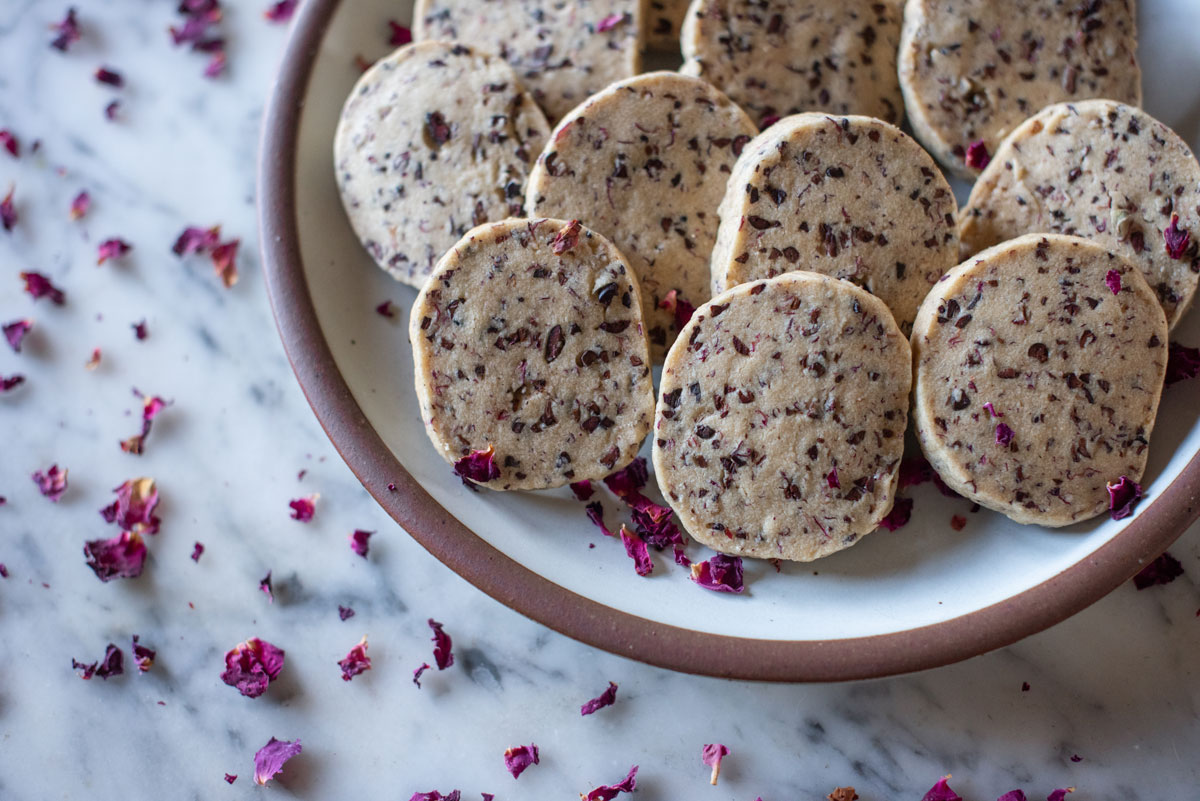
Aphrodisiac herbs are plants that elevate, nourish, or sustain our sexual or sensual desires. How is this magic aroused in the body? Herbal aphrodisiacs work in varied and complex ways—while some are known to enhance libido and improve sexual function, others bring us into states of passion through more subtle channels.
For example, some herbal aphrodisiacs widen our blood vessels and stimulate blood circulation, thus moving more energy, oxygen, and nourishment into our pelvis and heart. Other herbs help us relax, making us feel more open and receptive to intimacy. Some herbs support the release of blissful compounds produced by our bodies when we are in love or experiencing sensual pleasure.1
All of which is to say, herbal aphrodisiacs are nuanced—finding the right ones for you (or your loved one) can be an exciting experience.
Our Herbal Aphrodisiac Shortbread Recipe introduces four delectable and desire-inducing herbs:
- Maca (Lepidium meyenii) is an adaptogen that enhances libido, improves sexual performance, and releases anandamide (the “bliss molecule”) in the body.2
- Rose (Rosa spp.) is a stirring ally for nurturing intimacy with its skin-soft petals, alluring aroma, and ability to arouse the blood. It can be used as a nourishing tonic for awakening the libido and thawing sexual frigidity.
- Vanilla (Vanilla planifolia) is an orchid family botanical whose aroma is known to induce arousal, relaxation, and sensuality. It’s a classic ingredient in folkloric love potions and amorous confections.
- Cacao (Theobroma cacao), like maca, releases bliss-inducing anandamides and infuses the body with a sense of pleasure.2 It also nourishes the heart and energizes the body in anticipation of sensual moments.3
To go deeper with herbal aphrodisiacs, we highly recommend Kimberly Gallagher’s book, Aphrodisiac: The Herbal Path to Healthy Sexual Fulfillment and Vital Living.
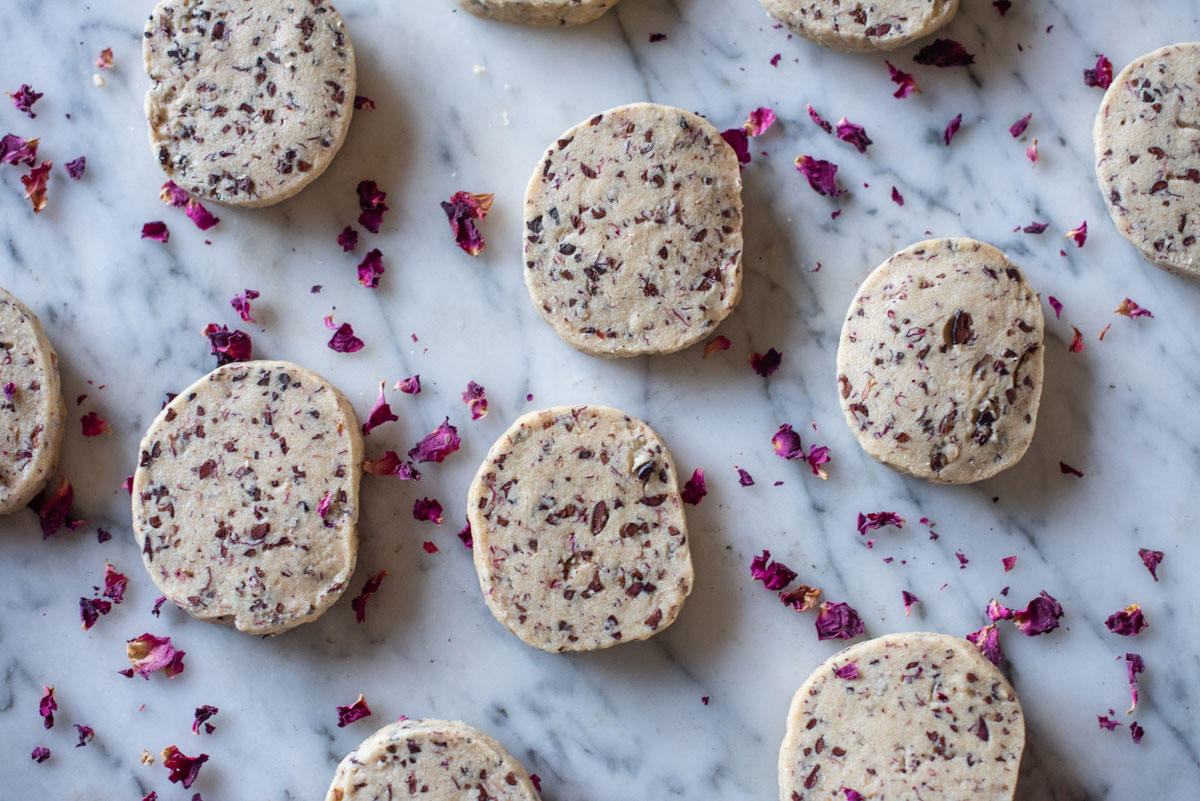

Herbal Aphrodisiac Shortbread Cookies
Ingredients
- 2 sticks unsalted butter , room temperature
- ½ cup powdered sugar
- 2 cups all-purpose flour
- 1 teaspoon salt
- 2 teaspoons powdered maca root
- 1 teaspoon vanilla extract
- ¼ teaspoon food-grade rose water*
- ½ cup cacao nibs
- ½ cup dried rose petals
Instructions
- In a stand mixer, cream together the butter and powdered sugar until fluffy and well-incorporated.
- Add flour, ½ cup at a time, and mix until just combined.
- Add salt, maca powder, vanilla extract, and rose water. Mix.
- Add cacao nibs and rose petals, gently mixing until they’re dispersed throughout the dough.
- Shape dough into a log about 10 inches long, making sure to pack tightly to prevent any holes. Roll to round out any edges. Refrigerate for at least 1 hour and up to 3 days. If doubling the recipe, make 2 logs and follow the instructions in Step 7 for both logs.
- When you’re ready to bake the cookies, preheat the oven to 350°F (177°C).
- Using a sharp knife, divide the log into 24 equal pieces by first cutting the log into quarters. Then, cut each quarter in half. Finally, cut each of these 8 pieces into 3 cookies.
- Bake on a parchment-lined baking sheet for 15-17 minutes or until lightly golden. These cookies don’t spread, so they can be baked closely together.
- Serve immediately or store in an airtight container for up to two weeks.
Notes
Looking for more arousing recipes?
Lavender
Chocolate Truffles
Prepare to be enchanted by the allure of these Divinely Naughty Lavender Truffles.
Ashwagandha Vanilla Ghee
This herbal-infused ghee is calming, nourishing, and warming to the heart and body.
Pomegranate Molasses Butter
Elevate your breakfast toast and tapas trays with this smooth and fruity spread.
References
- Pino-Figueroa A, Vu H, et al. “Mechanism of Action of Lepidium meyenii (Maca): An Explanation for Its Neuroprotective Activity.” Am J Neuroprotec Neuroregen. 2011.
- Gallagher K. Aphrodisiac: The Herbal Path to Healthy Sexual Fulfillment and Vital Living. Hay House; 2021.
- Sinadinos C. The Essential Guide to Western Botanical Medicine. Christa Sinadinos; 2020.
Meet Our Contributors:
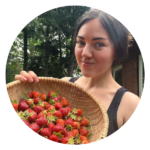
SARAH SNYDER grew up in a small wooded town outside of Charlotte, NC. She studied music in college before moving to Asheville, NC to study pastry arts. Here she developed a love for plants, gardening, medicine-making, and homesteading. She has worked as a photographer, pastry chef, journalist, and social media manager.
Most days you can find her reading with her dog and a mug of tea, getting the perfect shot of her garden, trying out yet another craft, or wrangling chickens back into the yard.

MEGHAN GEMMA is one of Chestnut School of Herbal Medicine's primary instructors through her written lessons, and is the principal pollinator of the school’s social media community—sharing herbal and wild foods wisdom from the flowery heart of the school to an ever-wider field of herbalists, gardeners, healers, and plant lovers.
She has been in a steady relationship with the Chestnut School since 2010—as an intern and manager at the Chestnut Herb Nursery; as a plant-smitten student “back in the day” when the school’s programs were taught in the field; and later as a part the school’s woman-powered professional team. Meghan lives in the Ivy Creek watershed, just north of Asheville, North Carolina.
Interested in becoming a contributor?
© Chestnut School of Herbal Medicine and chestnutherbs.com, 2011-2024. Unauthorized use and/or duplication of this material without express and written permission from this site’s author and/or owner is strictly prohibited. Excerpts and links may be used, provided that full and clear credit is given to Chestnut School of Herbal Medicine and chestnutherbs.com with appropriate and specific direction to the original content.
Want to take a deeper dive into medicinal herbs and their uses?
Our 1,000-hour Herbal Immersion Program is the most comprehensive handcrafted online herbal course available, covering botany, foraging, herb cultivation, medicine making, and therapeutics.
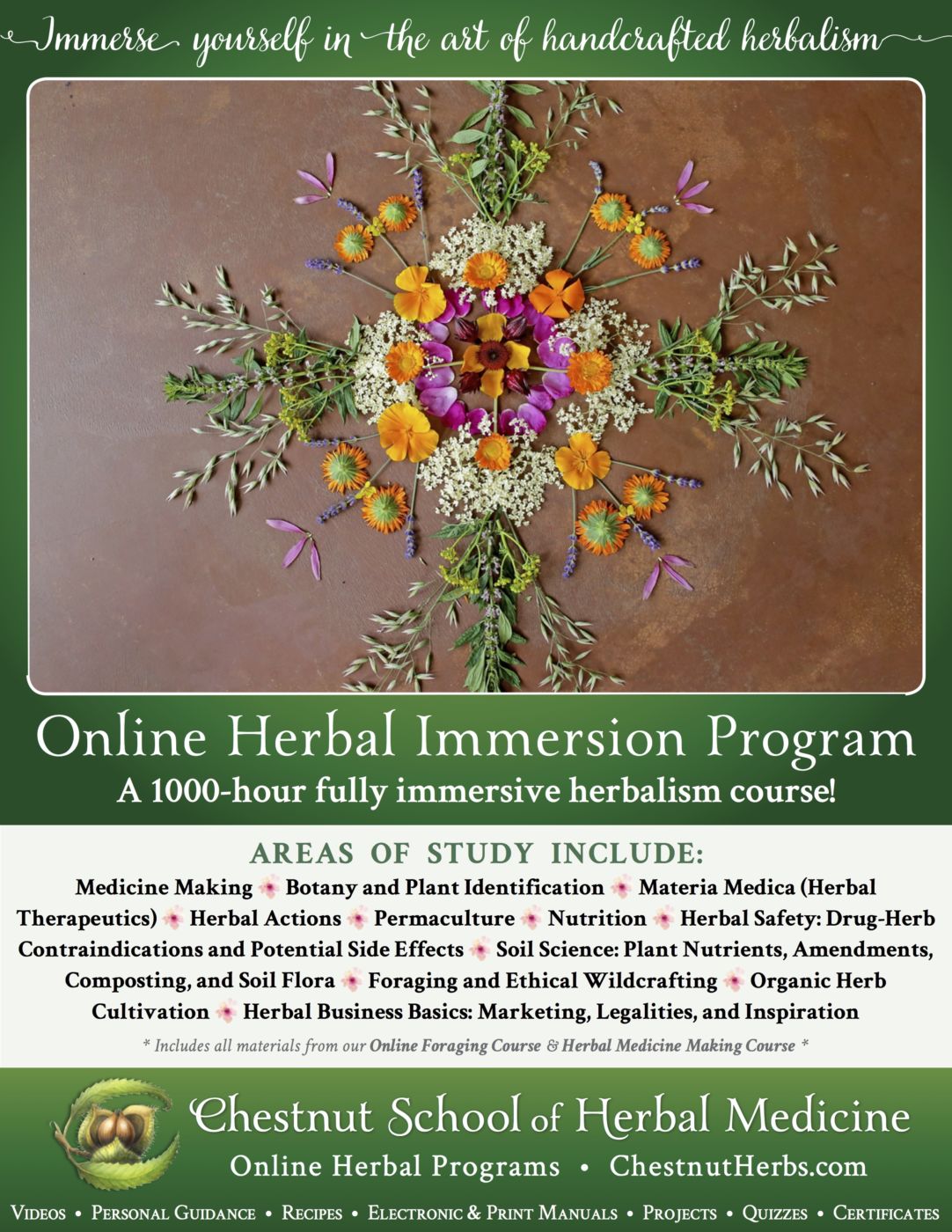
The post Herbal Aphrodisiac Shortbread Cookies appeared first on Chestnut School of Herbal Medicine.
]]>The post Monitoring Breast Cancer Progression with Tumor Markers appeared first on Health and Natural Healing Tips.
]]>The post Fat-Burning Workouts and Supplements: A Perfect Duo for Results! appeared first on Health and Natural Healing Tips.
]]>The post 5 Mistakes to Avoid When Caring for a Senior Loved One appeared first on Health and Natural Healing Tips.
]]>Ashwagandha, Lavender, and Vanilla: The Dreamiest Herbal-Infused Ghee Recipe
Recipe and Photography by Marion Hearth of Goddess Ghee
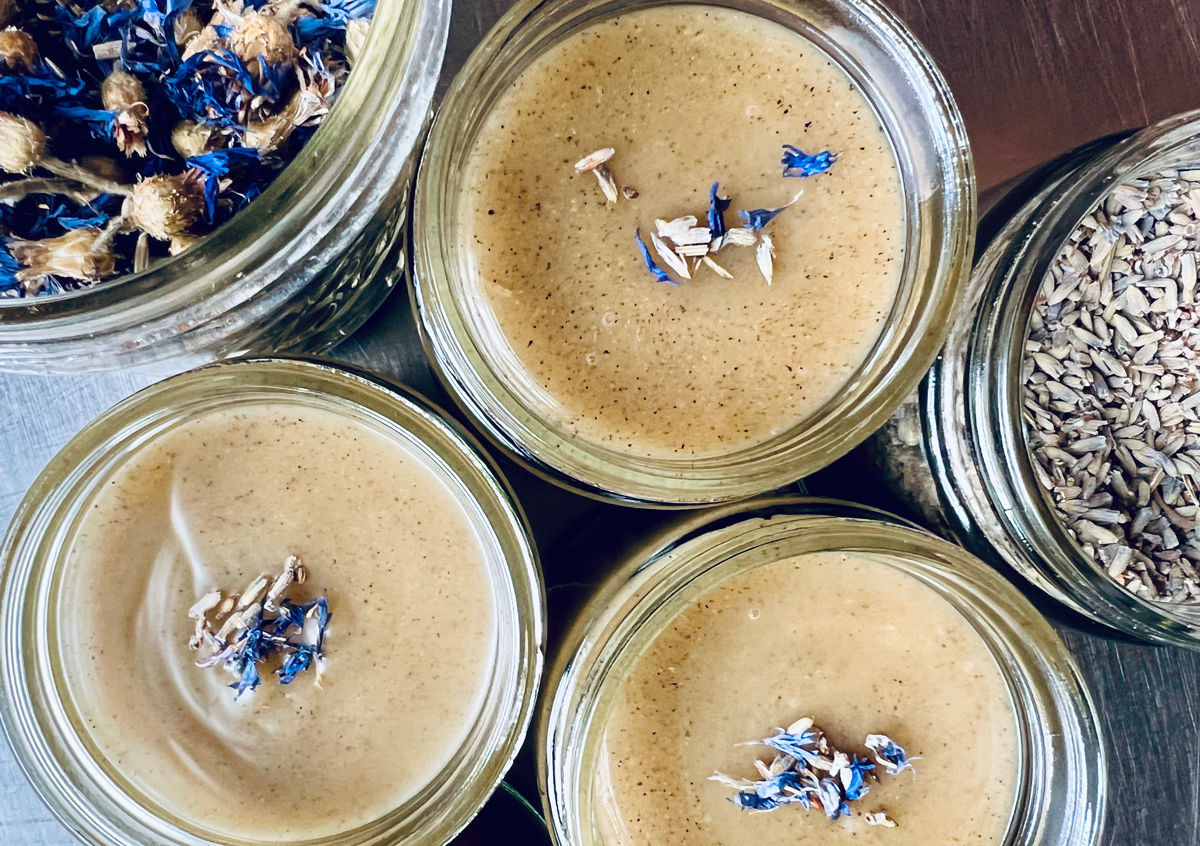
Ashwagandha, Lavender, and Vanilla herbal-infused ghee.
Preparing herbal-infused ghee recipes is a wonderful way to enjoy herbs and easily incorporate them into your daily rhythm.
There are several methods to craft medicinal ghee, but in this recipe, we’ll follow a simple formula: infusing dried herbal powders into hot ghee, followed by cooling and whipping the herbs and ghee together. Beware of herbal-infused ghee recipes that cook the herbs with the butter during the ghee-making process; this method burns the delicate herbs and spices.
This article features a recipe for Ashwagandha, Lavender, and Vanilla-Infused Ghee. Ashwagandha is a strengthening tonic herb and calming adaptogen that has been used in Ayurvedic medicine to fortify health and nurture a long life. Its nutty, musky flavor is complemented by lavender’s floral aroma and vanilla’s stirring warmth in this ghee.
Note that any herbal powders and ground spices can be infused into ghee—this recipe can be adapted to incorporate all kinds of herbal combinations!
For more in-depth medicinal ghee methods (including using fresh plants from your garden) or to learn how to make amazing ghee at home, check out Goddess Ghee’s Online Class: Crafting Culinary + Medicinal Ghee.

Ghee infused with cacao powder is poured into jars at Goddess Ghee.
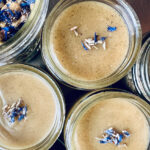
Ashwagandha, Lavender, and Vanilla Herbal-Infused Ghee Recipe
Equipment
- Small saucepan
- Mason jar with lid
Ingredients
- 16 ounces ghee - Make it fresh or purchase from a high-quality source such as Goddess Ghee.
- ¼ cup ashwagandha powder (Withania somnifera)
- 1 tablespoon lavender powder (Lavandula spp.)
- 1 teaspoon vanilla bean powder (Vanilla planifolia)
Instructions
- Heat the ghee in a small saucepan over a medium flame (unless you’ve just made fresh, hot ghee) until it’s hot and translucent.
- Turn off the heat.
- Whisk in the powdered herbs and let them steep with a lid on until the ghee comes to room temperature (around 75°F). The ghee should start to turn from clear to opaque and become thicker but still be thin enough to pour.
- If the mixture cools too much (gets hard), you can put it back on a low flame until it’s warm enough to stir again.
- If you’re in a hurry you can speed up the cooling process by setting the saucepan in a shallow bowl of ice water and slowly stirring the ghee until it thickens. (Be careful not to get any water in the ghee.)
- Once the herb and ghee blend has cooled, use a whisk and whip the mixture until the herbal powders are suspended in the ghee. Then pour the herb-infused ghee into a clean, dry mason jar. Cover with a lid and place the jar in the fridge to continue cooling. This will help the herbs stay suspended in the ghee without separating.
- When the mixture becomes solid, you may take it out of the fridge and let it come back to room temperature. You’ll want to keep the lid on so that condensation doesn’t enter the jar during the process. At this point, your herbal ghee is “cured” and will stay solid below 80°F.
- Store in a cool, dark place such as the pantry or medicine cabinet.
Notes
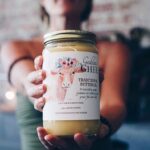 Recipe provided by Goddess Ghee, a mama-founded & women-run small business in the heart of the Appalachian Mountains near Asheville, NC. Goddess Ghee believes in the wisdom that “food is medicine,” and they honor the ancient Ayurvedic ritual of crafting grass-fed ghee as a medicine as well as a delicious food. They are committed to making the highest quality ghee that is commercially available and offering unique herbal ghee potions. You can purchase Goddess Ghee via their online shop and follow them on Instagram for ghee inspiration, new ghee releases, and class offerings.
Recipe provided by Goddess Ghee, a mama-founded & women-run small business in the heart of the Appalachian Mountains near Asheville, NC. Goddess Ghee believes in the wisdom that “food is medicine,” and they honor the ancient Ayurvedic ritual of crafting grass-fed ghee as a medicine as well as a delicious food. They are committed to making the highest quality ghee that is commercially available and offering unique herbal ghee potions. You can purchase Goddess Ghee via their online shop and follow them on Instagram for ghee inspiration, new ghee releases, and class offerings.Meet Our Contributor:

MARION HEARTH birthed Goddess Ghee in 2015 after she asked herself, “What am I already creating that I can make more of to share with my community?”. Ghee was the obvious answer. Marion had been making ghee each moon cycle since the birth of her first baby just two years earlier, and ghee was the one staple in her kitchen that she didn’t let run dry. Marion began selling at farmers markets with a baby wrapped on her back and a toddler running around – not imagining that Goddess Ghee would one day be in kitchens and home apothecaries around the country.
Interested in becoming a contributor?
© Chestnut School of Herbal Medicine and chestnutherbs.com, 2011-2024. Unauthorized use and/or duplication of this material without express and written permission from this site’s author and/or owner is strictly prohibited. Excerpts and links may be used, provided that full and clear credit is given to Chestnut School of Herbal Medicine and chestnutherbs.com with appropriate and specific direction to the original content.
Want to take a deeper dive into medicinal herbs and their uses?
Our 1,000-hour Herbal Immersion Program is the most comprehensive handcrafted online herbal course available, covering botany, foraging, herb cultivation, medicine making, and therapeutics.

The post Ashwagandha, Lavender, and Vanilla: The Dreamiest Herbal-Infused Ghee Recipe appeared first on Chestnut School of Herbal Medicine.
]]>Risks of Using AI in Herbalism
Written by Juliet Blankespoor
Art by Astra Intergalactica
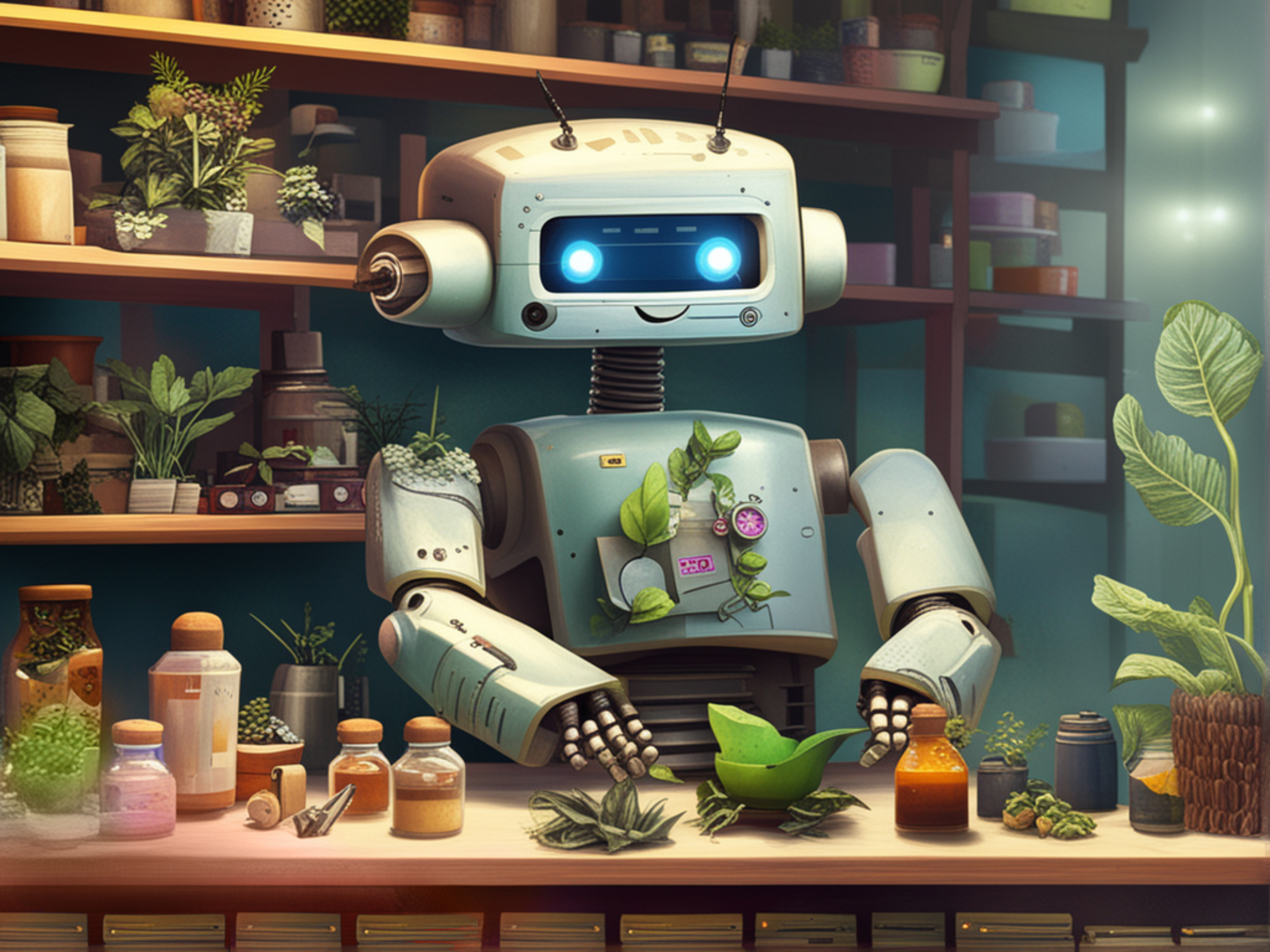
An AI-generated image of a robot in an herbal apothecary.
Like it or not, artificial intelligence (AI) is now interwoven into the basic technology we use daily. Like all technology, it’s only as helpful or harmful as the intentions of the people using it. Mostly, we hear about the dangers of using AI and how it can be used in nefarious ways, yet it also offers promising solutions to some of the world’s most complex problems. In this article, we’ll primarily explore the risks of using AI in herbalism, especially herbal education.
As a seasoned herbalist and longtime plant enthusiast, I’m concerned about how machine learning will affect herbal medicine’s ancient and nuanced practice. The richly woven world of herbalism challenges this electronic emissary in unique ways. So, let’s explore why AI may not be the ideal guide for blossoming herbalists and why traditional learning grounds, like the Chestnut School of Herbal Medicine, continue to be vibrant havens of wisdom.
I’m certainly no authority on artificial intelligence, but I’ll use my research and outlook as an expert herbal author and instructor throughout this article. And as a reformed technophobe–who lived off the grid in my twenties with no running water, electricity, or a phone, let alone a computer–who now owns a technology-based business, I have a unique perspective.
Here, we’ll explore how AI platforms might complement formal herbal education and research and how artificial intelligence can support small herbal businesses. I’ll share what to look out for when learning about herbalism and my tips for finding trusted herbal teachers, authors, and schools. Finally, I’ll share my favorite herbal resources so you know where to find dependable information.
There is an inextricable link between learning herbal medicine from AI and unreliable Internet sources: both can be inaccurate, untrustworthy, and fragmented.
When applied to search engines, artificial intelligence looks for expert sources to find the most accurate information. Unfortunately, most of the highest-ranking sites covering a specific health condition or herb are not written by experienced herbalists. And AI can take liberties in populating information. In its current iteration, artificial intelligence sometimes fills in the gaps with falsehoods.
I put this to the test, asking a popular emergent AI to write my bio, and it inserted fallacies sandwiched between accuracies: it gave the wrong title of my book and misreported my herbal education. Disconcertingly, the human mind is befuddled about reliability when truths are intermingled with falsehoods. And our nation’s educational system isn’t renowned for teaching critical thinking and how to fact-check from non-biased sources. We already know how easily swayed humans are to misinformation, especially when falsehoods are sprinkled with veracity.
We tried the same experiment with another herbalist author, and the AI supplied inaccuracies about her history and current employment. I know an AI doesn’t have a genuine personality, but I couldn’t help feeling like it was eerily confident while delivering cavalier falsehoods. Artificial intelligence can be trained to have a persona, or “voice,” which can make them feel all the more human and make actual humans more vulnerable to manipulation.

An AI-generated image of Juliet Blankespoor, founder of Chestnut School of Herbal Medicine.
Popular medical or gardening sites are often the first places AI will pull its herbal information from. The authors of these articles are typically not experts in herbal medicine, let alone herbal aficionados. Instead, they rely on cursory research from other non-experts and search engine optimization expertise (which brings their article to the number one spot). Compounding the issue, AI may pull from many sources, resulting in a smorgasbord of details with apparent holes in knowledge and even inconsistencies.
Now that we’ve established the risks of using AI in herbalism due to populating data from unreliable sources, let’s discuss how this relates to online research in general. Suppose you’re conducting herbal research using the highest-ranking results from search engines (which have already used AI in their algorithms for years and will continue to rely on it more in the future). In that case, you’ll find spotty information that lacks vital details, such as the proper plant part used, the most effective preparations, and safety considerations. Machine learning will also miss the most common confusions and questions the general public will have. For all these reasons, it’s crucial you seek herbal information from trusted sources.

An AI-generated image of a computer chip intertwined with herbs.
The drawbacks of relying on AI to learn herbalism include a need for more safety information and personalized guidance.
Artificial intelligence collects data, analyzes patterns, and provides information based on these patterns. However, when it comes to herbalism, the nuances and complexities of the field can often be lost in translation. Take, for instance, the herb elderberry (Sambucus nigra var. canadensis). While machine learning could correctly tell you that elderberry has antiviral properties, it might fail to warn you that the raw seeds contain cyanogenic glycosides, which can cause digestive distress if not correctly prepared.
Preparing a potent calendula (Calendula officinalis) oil or tincture, for instance, requires an understanding of not only its properties but also how to extract its medicinal benefits efficiently. An AI might suggest using only the petals, neglecting the flower heads’ green bases (involucres), where most of its anti-inflammatory and antimicrobial resins reside. It could also fail to mention that calendula is unsafe in pregnancy due to its stimulating effect on the uterus. This is because artificial intelligence pulls its data from the highest-ranking site, which almost always does not come from an herbalist. Try searching for “calendula’s medicinal properties” and clicking on the top result: you’ll likely land on a popular hospital system or basic popular medical information site. These articles are written with SEO in mind and are typically not written by experts in the field.
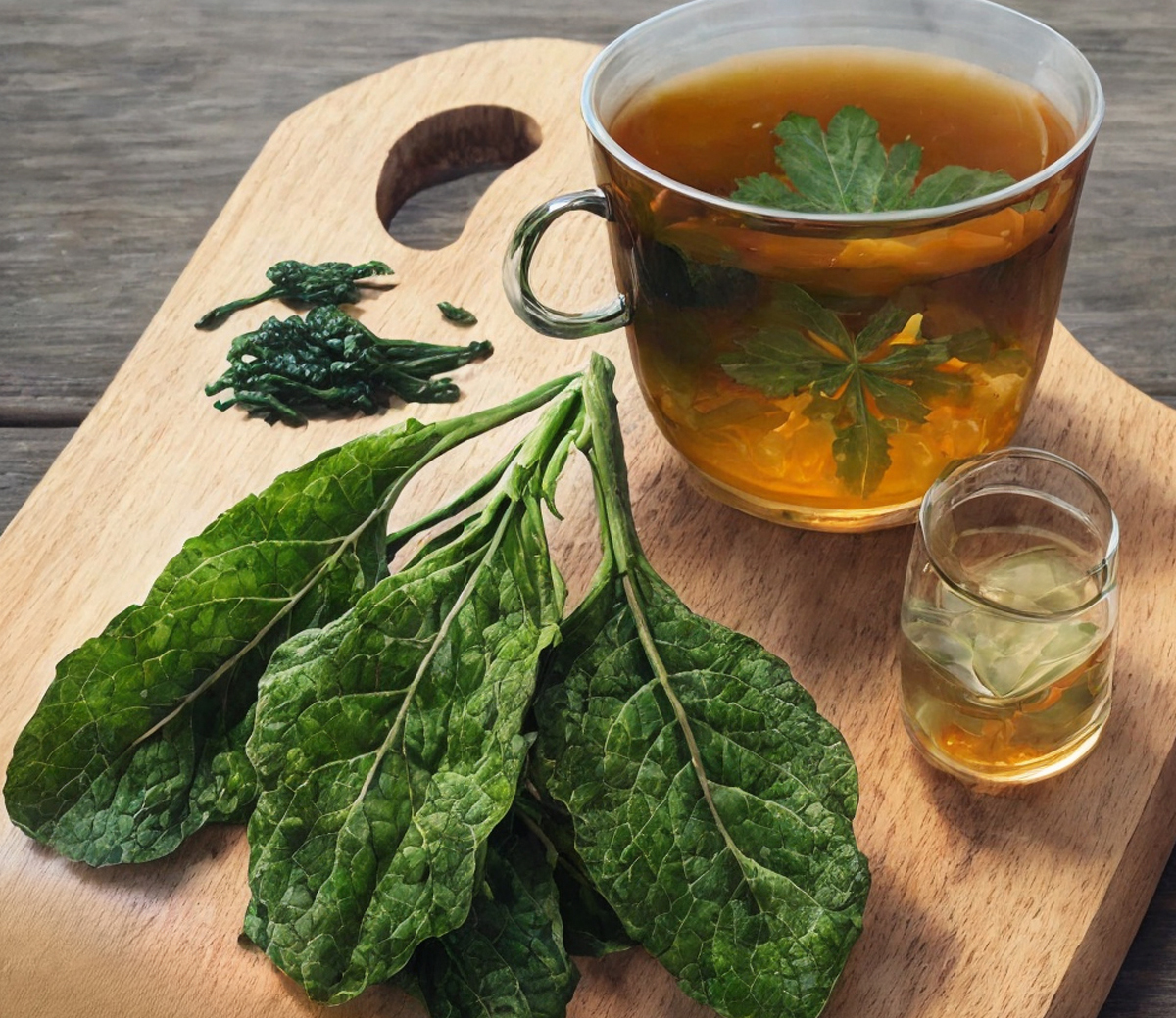
An AI-generated image of comfrey tea shows some inaccuracies.
Here’s another example: an AI might suggest using comfrey (Symphtum officinale) tea internally for wounds, not indicating that internal consumption of comfrey can be toxic to the liver due to the presence of pyrrolizidine alkaloids. Likewise, artificial intelligence might suggest using St. John’s Wort (Hypericum perforatum) for depression without explaining that it can interact dangerously with many prescribed drugs, including hormonal birth control and many psychiatric medications.
Herbalism is not merely a catalog of plants and their effects. It demands a deep understanding of different herbs and how to utilize them effectively and safely. It also includes the nuances of humans’ constitutions and how an individual herb might affect an individual based on whether their body runs hot or cold, warm or dry. Experienced herbalists also know where to find the most up-to-date information on drug-herb interactions. This level of comprehension and wisdom is born from years of hands-on experience and learning, something an AI can’t replicate.
Watch out for the potential pitfalls of AI and manipulative herbal education tactics.
I recommend avoiding sites that don’t include sources or citations when discussing scientific information. Also, steer clear of sites (or AI responses) that are absolutist (present perspectives in a black-and-white, oversimplified manner) or overly sensationalist. Herbalists who blame all of an individual’s disease or ill health on one’s thinking or one’s diet are often not considering the complete picture: genetics, epigenetics, environmental pollution, mental disorders, systemic marginalization, limited access to essential resources, or the simple fact that bodies are fallible and mortal.
This isn’t to say that the mind and diet don’t affect health. Instead, I caution you to avoid herbalists and natural health experts who don’t consider the full scope of factors affecting health and wellbeing.
Another red flag: authors who frequently present themselves as the sole “owner” of information on specific remedies. These charismatic natural health “experts” align themselves with their followers by sharing unique and “secret” information. They present themselves as benevolent and generous imparters of previously unrevealed remedies or “cures” despite the alleged threat to their platform from authoritarian government agencies or the censoring medical establishment. (I’m not saying censorship or greed-based policies aren’t real, but if it’s always happening, and the “expert” is the humble superhero saving you from medical authoritarianism, it’s a classic cult-leader manipulative tactic, which is sadly present in the natural health community.)

An AI-generated image of an elephant in a field of lavender includes purple ears.
Machine learning is only as reliable as the humans supplying and using the information.
Now that we’ve established the risks of using AI in herbalism, let’s look at how you can find reliable herbal medicine information on the Internet.
First, here’s the type of information a reliable herbal source will include:
- The scientific name of an herb
- The plant part(s) used
- If an herb is rare or endangered
- Dosage and preparation (including the best preparations for specific constituents in a given herb)
- How long a person can safely consume an herb (examples include: every day, only for two weeks, only take as needed)
- Safety information such as possible side effects, drug-herb interactions, and which types of people should avoid a particular herb (such as pregnant people, young children, people with diabetes, etc.)
- If it’s a wild-gathered herb, it will include identifying features and possible look-alikes
- Sources and citations
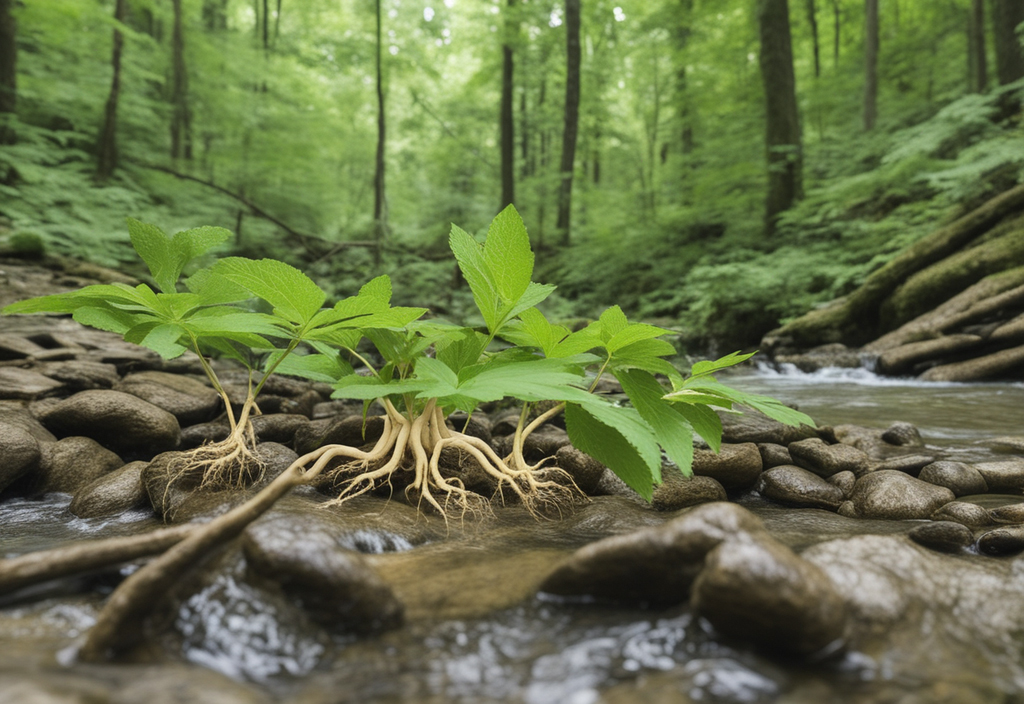
An AI-generated image of ginseng growing near a stream displays an odd root structure.
Here are some of my favorite sites and organizations for reliable herbal information:
- Blog Castanea
Our very own blog! Chestnut School of Herbal Medicine’s blog is written primarily by Juliet Blankespoor and Meghan Gemma, along with a lovely smattering of trusted guest herbalists. You’ll find beautiful and engaging materia medica, herbal recipes, and lists of our favorite herbal medicine resources, all written with our signature silliness and botanical obsession. - Aviva Romm, MD
Dr. Aviva Romm—an MD, herbalist, and midwife—is a legendary herbalist and is widely considered one of our nation’s top experts on holistic medicine. Her work focuses on hormonal health, women’s health, childbirth, stress, supplements, and sexuality. If you’re looking for a trusted source that marries Western medicine, social justice, intersectional feminism, and holistic health, look no further! - Tieraona Low Dog’s Blog
Dr. Tieraona Low Dog is an award-winning author, integrative medicine physician, and Indigenous herbalist who teaches and writes about traditional healing, earth connection, herbal medicine, supplements, and medicine making. - Herbs with Rosalee
One of the best blogs for beginning herbalists, Rosalee de la Forêt writes about herbs in an approachable manner. You’ll find an extensive library of trusted articles about herbs, recipes, and podcasts featuring detailed explorations of one herb. - Kitchen Curandera
Felicia Cocotzin Ruiz is an inspiring kitchen curandera, Indigenous foods activist, and natural foods chef. Her blog features basketfuls of delectable herbal and wild foods recipes. Don’t miss her *gorgeous* book, Earth Medicines: Ancestral Wisdom, Healing Recipes, and Ancestral Wisdom from a Curandera. - Mountain Rose Herbs Blog
This treasured herbal supplier also has a fantastic blog—featuring plentiful body care, beverage, and other herbal recipes. Their catalog doubles as an herbal publication with delightful articles, and they even have a podcast, Herbal Radio. - American Botanical Council
If you’re looking for a scientific and detailed approach to herbal medicine, ABC is a longtime trusted source with searchable databases. The council publishes the quarterly Herbal Gram, focusing on medical herbalism and the herbal industry. - American Herbalists Guild
The AHG is the leading professional association for herbal practitioners in the United States. Membership includes a journal written by diverse herbal experts and engaging recorded lectures on herbal medicine topics.
The Chestnut School of Herbal Medicine’s curated lists of trusted herbal resources (personally vetted herbal books, podcasts, organizations, and publications):
- Chestnut School’s Herbal Resources: Blogs, Conferences, Organizations, and Publications
- Chestnut School’s Curated Lists of Best Herbalism Books
- How to Start Your Herbal Career: The Ultimate Guide for Budding Herbalists
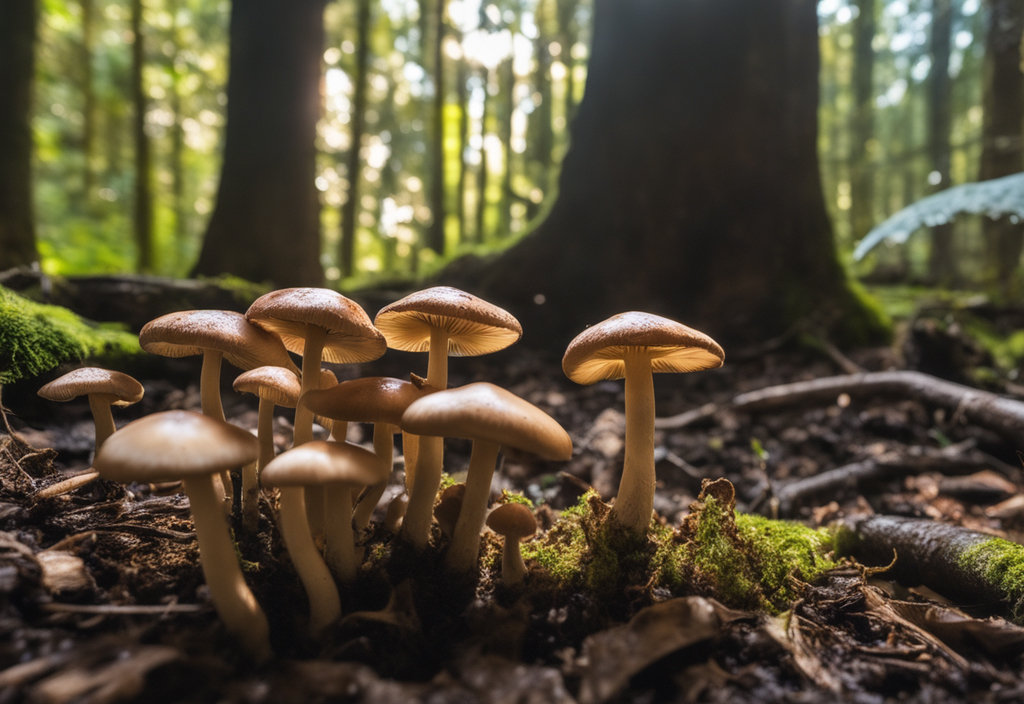
An AI-generated image of mushrooms growing in a forest.
The benefits of structured learning with experienced and trusted herbalists remain the best way to learn herbal medicine.
Herbalism is more than just a list of plants and their properties—it’s a dance with nature. This intimate tango is born of years of patient practice and tangible touch, a duet that AI can’t quite master.
If your passion for plant medicine runs deep, I highly recommend finding an herbal instructor, either in-person or online. Despite its advanced algorithmic learning, AI can’t replace the invaluable mentorship traditional herbalism schools provide. For example, the Chestnut School of Herbal Medicine offers a comprehensive approach to learning. We not only teach the science behind herbs but also their traditional uses, safety precautions, and the best preparation methods. This holistic approach helps students grasp the why and how of herbal medicine, not just the what.
Our instructors come from diverse backgrounds, offering a well-rounded perspective that includes traditions from around the globe. Our approach to herbal medicine is bioregional: we encourage cultivating your own medicine and relying on the abundant (often invasive) healing herbs growing right outside your door.
You’ll also receive expert feedback on your coursework, ensuring that you grasp complex subjects like botany and herbal therapeutics. Our staff is available every day of the week to answer medicine-making, gardening, or foraging questions. This invaluable guidance cannot be provided through machine learning or artificial intelligence. Of course, we are not the only herbalism school, and others may be a better fit due to your professional goals, finances, location, or wanting an in-person instructor.
We have created the most comprehensive list of herbal schools for this very reason. Picking the right school can be daunting, so we created a guide to help you get an herbal education.
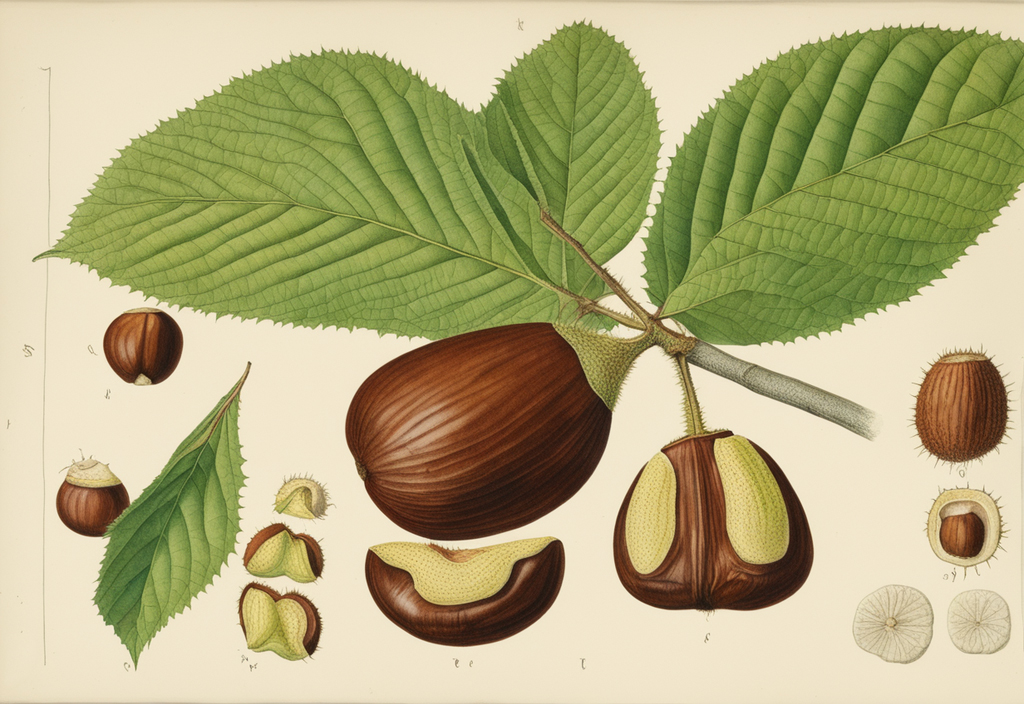
An AI-generated botanical illustration of chestnut features many inaccuracies.
Real-life herbalists vastly outperform artificial intelligence as a source of herbal instruction.
One of the benefits of formally studying herbal medicine is a well-thought-out curriculum that leads you through the journey from novice to expert. An excellent teacher will start with basic concepts and core skills and build upon that foundational knowledge deliberately.
Established herbal programs offer feedback along with ways to help you refine and integrate learning. For example, at the Chestnut School, we provide review questions at the end of each module. After successfully reviewing the material, you move on to a quiz and experiential projects to infuse the learning deep into your body and mind. Educational courses that are intentionally designed ensure your education is thorough so you can safely use herbs at home or embark on an herbal profession, depending on your goals.
Artificial intelligence can complement this learning type but cannot replace it. It falls short without the nuances of offering tailored feedback and a thorough curriculum. Here are a few examples of how personal instruction aided our students’ journey as burgeoning herbalists:
“The education and guidance I received from the Chestnut School of Herbal Medicine gave me the confidence to start my own practice making tea blends, tinctures, and other products. I feel empowered to offer my clients advice to improve their health naturally.” ~ Rita L.
“I have always been intimidated by experimenting in the kitchen, but after finding the Hibiscus Ice Cubes so easy and a delight, it created a spark within to do more. I ended up making countless recipes, which created so much joy, confidence, and laughter within the home and helped with my overall mental well-being. As an individual who identifies as BIWoC, this past year and the events that occurred on 6 Jan have made it quite difficult to find peace and hope. These projects have been a lifesaver during this time, and I am so thankful for the unexpected joy that this has brought into my home.
I cannot wait to build upon my skills in your other courses and am beyond grateful for the Chestnut School of Herbal Medicine. This course has been a completely amazing and transformative experience. It has touched my life in a way that has been completely unexpected, and I have already been able to apply my knowledge thus far to help bring joy and wellness to those in the marginalized communities that I serve.” ~ Nicole D.
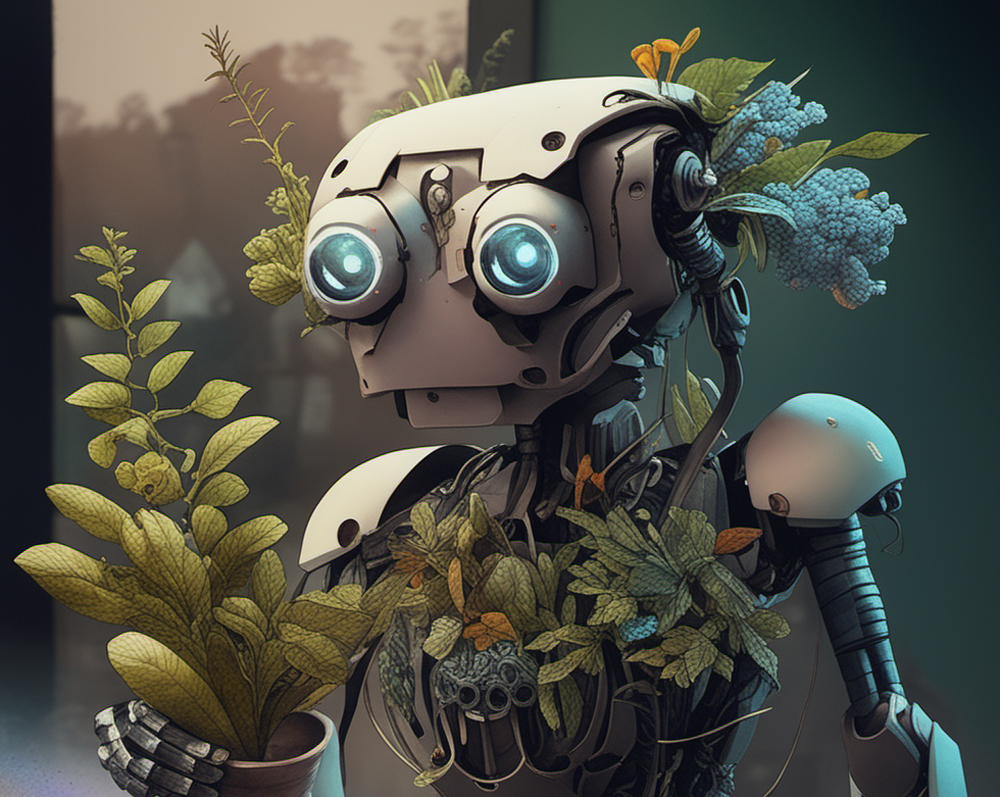
An AI-generated image of a robotic herbalist who appears forlorn and confused. This robot should enroll at Chestnut School of Herbal Medicine.
Despite its downsides, AI has valuable applications in herbal businesses, including search engine optimization (SEO) and copywriting.
For any small business, time is often in short supply. If you want your customers or clients to find you on the Internet, it’s imperative you pay attention to SEO, as it gives you a leg up with search engines. As part of your SEO strategy for herbalism, you’ll need to know what people are searching for and which words they use. You’ll then need to incorporate these terms into your website, social media, and blog. You can use AI for SEO.
In full disclosure, we used AI to help us create the outline for this article and find the key terms people would be searching for (I’d like folks to be able to find and read my articles!). We even used a few snippets of AI-generated writing as a jumping-off point. And, if you haven’t guessed yet, Astra Intergalactica—in tandem with Chestnut’s resident AI expert Amanda Lael Davis—created the AI-generated imagery adorning this blog.
In our grand ballroom of the digital age, finding harmony is vital. Let’s keep in mind that the soul of herbalism thrives on a more personal connection— with the plants, the Earth, and each other.
Meet The Green Mastermind Behind Blog Castanea

JULIET BLANKESPOOR is the founder, primary instructor, and Creative Director of the Chestnut School of Herbal Medicine, an online school serving thousands of students from around the globe. She's a professional plant-human matchmaker and bonafide plant geek, with a degree in botany and over 30 years of experience teaching and writing about herbalism, medicine making, and organic herb cultivation. Juliet’s lifelong captivation with medicinal weeds and herb gardening has birthed many botanical enterprises over the decades, including an herbal nursery and a farm-to-apothecary herbal products business.
These days, she channels her botanical obsession through her writing and photography in her online programs, on her personal blog Castanea, and in her new book, The Healing Garden: Cultivating and Handcrafting Herbal Remedies. Juliet and her family reside in a home overrun with houseplants and books in Asheville, North Carolina.
Interested in becoming a contributor?
© Chestnut School of Herbal Medicine and chestnutherbs.com, 2011-2024. Unauthorized use and/or duplication of this material without express and written permission from this site’s author and/or owner is strictly prohibited. Excerpts and links may be used, provided that full and clear credit is given to Chestnut School of Herbal Medicine and chestnutherbs.com with appropriate and specific direction to the original content.
Want to take a deeper dive into medicinal herbs and their uses?
Our 1,000-hour Herbal Immersion Program is the most comprehensive handcrafted online herbal course available, covering botany, foraging, herb cultivation, medicine making, and therapeutics.

The post Risks of Using AI in Herbalism appeared first on Chestnut School of Herbal Medicine.
]]>Calendula Tulsi Chai Recipe
Written and Photographed by Juliet Blankespoor

Preparing the Calendula Tulsi Chai recipe.
The following Calendula Tulsi Chai recipe is a special excerpt from my book, The Healing Garden: Cultivating and Handcrafting Herbal Remedies—a detailed herbal reference, decadent cookbook, and garden manual all in one. It’s written for home gardeners and anyone looking to bring the healing benefits of herbs into their garden, kitchen, and apothecary. Copies can be purchased wherever books are sold. You can find more details on the book and its accompanying bonuses at the Healing Garden Gateway.
This calendula tulsi chai recipe is wonderfully spicy, warming, and immune-boosting.
Few beverages are as warming to the body and heart as chai, a spiced tea blend that originated in the Assam region of India at least 5,000 years ago. The blend traditionally features cardamom, cinnamon, ginger, star anise, black pepper, and cloves. My herbal take on classic chai is loaded with immune support and tastes fantastic with the additions of semi-sweet astragalus, earthy calendula, and enlivening tulsi.
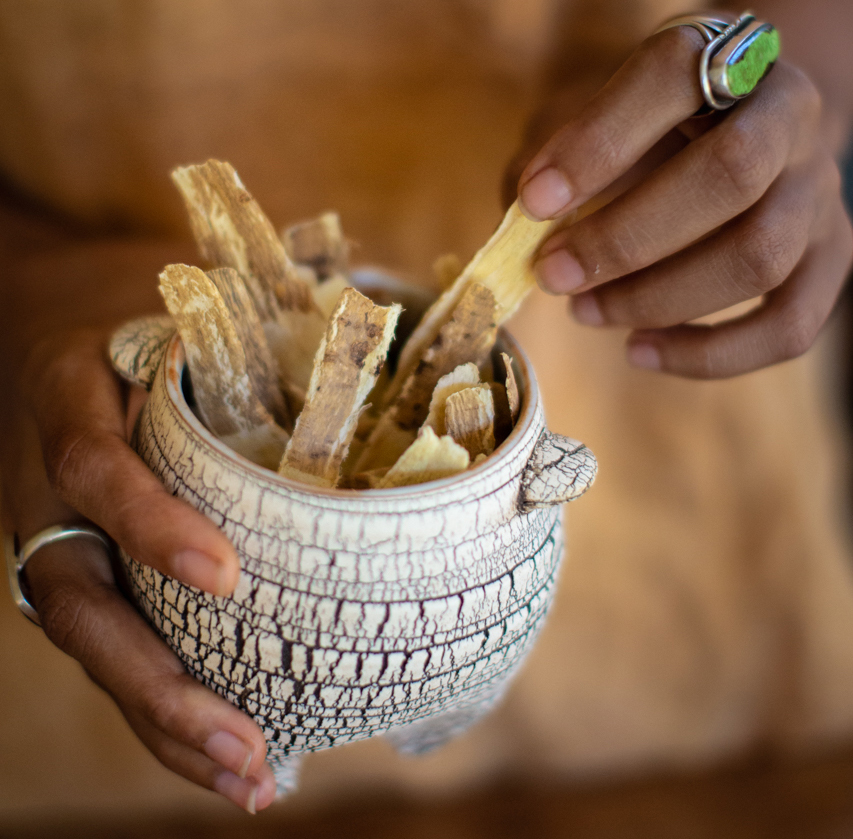
A jar of processed astragalus root.
Astragalus, calendula, and tulsi are herbal tonics for the lymphatic, nervous, and immune systems. The Calendula Tulsi Chai recipe will help ward off colds and flu during winter months. The aromatic botanicals in this chai—cinnamon, cloves, peppercorns, and ginger—keep the blood and lymph moving and are especially helpful for those who feel cold or sluggish. These pungent spices may be too heating and drying for those who run hot and have the potential to aggravate heartburn, peptic ulcers, and gastrointestinal heat. During warmer weather, dilute the concentrate with ice and your choice of milk for a refreshing summertime beverage.
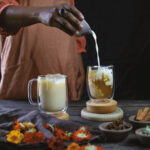
Calendula Tulsi Chai Recipe
Equipment
- Medium pot with lid
Ingredients
- 5 cups water
- 4 medium cinnamon sticks (Cinnamomum verum) or substitute 20 grams cinnamon bark chips.
- 12 slices dried astragalus root (Astragalus propinquus) or substitute 10 grams cut and sifted astragalus root.
- 1 ½ tablespoons cut and sifted dried ginger root (Zingiber officinale)
- 2 teaspoons hulled cardamom seeds (Elettaria cardamomum)
- 1 teaspoon black peppercorns (Piper nigrum)
- 2 small star anise pods (Illicium verum)
- 2 whole cloves (Syzygium aromaticum)
- ⅓ cup whole dried calendula flower (Calendula officinalis)
- 1 tablespoon packed dried tulsi leaf (Ocimum tenuiflorum)
- ¼ cup organic cane sugar, honey, or stevia, to taste - Optional
Instructions
- In a medium pot, combine the water with the cinnamon, astragalus, ginger, cardamom, peppercorns, star anise, and cloves.
- Bring to a boil, covered, and turn the heat down to simmer for 20 minutes.
- Turn off the heat and add the dried calendula flowers and tulsi leaves; stir.
- Infuse, covered, for 20 minutes, and then strain.
- If you prefer sweet chai, add the sugar after straining; stir well.
- Let cool, and store the chai concentrate in the refrigerator. Use within 4 days.
Notes
Pour the concentrate over a large cup of crushed ice with your choice of milk or cream. For a hot chai:
Dilute the concentrate with an equal part water and warm on the stove. Serve with your choice of milk or cream.
To learn more about the medicinal uses of the herbs in my Calendula Tulsi Chai recipe, visit our articles on:
Calendula
Calendula (Calendula officinalis) is one of the easiest herbs to grow and a highly versatile medicinal plant. It has been used internally and topically for centuries to heal wounds, burns, and rashes. Learn more about calendula.
Tulsi
Tulsi (Ocimum tenuiflorum), also known as holy basil, is revered for its spicy aroma, myriad medicinal uses, and enlivening nature. It is one of the most versatile medicinals when starting your home herbal apothecary. Learn more about tulsi.
Astragalus
Astragalus (Astragalus propinquus) root is an immunity booster with a sweet, beany flavor (it is in the legume, or bean, family, after all), making it easy to sneak into the diets of picky eaters. Learn more about astragalus.
Meet Our Contributor:

JULIET BLANKESPOOR is the founder, primary instructor, and Creative Director of the Chestnut School of Herbal Medicine, an online school serving thousands of students from around the globe. She's a professional plant-human matchmaker and bonafide plant geek, with a degree in botany and over 30 years of experience teaching and writing about herbalism, medicine making, and organic herb cultivation. Juliet’s lifelong captivation with medicinal weeds and herb gardening has birthed many botanical enterprises over the decades, including an herbal nursery and a farm-to-apothecary herbal products business.
These days, she channels her botanical obsession through her writing and photography in her online programs, on her personal blog Castanea, and in her new book, The Healing Garden: Cultivating and Handcrafting Herbal Remedies. Juliet and her family reside in a home overrun with houseplants and books in Asheville, North Carolina.
Interested in becoming a contributor?
© Chestnut School of Herbal Medicine and chestnutherbs.com, 2011-2024. Unauthorized use and/or duplication of this material without express and written permission from this site’s author and/or owner is strictly prohibited. Excerpts and links may be used, provided that full and clear credit is given to Chestnut School of Herbal Medicine and chestnutherbs.com with appropriate and specific direction to the original content.
Want to take a deeper dive into medicinal herbs and their uses?
Our 1,000-hour Herbal Immersion Program is the most comprehensive handcrafted online herbal course available, covering botany, foraging, herb cultivation, medicine making, and therapeutics.

The post Calendula Tulsi Chai Recipe appeared first on Chestnut School of Herbal Medicine.
]]>Jewelweed: Student Business Spotlight
Interview by Meghan Gemma
Photography courtesy of Jewelweed
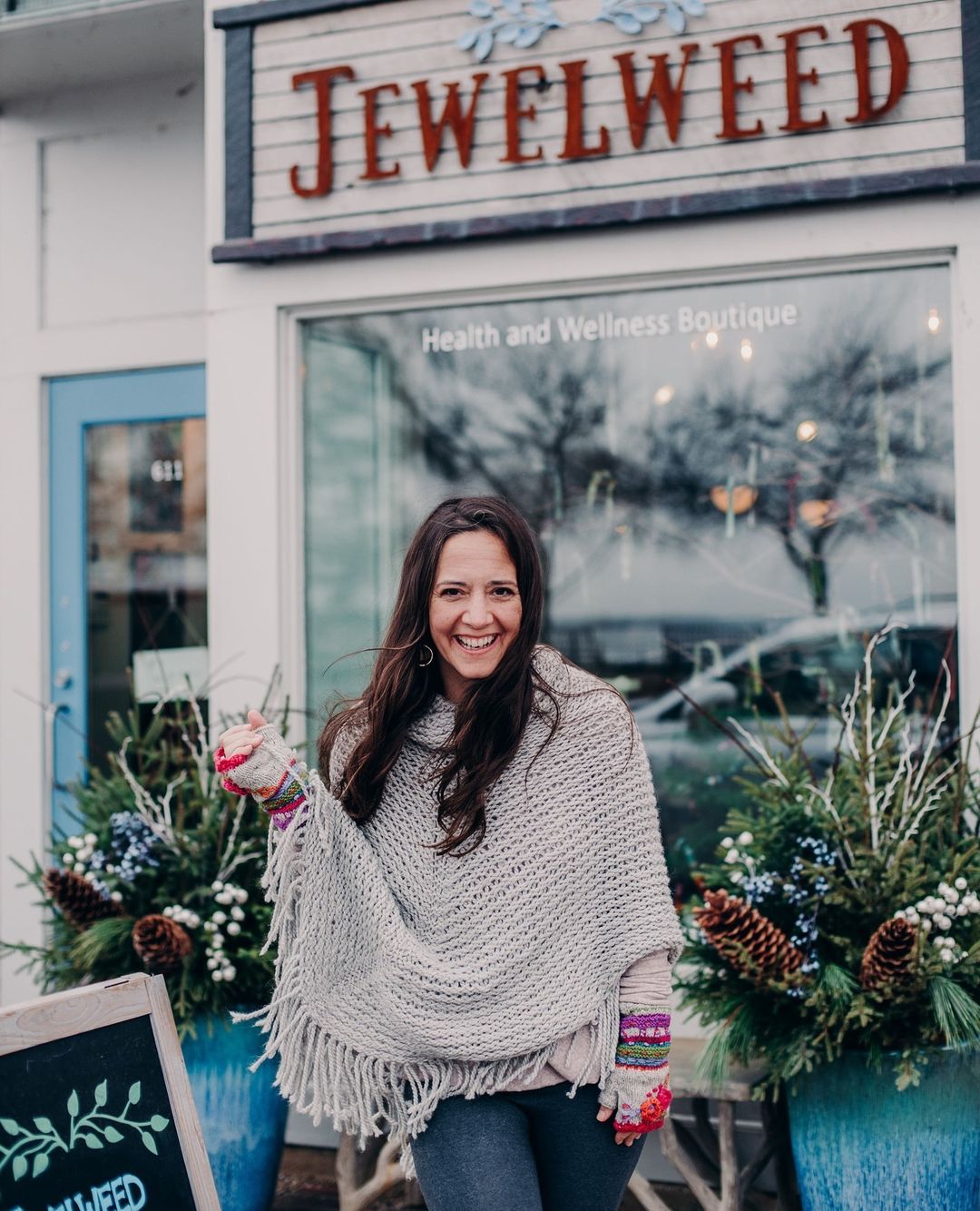
Jodi McKee, owner of Jewelweed health and wellness boutique.
An Interview with Jodi McKee of Jewelweed
We recently had a conversation with Jodi McKee for our Student Business Spotlight series. Jodi is the proprietor and herbalist behind Jewelweed, a small-batch herbal apothecary and healing venue located just outside of Minneapolis, MN. The shop was named in honor of the local wildflower that grows prolifically nearby. Jewelweed offers an exclusive in-house seasonal line of handcrafted products made with organic or locally-grown and wildcrafted plants. They also stock a beautiful array of goods sourced from small makers and artisans, including herbal remedies, flower essences, essential oils, green beauty products, incense, tea and drinking cacao, and so much more.
Our Student Business Spotlight is a series featuring Chestnut School of Herbal Medicine graduates, their work, and the wide variety of professions herbalists can choose from. Jodi is a graduate of our Online Herbal Immersion—1,000 hours of our personal mentorship in sustainable herbalism and herbal career building.
Jodi, can you tell us a little bit about yourself and how you were first called to work in the field of herbal medicine?
I’m a mother of three boys and that’s where it all began for me. I was 25 when my oldest son was born (he’s 27 now), so I was very young and had never encountered anything other than traditional Western medicine. He was born three weeks early and was sick all the time. He had RSV and we had a lot of hospital stays, 911 calls, and tons of emergency room visits for his asthma and allergies. I did everything the doctors suggested up until he was five. Then there was a moment when I knew I needed to figure out something different. And so I started looking for alternative treatments. I found a brochure for an herbal class. I went to the class, and the teacher—Lise Wolff—ended up becoming my long-term mentor and friend. I brought my son to see her and through a combination of diet, lifestyle changes, and herbs, his health turned around in a year. My son never had allergies or asthma again. It was big.
Then I went on to have two more boys. My kids have now been raised on natural health and herbs have become a lifestyle for us. Herbal medicine is a little bit unusual where we live and so as a young mother, I was always showing my friends the plants they could use for bruises and this and that— the things that we all know and use as herbalists. That’s how I started in herbal medicine and those were the early roots of Jewelweed.

An interior view of Jewelweed.
Please tell us about your herbal business. What does it offer your community?
Jewelweed is a little retail shop. It’s 600 square feet and located in Wiseta, which is a suburb of Minneapolis on Lake Minnetonka. We sell high-quality, small-batch herbal remedies, flower essences, essential oils, and green beauty products, along with our favorite books, teas, and crystals. The shop is an invitation to explore what healing is for each person who comes in. I want it to feel like a safe and accessible place for people to engage with their healing.
How did you know opening Jewelweed was the right career move for you?
From a really young age, I wanted to have a store. I used to set up garage sales in my yard and sell rocks that I found. When I grew up, I got a degree in accounting. Later, I went into design work and remodeling and had my own little design studio. I also had a store that sold home furnishings. While it was fun, and I loved the work and the people I worked with, it just stopped feeling fulfilling. So I sold that business and took some time off. That’s when I studied with the Chestnut School. From there, I just couldn’t get the idea of an herbal store off my mind. Yet I’d never been to a store like the one I wanted to open.
To be honest, opening Jewelweed was the scariest thing I ever did. It was also the most fun, and I really felt called to do it. I was never 100% sure it was the right career move because it was terrifying, and I didn’t know if anyone would come. But now I know it was the right move. I just listened to that internal voice, my calling, and to what felt really fun and exciting. And that ended up being Jewelweed.

Nature organizing kits at Jewelweed.
What do you love most about running Jewelweed?
I love the people that come in. It’s like a sitcom—you don’t know who’s going to walk in the door. And I love the relationships that happen—people who come in offer what they know, and I offer what I know, and we both end up better for it. We have regulars, we have new people, we have people who come in every summer or winter when they’re in town. I love the herbal match-making: introducing people to plants and stones and seeing what sparks their curiosity or interest. I feel lucky to witness and be a part of this. At the same time, I’m an introvert, so it can be exhausting. But it’s fun at the same time. My customers enrich my life so much. I get to share what I love with them, and we all walk away better. It’s really healing for me, and I hope it’s healing for them.
What are some of the challenges you’ve encountered running an herbal business?
Running a retail store is a lot of work! We’re open six days a week and on our feet all day, interacting with people. Which, as I said, can be both joyful and exhausting. So I really have to balance my life in other ways, like having plenty of quiet time at home. Maintaining that balance is so important and always on my mind.
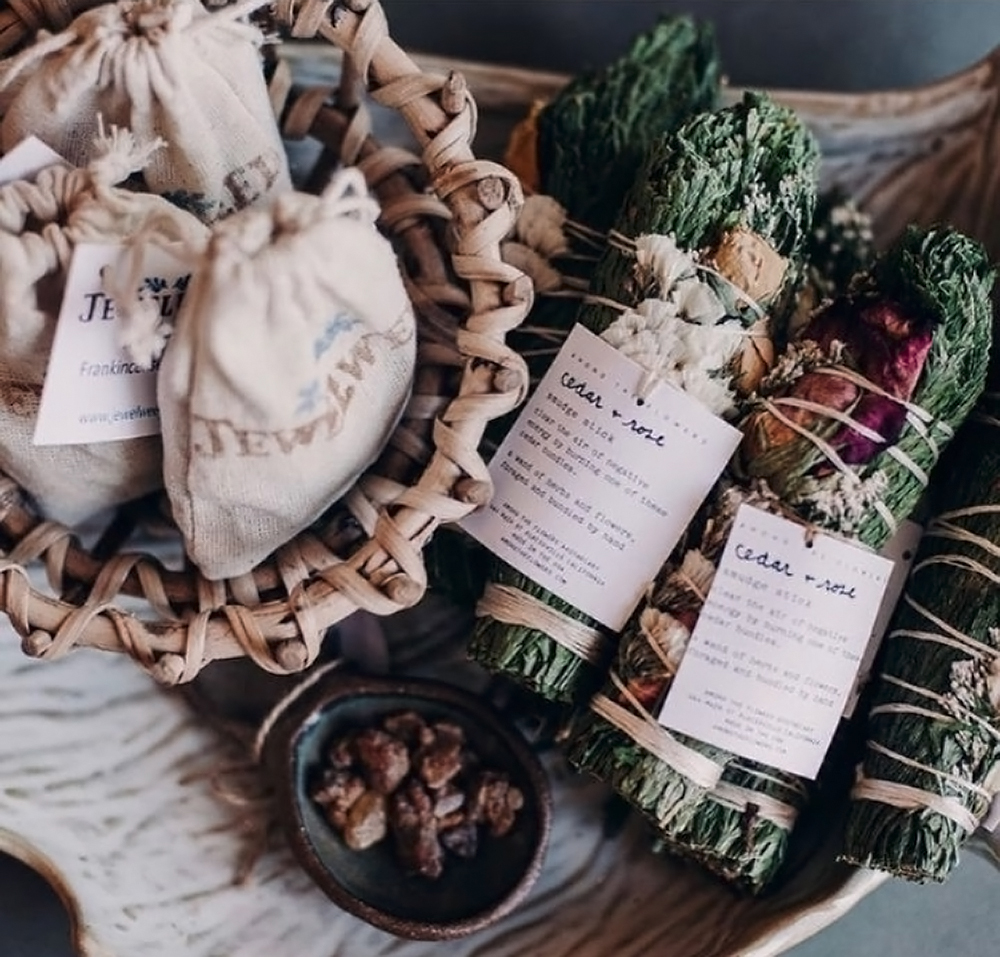
Jewelweed smoke bundles.
The logistics of owning a business are also a big deal. I have a business degree and experience running businesses (Jewelweed is actually the fourth business I’ve started), and it’s still a lot. There are so many things to manage: the website, the store floor, payroll, social media, marketing emails, keeping up with technology, etc. Learning all these different pieces and integrating them into the different aspects of my business can be overwhelming at times, even for such a little shop. I’m lucky I have good help, so I don’t have to learn and do everything myself. When I first opened Jewelweed, I thought I was just going to be selling my herbal remedies and hosting classes, but in the last year, I haven’t been doing these pieces I love as much because I’m just running the business end of the shop. My intention for the coming year is to get more help where I need it so I can get back to why I opened Jewelweed—which is connecting with people and plants.
What inspired you to study with us at the Chestnut School? How has your herbal education, especially the business training inside our programs, supported your business?
I’ve already owned several businesses, so I started Jewelweed with a lot of business experience under my belt. But what drew me to the Chestnut School was Juliet Blankespoor’s style and her eye for beauty. I know it sounds crazy, but when I saw her photos of the plants and how beautiful everything she does is, I knew I was going to take her program as soon as it became available. It was life-changing to realize how important beauty is and how beauty itself can be healing, especially when beauty is backed up by wisdom and truth. Juliet really showed me how to present my business in a beautiful, accessible way. That spirit is so present in Jewelweed and allows me to combine my design training with my herbal training and running a shop. Jewelweed is a place where beauty comes alive and people who visit can feel it and experience it.
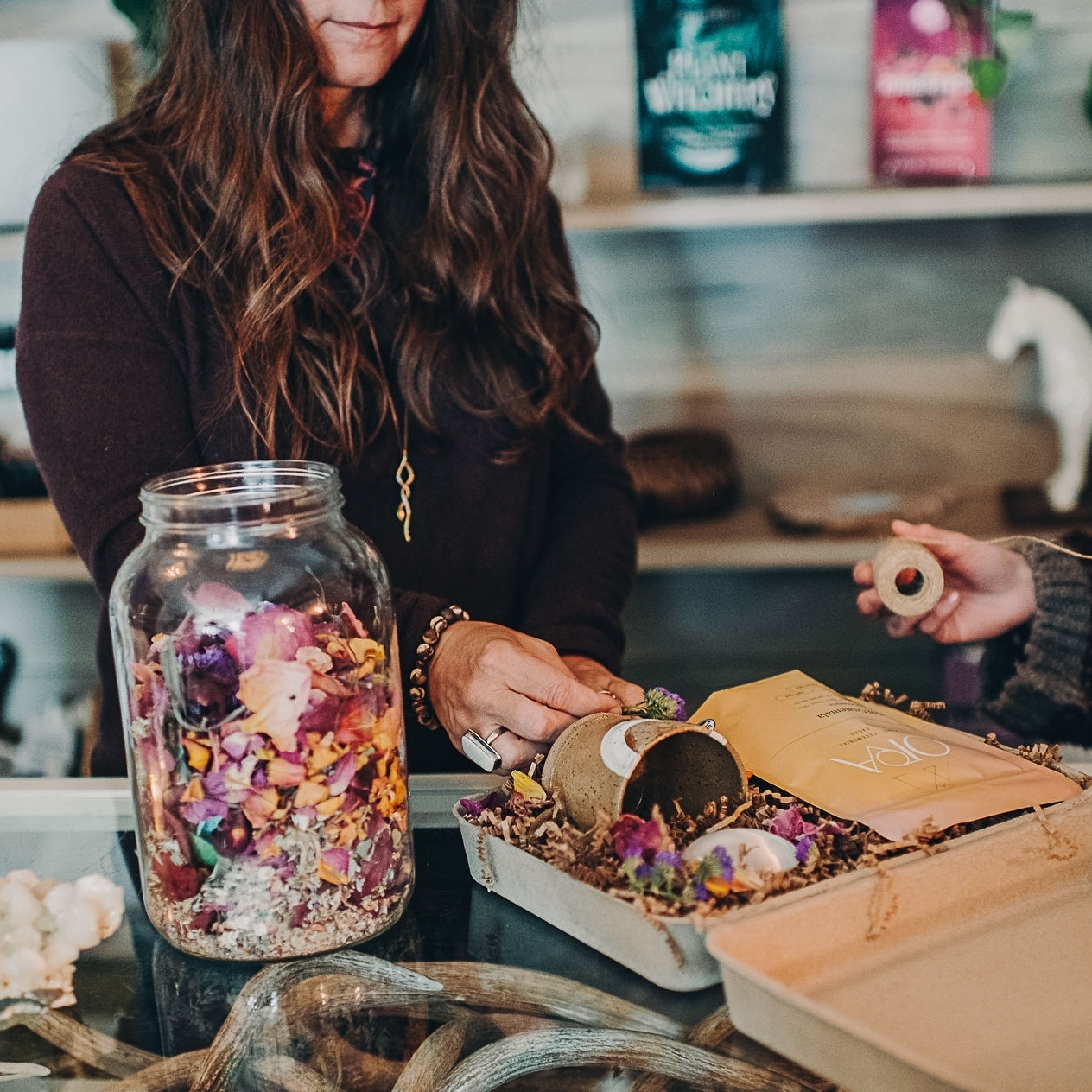
A Jewelweed gift box filled with items to nourish the heart, mind, and body.
What are three herbs that are essential to your herbal practice/business and why?
Well, one, of course, is jewelweed (Impatiens capensis). When I was thinking about what to name my store, ‘jewelweed’ just immediately came to mind. It grows everywhere where I live—all around my house, along the lake, and right across the street from my shop. I just love jewelweed because its flowers are so tiny, and you really have to look for it—it’s not loud or in your face. That’s how I am—I don’t like to be the center of attention. Jewelweed was also a plant that really helped me in my last pregnancy. I was having some trouble with my kidneys and I was designated as high-risk. I needed to go to my OB and a nephrologist constantly. So I went to see my local herbalist and teacher, Lise Wolff. She put me on drop doses of jewelweed, and within a couple of weeks, my kidney numbers regulated, and I didn’t have any trouble with the pregnancy whatsoever. My son is 17 now, and he’s been working in the shop with me since he was 12.
The second herb is yarrow (Achillea millefolium), and I always tell people that it was one of the first plants I worked with. When my boys were little, they were always getting hurt. So they always had yarrow in their bag, and they used it all the time. Even their friends would ask for it. It’s such an amazing blood remedy and a powerful healer for bruises and cuts. And it works fast. Plus, it’s really accessible and it grows everywhere. When Jewelweed first opened, yarrow was the plant I always loved to introduce people to.
The third herb is tulsi (Ocimum tenuiflorum), a plant I learned more about from Juliet than anybody else. The first summer I was in the Chestnut School, I ordered seeds and grew it. I like to say I had a love affair with tulsi—I was eating pesto and drinking the tea every single day, and I was talking to everybody about how it’s the best plant! It’s really special and so uplifting. If I could only plant one herb, it would be tulsi because I cannot live a summer without holy basil in my garden.
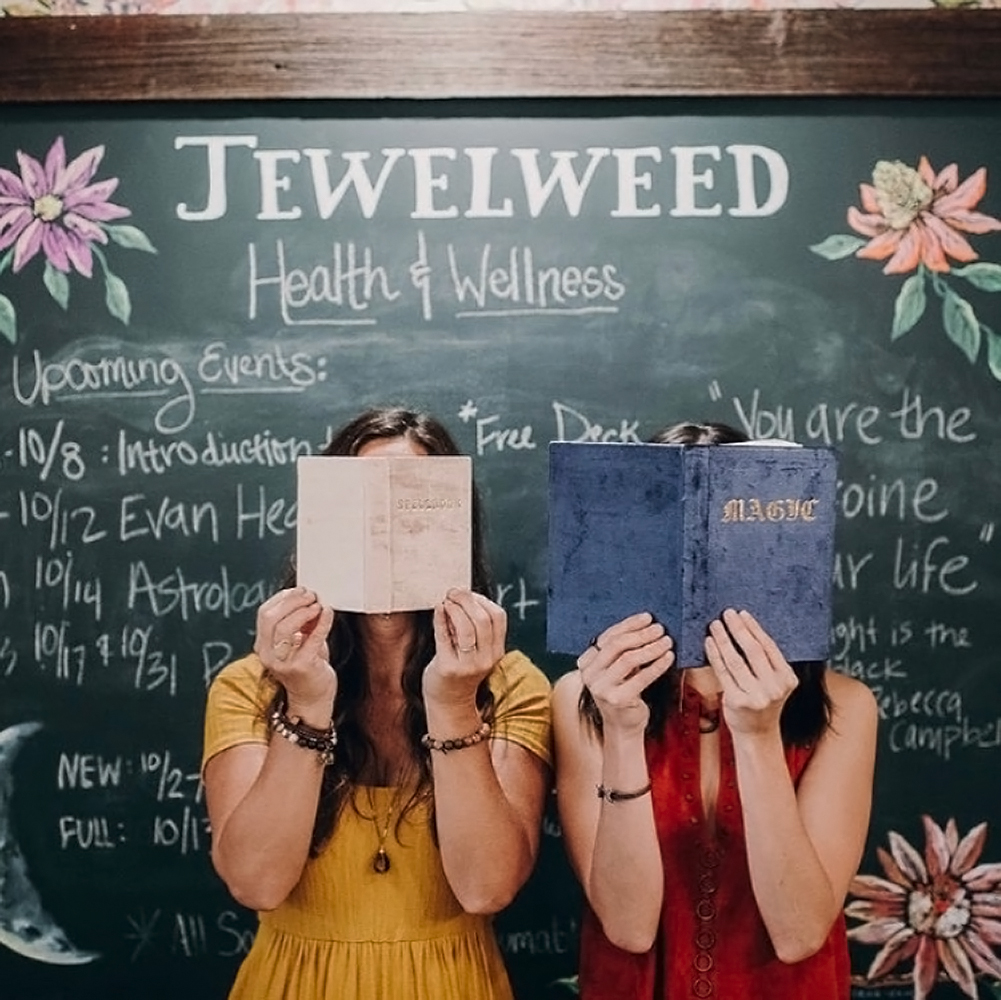
Velvet-covered Jewelweed journals.
Do you have any words of wisdom for those just starting their herbal education? What advice do you have for budding herbal entrepreneurs?
What I like to tell people who come into the shop feeling overwhelmed because there are so many herbs, is to just learn about what’s in their yard or neighborhood. To just go be with the plants themselves and figure out what’s around you. For people who aren’t comfortable with wild plants or weeds, I suggest they start in their garden. That’s why I love Juliet’s teachings; she makes everything beautiful and accessible—the wild weeds and the plants from the garden. So you don’t have to start with 50 plants, just start with one plant, or two plants, or three. And if that’s all you learn your whole life, that will be fine. Personally, I always like the plants that are around and aren’t too expensive. I love plantain (Plantago spp.) as a first plant. I love yarrow and even some of the grocery store herbs like thyme (Thymus vulgaris) and rosemary (Salvia rosmarinus). Everybody can get them.
It’s similar when starting a business. What skills do you already have? What’s available to you and easy to learn? What’s natural and easy to get started? When I started my business, I didn’t jump right into Jewelweed. I began teaching classes and selling medicine out of my house. I wanted to see if people were interested and wait before making a big investment. From there, my vision grew more and more. I feel so excited that the landscape of herbalism is changing and that up-and-coming entrepreneurs, maybe people reading this, are the future.
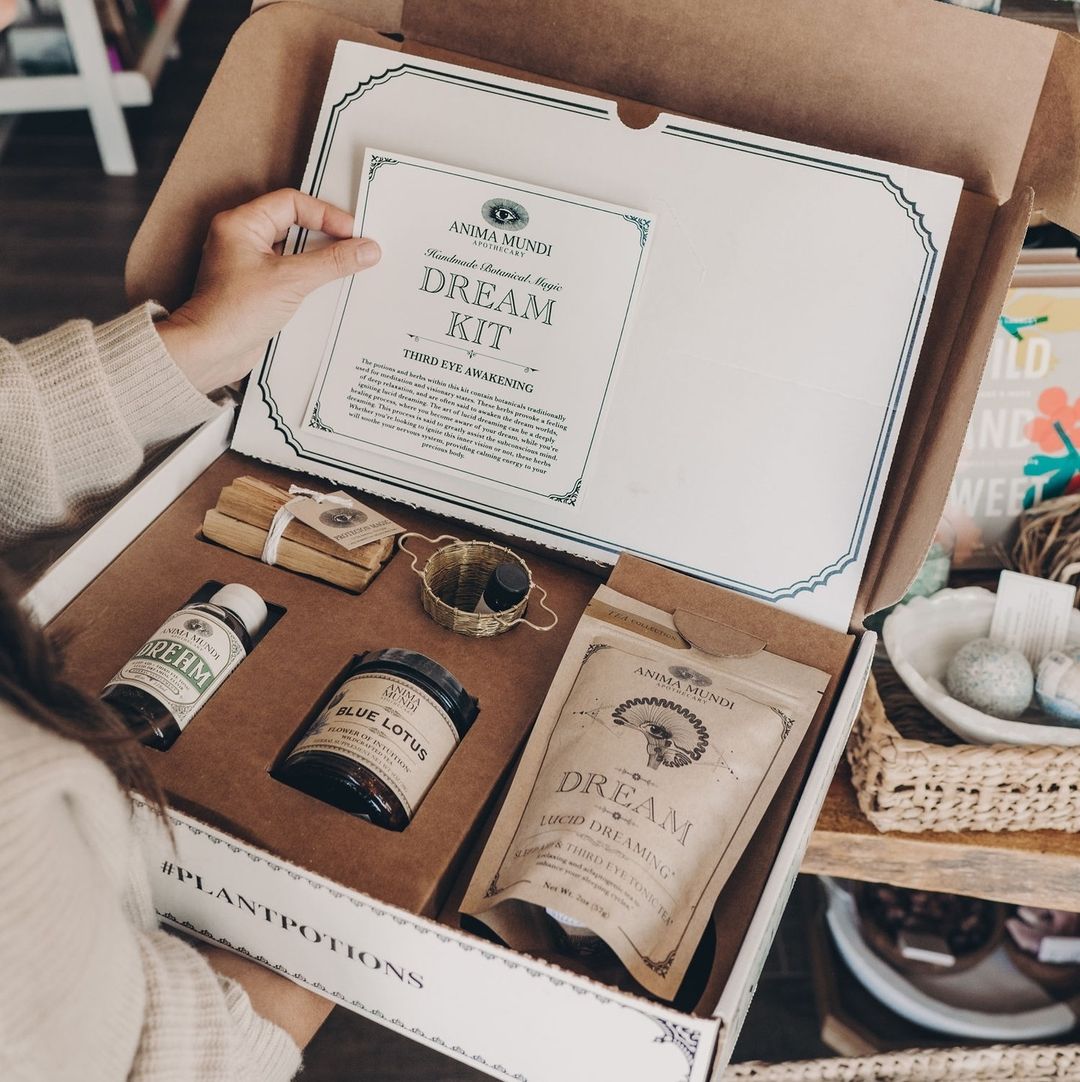
The Lucid Dreamer’s Toolkit by Anima Mundi at Jewelweed.
What do you think is next for you on your herbal journey?
There are a couple of things—something for myself and something for my community. For me personally, I’m just entering the menopausal years. So I’m working with plants in that way. I want to be able to teach others what I learn and experience in my own body. Also, I’m excited for this time in general. My last son will go to college next year and I’m asking what will that look like for me. What do I get to do?
My broader focus is returning to the reasons I started Jewelweed in the first place—I want to create community around plants and healing. I want to talk about the idea that we’re all healers, and there are plants right outside our front door that can help us heal. If we understand that, we can care for the plants and the land a little bit better and then see how the land’s health reflects the health of our own bodies and families. What I’m saying without saying it is: if people quit spraying their yards, if we quit poisoning our plants and our water, we can use them. And so I’m hoping to help people make the connection between their own health and the health of the world around them.
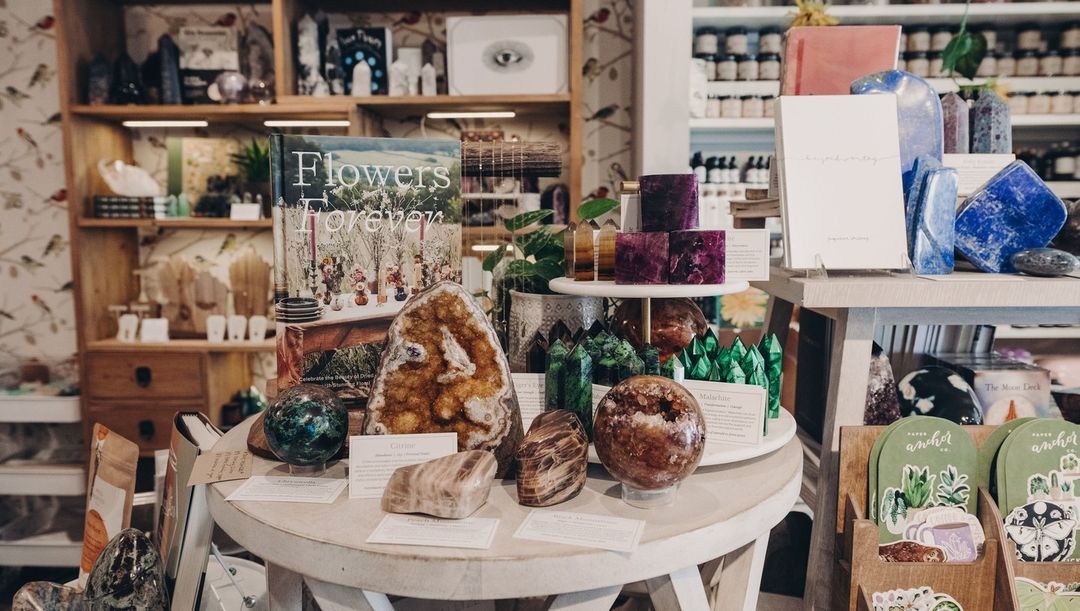
An interior view of Jewelweed health and wellness boutique.
We’re so proud of our students!
We hope this interview inspires you to check out Jodi’s products and support a small woman-owned herbal business. And perhaps you’ll find some ideas for your own herbal business. You can connect with Jodi on Instagram @jewelweed.shop and via the Jewelweed website. To see what our other graduates are up to, check out our Student Herbal Business Directory.
Want to take a deeper dive into medicinal herbs and their uses?
Our 1,000-hour Herbal Immersion Program is the most comprehensive handcrafted online herbal course available, covering botany, foraging, herb cultivation, medicine making, and therapeutics.

Interested in becoming a contributor?
© Chestnut School of Herbal Medicine and chestnutherbs.com, 2011-2024. Unauthorized use and/or duplication of this material without express and written permission from this site’s author and/or owner is strictly prohibited. Excerpts and links may be used, provided that full and clear credit is given to Chestnut School of Herbal Medicine and chestnutherbs.com with appropriate and specific direction to the original content.
The post Jewelweed: Student Business Spotlight appeared first on Chestnut School of Herbal Medicine.
]]>The Medicinal Benefits of Ashwagandha
Written by Meghan Gemma
Photography by Juliet Blankespoor
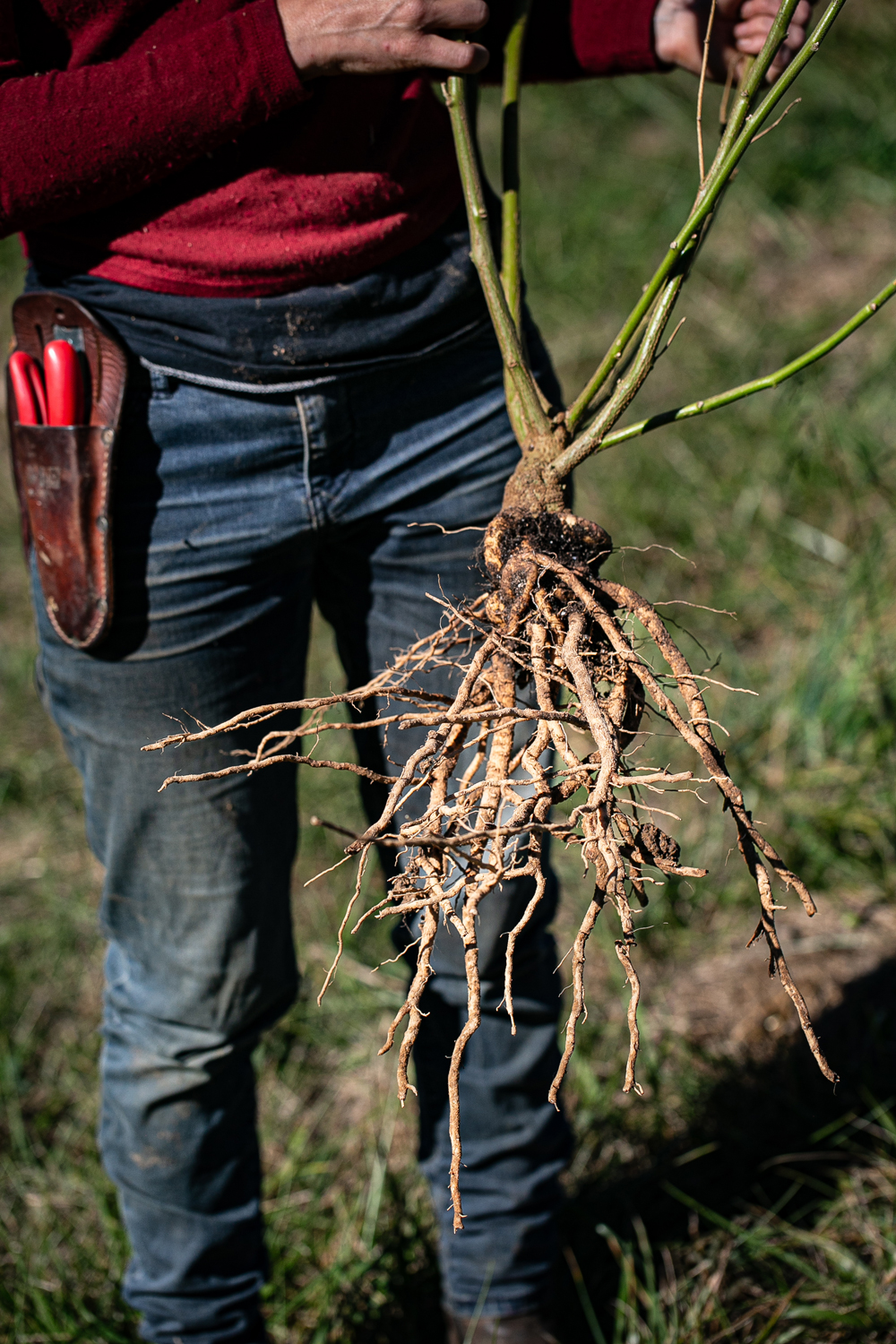
Ashwagandha’s pungent roots, which possess a notoriously musky aroma, can be profoundly renewing for your health.
If you experience overwhelm in your life—whether from insomnia, anxiety, or burning the candle at both ends—the medicinal benefits of ashwagandha bring many blessings. Ashwagandha calms and heals your nervous system, refreshes sleep cycles, invigorates immune resilience, and infuses your entire being with strength.
This charismatic herb heralds from India, the Middle East, and Northern Africa. Ashwagandha’s medicinal use in the Western world is thanks to the traditional healers of these regions, who cherish its healing root for countless ailments.
In this article, we’ll discuss the following (click to jump ahead):
Among herbs, only a venerated few are true vitality tonics and nourishing rasayana restoratives. Ashwagandha—whose name means ‘essence of the horse’—is one of these, and its medicine is revered in the ancient traditions of Ayurveda, Siddha, Unani, and Indian folk healing.
Its pungent roots, which possess a notoriously musky aroma, have been enthusiastically adopted by Western herbalists in recent years for their adaptogenic qualities. When taken over time, ashwagandha can be profoundly renewing for your health.
Ashwagandha’s medicine is calming, centering, and strengthening.
Psst…If herbal profiles like this tickle your botanical fancy, you’ll find more detailed monographs on our blog, including calendula, passionflower, pine, witch hazel, violet, goldenrod, and more.

Ashwagandha’s papery husks peeled back to reveal its fruit.
How to Identify Ashwagandha
Scientific Name: Withania somnifera
Botanical Family Name: Solanaceae, nightshade family
Other Common Names: Indian ginseng, winter cherry, asgandh (Hindi)
Range: Native to the drier regions of India, Sri Lanka, the Middle East, and northern Africa, ashwagandha has naturalized throughout southern Eurasia and many parts of Africa. It is now cultivated in temperate and subtropical climates around the world.
Botanical Characteristics: In its native range, ashwagandha is a small evergreen perennial with woody stems and a shrub-like appearance. In temperate regions, it grows as an annual in the herb garden. The leaves are softly silver-green, alternate, and elliptic, with glabrescent (smooth) surfaces and slightly hairy undersides. The star-shaped flowers are a subtle shade of yellow-green and give way to bright scarlet berries that ripen late in the season, earning ashwagandha the nickname “winter cherry.”
The fruits are encased in papery brown husks (the persisting remnants of the calyx) and resemble tiny tomatillos. Belowground, ashwagandha’s roots are cream-colored and fleshy, exuding a bracing scent when chopped or crushed.
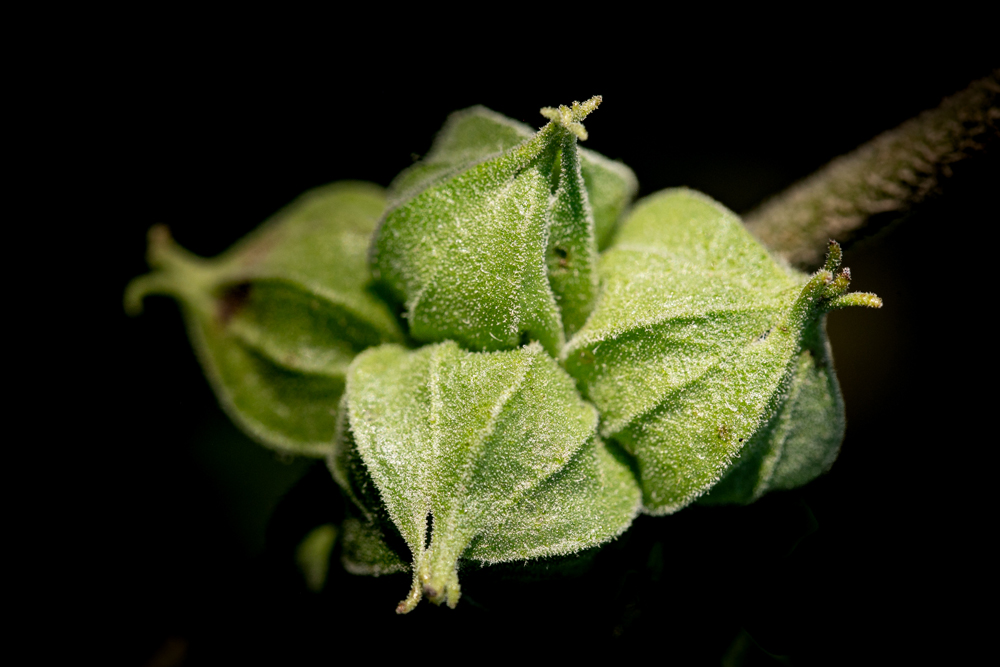
The developing fruit of an ashwagandha plant.
Culinary & Edible Uses of Ashwagandha
Ashwagandha’s roots possess a curious flavor—they’re pungent, nutty, and sometimes said to taste of malted milk balls. Traditionally (and less favorably), their scent has been likened to horse sweat. This comparison is unflattering, but don’t let it dissuade you from trying ashwagandha, which can be prepared in a number of delicious ways.
In Ayurveda, ashwagandha is classically powdered and paired with healthy fats, such as ghee or warmed whole milk with honey. The addition of cinnamon (Cinnamomum verum), cardamom (Elettaria cardamomum), and vanilla powder (Vanilla planifolia) is enticing to the taste buds. Try this Ashwagandha, Lavender, and Vanilla-Infused Ghee for a medicinal treat.
Ashwagandha can also be stirred into hot chocolate, blended into smoothies, or steeped with chai herbs. The powdered roots can be used to make adaptogenic snack balls when combined with ghee, ground toasted sesame seeds, nut butters, and/or other powdered herbs like shatavari (Asparagus racemosus) and eleuthero (Eleutherococcus senticosus).
You can even make cookies, like these adaptogenic snickerdoodles from Asia Suler of One Willow Apothecaries. Just substitute an equal amount of ashwagandha powder for the ginseng powder in her recipe.
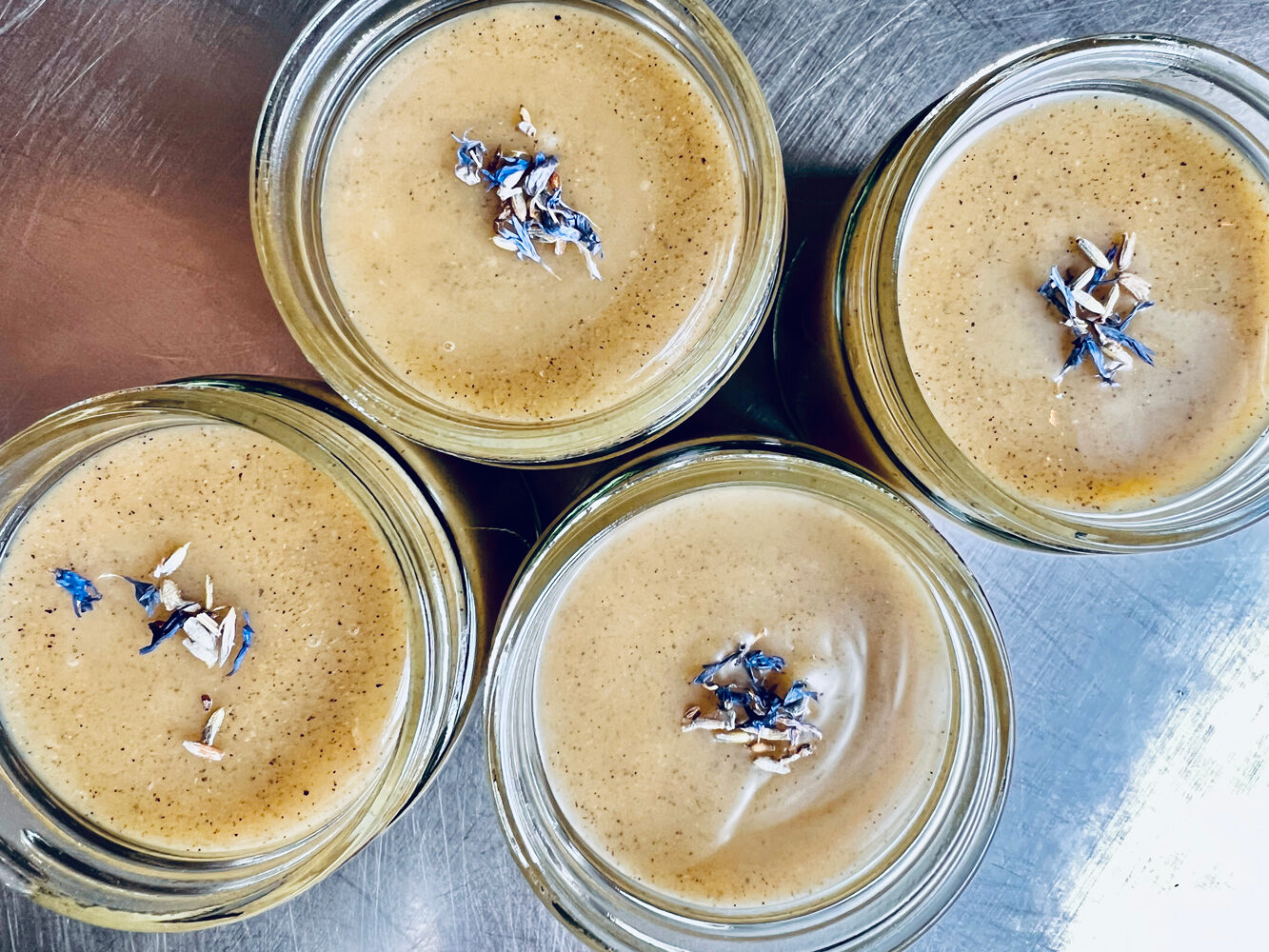
Ashwagandha, Lavender, and Vanilla Herbal-Infused Ghee. Try the recipe. Photograph courtesy of Goddess Ghee.
The Medicinal Benefits of Ashwagandha
Parts Used: Root
Preparations: Tea (decoction), tincture, powder, capsules, medicated ghee, infused milk, goo balls
Powder Dosage: 1-6 grams daily
Tincture Ratios and Dosage: Dry (1:4 60%) 2-4 ml up to three times per day (fresh root tincture not recommended due to high bioactivity)
Tea Ratios and Dosage: Decoct 1-2 teaspoons dried root per 1 cup water up to three times per day
Herbal Actions:
- Adaptogen
- Anxiolytic
- Anti-inflammatory
- Antioxidant
- Anti-tumor
- Aphrodisiac
- Immunomodulator
- Nervine
- Neuroprotective
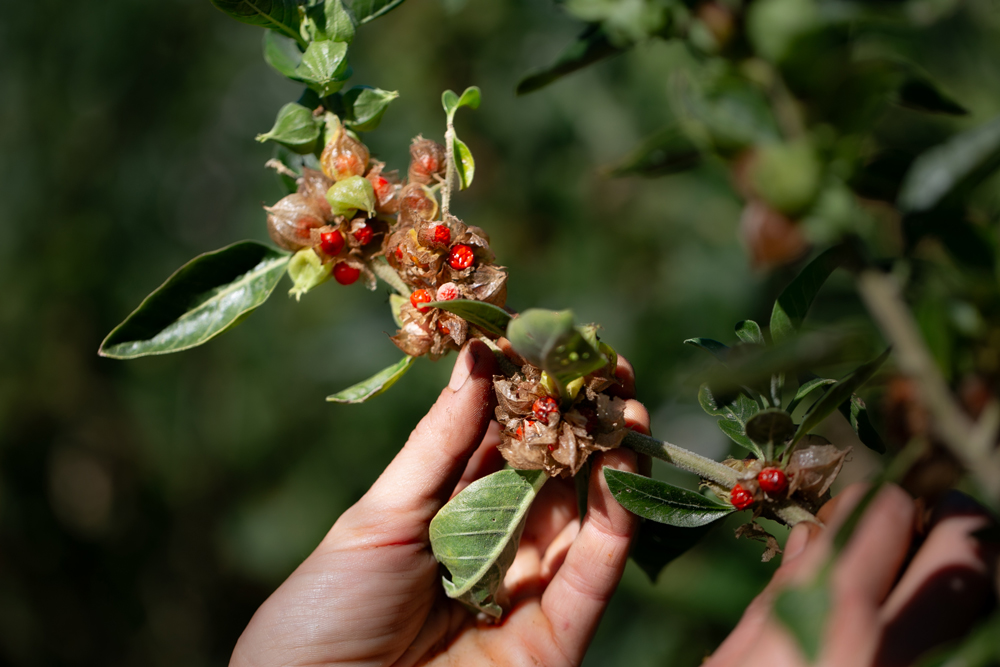
The developing fruit of an ashwagandha plant.
Ashwagandha is an ancient rasayana and adaptogenic herb that repairs the body from stress, anxiety, and insomnia.
An adaptogen and Ayurvedic rasayana, ashwagandha rejuvenates the body at the deepest levels and nurtures a long life. It’s said to impart the strength of a stallion to its imbibers, and its musky roots spell out this signature—they’re known to bear the scent of horses drenched in wild sweat, racing across the plains.
This vital energetic makes ashwagandha especially useful for states of weakness or fatigue, such as depletion from stress, anxiety, overwork, poor sleep, or chronic illness.1,2 The roots work to repair the hypothalamic-pituitary-adrenal axis and are esteemed for their ability to aid recovery and convalescence—they’re indicated for debility of almost any kind.3 For this reason, ashwagandha is supreme across the arc of our lives: it’s safe for children, revitalizing for adults, and maintains health for elders. Unlike most adaptogens, which are stimulating in nature, ashwagandha is calming and nourishing—it restores us to health from weakened states.
Ashwagandha is a preeminent herb for insomnia, as its species name somnifera implies. It’s not overtly sedative but instead helps restore healthy sleep cycles and replenish bone-weary nervous systems.4 It must be taken tonically for these benefits to build over time, and I recommend combining ashwagandha with other calming adaptogens like milky oats (Avena sativa) and reishi mushrooms (Ganoderma spp.)
Ashwagandha’s strengthening and balancing qualities extend to the immune system, where it shines as an immunomodulating ally. It both nourishes and energizes depleted immune systems and, conversely, quells overactive immune responses that trigger allergies, rheumatoid arthritis, and other autoimmune conditions.5
In Western herbalism, ashwagandha is used as an herbal adjunct to chemotherapy and radiation for building strength and immune resilience in cancer.1 In India, ashwagandha has been a folk remedy in cancer protocols. Preliminary research attributes the anti-tumor properties to steroidal lactones, known as withanolides, found in the roots.6
No materia medica on ashwagandha would be complete without mention of its aphrodisiac and fertility benefits. Taken over time, the root can refresh and balance hormone levels, enhance circulation to the reproductive organs, improve sperm count and motility, and increase libido.3 In one notable pilot study, 25 women given 300mg of high-concentration ashwagandha root extract twice daily for 8 weeks reported significant increases in sexual function, including increased lubrication and orgasms.7

It’s traditional to ingest ashwagandha in fat-based preparations, such as medicated ghee or milk.
Ashwagandha’s medicinal benefits are most effectively extracted in delicious milk or ghee-based preparations.
It’s traditional to ingest ashwagandha in fat-based preparations, such as medicated ghee, dairy milk, or nut or seed milk. This is because many of ashwagandha’s medicinal compounds are fat-soluble (they need to be extracted in a fatty medium). Other aspects of ashwagandha’s medicine are water-soluble, so mixed water/milk decoctions, like this ashwagandha latte recipe from Banyan Botanicals, are also appropriate.
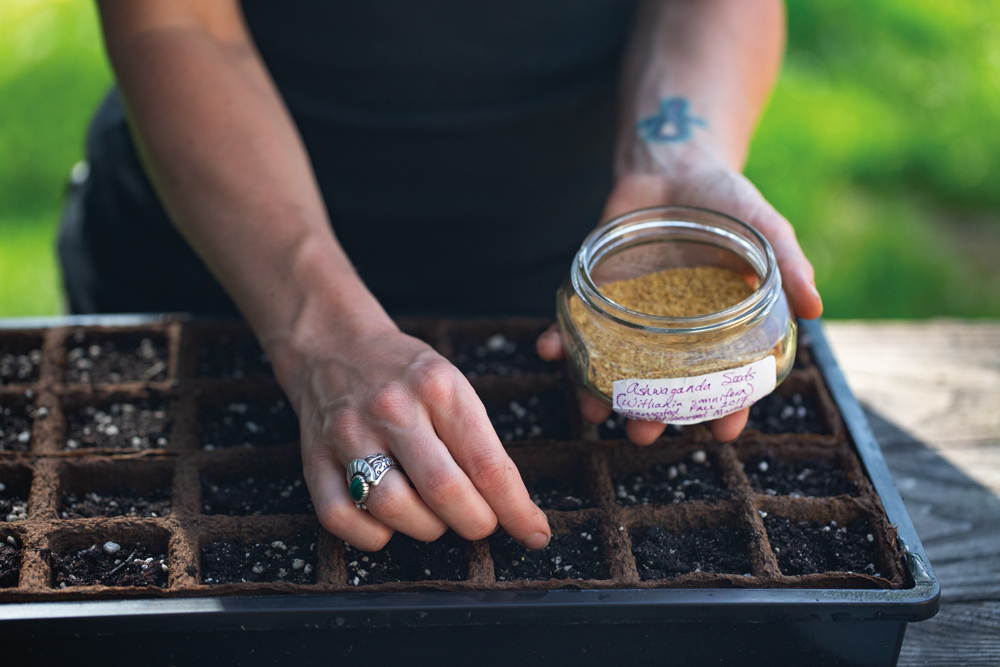
Surface sowing ashwagandha seeds.
How to Grow Ashwagandha
If you can grow tomatoes, you can likely grow a healthy harvest of ashwagandha, as these Solanaceae cousins prefer similar conditions in the garden. Ashwagandha loves heat, semi-arid soils, and an early indoor start to the season (in frost-prone areas).
Zones: 3-7 (grown as an annual); 8-13 (can be grown as a small, shrubby perennial)
Soil: Ashwagandha prefers warm, dry, well-drained soils and will even tolerate drought. It fares best in average garden soil (no need to pile on the compost) and will grow sizable roots in a single growing season throughout the temperate world.
Propagation: Ashwagandha is a light-dependent germinator, meaning its seeds require direct sunlight to sprout. Therefore, sow them on the surface of the soil and lightly tamp them in. The soils must be warm for germination to occur, so starting the seeds indoors or in a greenhouse (much as you would tomatoes) is helpful. Plus, you’ll get a leg up on the growing season, which can mean larger roots to harvest in the fall.
Siting and Garden Care: A warm-weather native, ashwagandha delights in sunshine. Plant in full sun, or select the brightest spot in your garden. If you grow lavender (Lavandula spp.) or rosemary (Salvia rosmarinus), ashwagandha will likely relish a place in their neighborhood.
Space plants 2 feet (0.6 m) apart and consider companion planting with herbs and flowers that deter pests. A few suggestions include marigolds (Tagetes spp.), nasturtiums (Tropaeolum majus), calendula (Calendula officinalis), thyme (Thymus vulgaris), and peppermint (mentha x piperita). In the case of mint, plant it in pots throughout the garden unless you’re ready to embrace its exuberant proclivity to spread.
In areas where ashwagandha grows as an annual (i.e., most places in the temperate world), try cultivating at least a few plants to obtain a good harvest. I often grow a dozen plants (or more) to feel confident of a robust supply and not fret if I lose a plant or two throughout the season.
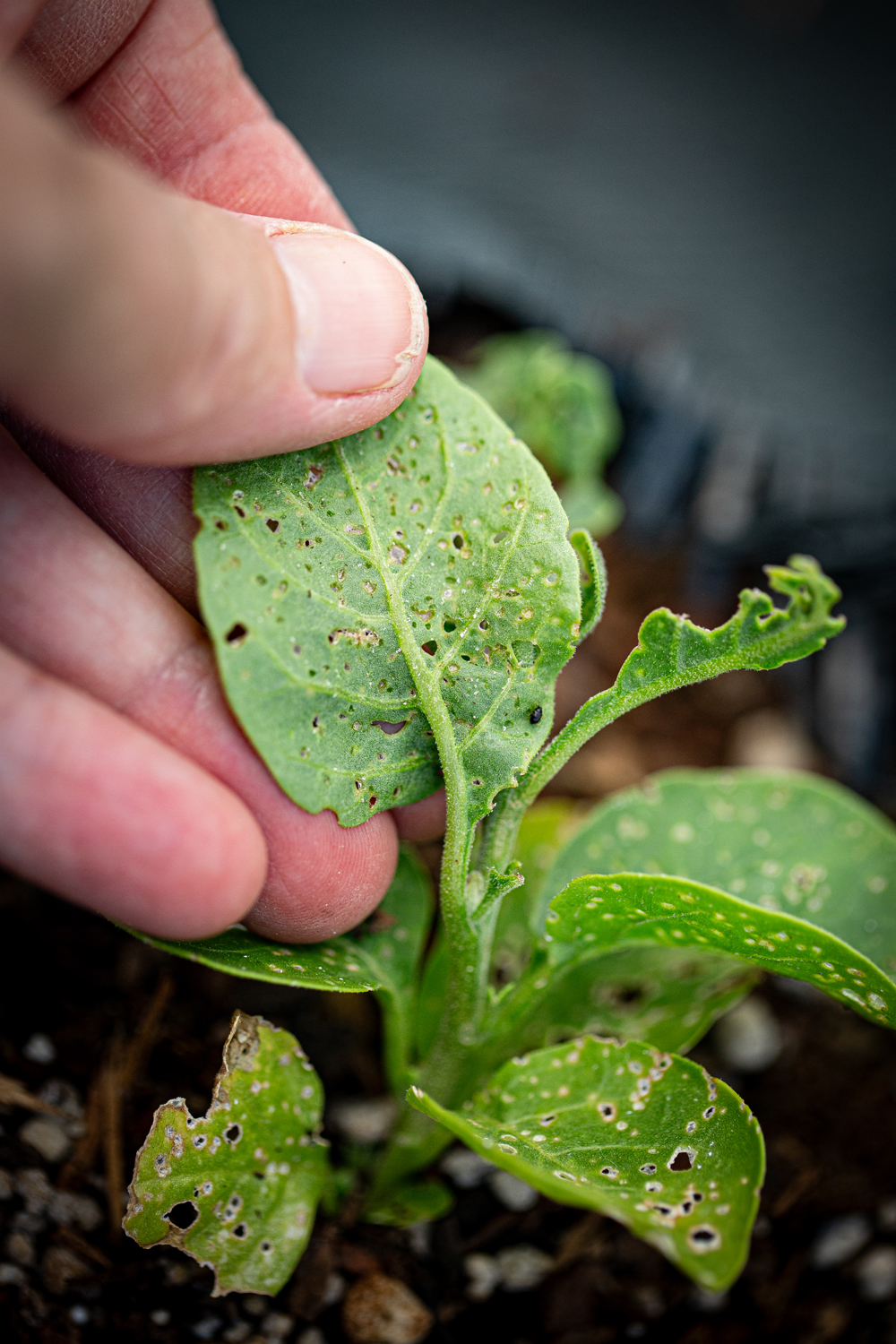
Ashwagandha eaten by flea beetles.
Problem Insects and Diseases: Flea beetles will be the bane of your ashwagandha’s existence if they’re a nuisance in your area. They feast willfully on the leaves and can cause the plants’ demise. Using row cover helps immensely, at least until the plants have reached a mature size. Alternately, wait until your ashwagandha starts are larger and hardier before transplanting them to the garden.
Harvesting: Dig ashwagandha roots in the fall before the first frost. Wash and chop the roots right away, spreading them on screens or loose-weave baskets to dry. Make sure to dry them in a warm, ventilated space out of direct sunlight.
Once dry, the roots can be stored, tinctured, or powdered. Note that the powder will degrade more quickly than the whole, chopped roots. Therefore, you may wish to powder ashwagandha in small batches, as needed.

Asia Suler holds a freshly harvested ashwagandha plant.
References
- Stansbury J. Herbal Formularies for Health Professionals, Volume 3: Endocrinology. Chelsea Green Publishing; 2018.
- Hoffman D. Medical Herbalism: The Science and Practice of Herbal Medicine. Inner Traditions/Bear & Co.; 2023.
- Sinadinos C. The Essential Guide to Western Botanical Medicine. Christa Sinadinos; 2020.
- Lad V, Frawley D. The Yoga of Herbs: An Ayurvedic Guide to Herbal Medicine. Lotus Press; 1986.
- Winston D, Maimes S. Adaptogens: Herbs for Strength, Stamina, and Stress Relief. Inner Traditions/Bear & Co.; 2007.
- Skenderi G. Herbal Vade Mecum. Herbacy Press; 2003.
- Dongre S, Deepak L, Sauvik B. “Efficacy and Safety of Ashwagandha (Withania somnifera) Root Extract in Improving Sexual Function in Women: A Pilot Study.” BioMed Res Intl. 2015.
- Mills S, Bone K. The Essential Guide to Herbal Safety. Elsevier Health Sciences; 2005.
Learn more about herbs with THE most comprehensive Online Herbalism Program on the planet.
We’ve designed our 1,000-hour Online Herbal Immersion with the truly passionate plant person in mind. It is THE most comprehensive online program in hands-on, sustainable herbalism that exists anywhere in the world.
The course curriculum is designed to help you succeed as a professional herbalist.
Are you ready to fall in love with herbs? The Immersion covers herbal materia medica, medicinal herb gardening, wild food and medicine foraging, medicine making, botany, plant I.D., healing histories, herbal career guidance, and more in 166 videos, 186 lessons, and a gorgeous 1,600-page printable course manual.
Meet The Green Mastermind Behind Blog Castanea

JULIET BLANKESPOOR is the founder, primary instructor, and Creative Director of the Chestnut School of Herbal Medicine, an online school serving thousands of students from around the globe. She's a professional plant-human matchmaker and bonafide plant geek, with a degree in botany and over 30 years of experience teaching and writing about herbalism, medicine making, and organic herb cultivation. Juliet’s lifelong captivation with medicinal weeds and herb gardening has birthed many botanical enterprises over the decades, including an herbal nursery and a farm-to-apothecary herbal products business.
These days, she channels her botanical obsession through her writing and photography in her online programs, on her personal blog Castanea, and in her new book, The Healing Garden: Cultivating and Handcrafting Herbal Remedies. Juliet and her family reside in a home overrun with houseplants and books in Asheville, North Carolina.
Interested in becoming a contributor?
© Chestnut School of Herbal Medicine and chestnutherbs.com, 2011-2024. Unauthorized use and/or duplication of this material without express and written permission from this site’s author and/or owner is strictly prohibited. Excerpts and links may be used, provided that full and clear credit is given to Chestnut School of Herbal Medicine and chestnutherbs.com with appropriate and specific direction to the original content.
The post The Medicinal Benefits of Ashwagandha appeared first on Chestnut School of Herbal Medicine.
]]>Herbal Gift-Giving Guide
Written by Meghan Gemma
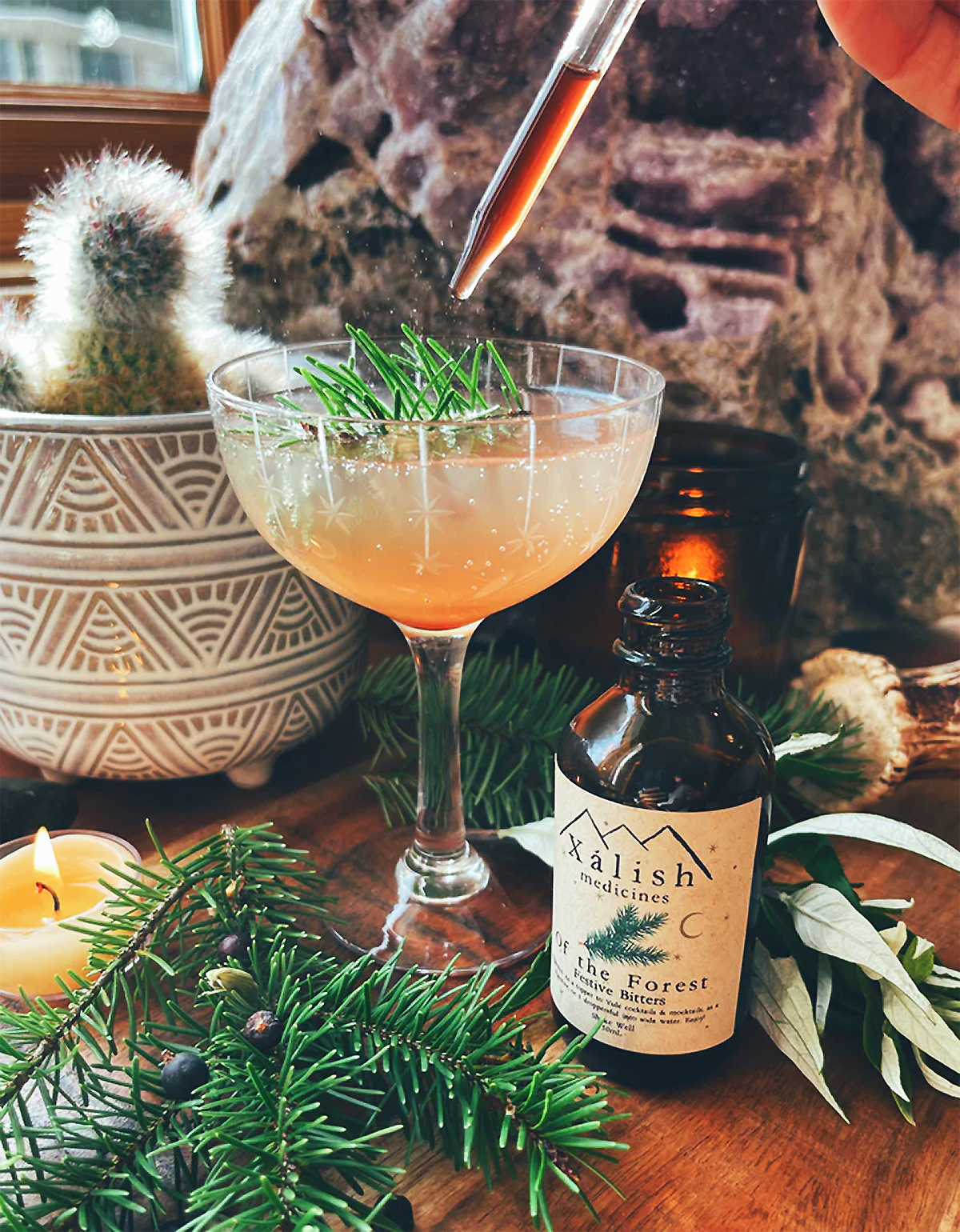
Of the Forest Non-Alcoholic Festive Bitters by Xálish Medicines. Photograph courtesy of Xálish Medicines.
Give the perfect herbal gift to your loved one
Giving a great gift is an art. Giving an herbal gift is to know and love the plant person in your life. To help you find the perfect present, we’ve compiled an herbal gift-giving guide featuring special items from small makers to please your herbally-inclined loved ones.
For fun and ease, we’ve grouped these gifts into categories suited to unique plant personas. Shopping for an herbalist who cherishes culinary traditions? See our selections for the Herbal Kitchen Witch. Excited to share something special with a magical friend? Pick a present from our list for the Herbal Ritualist.
You’ll find gift-giving suggestions for:
Note that we do not receive any compensation for promoting the products and businesses featured in the Herbal Gift-Giving Guide. We simply love these makers and are excited to share them with you!
*Links in purple denote BIPOC and/or LGBTQIA2S+-owned businesses
*Links in brown denote Chestnut graduate-owned businesses
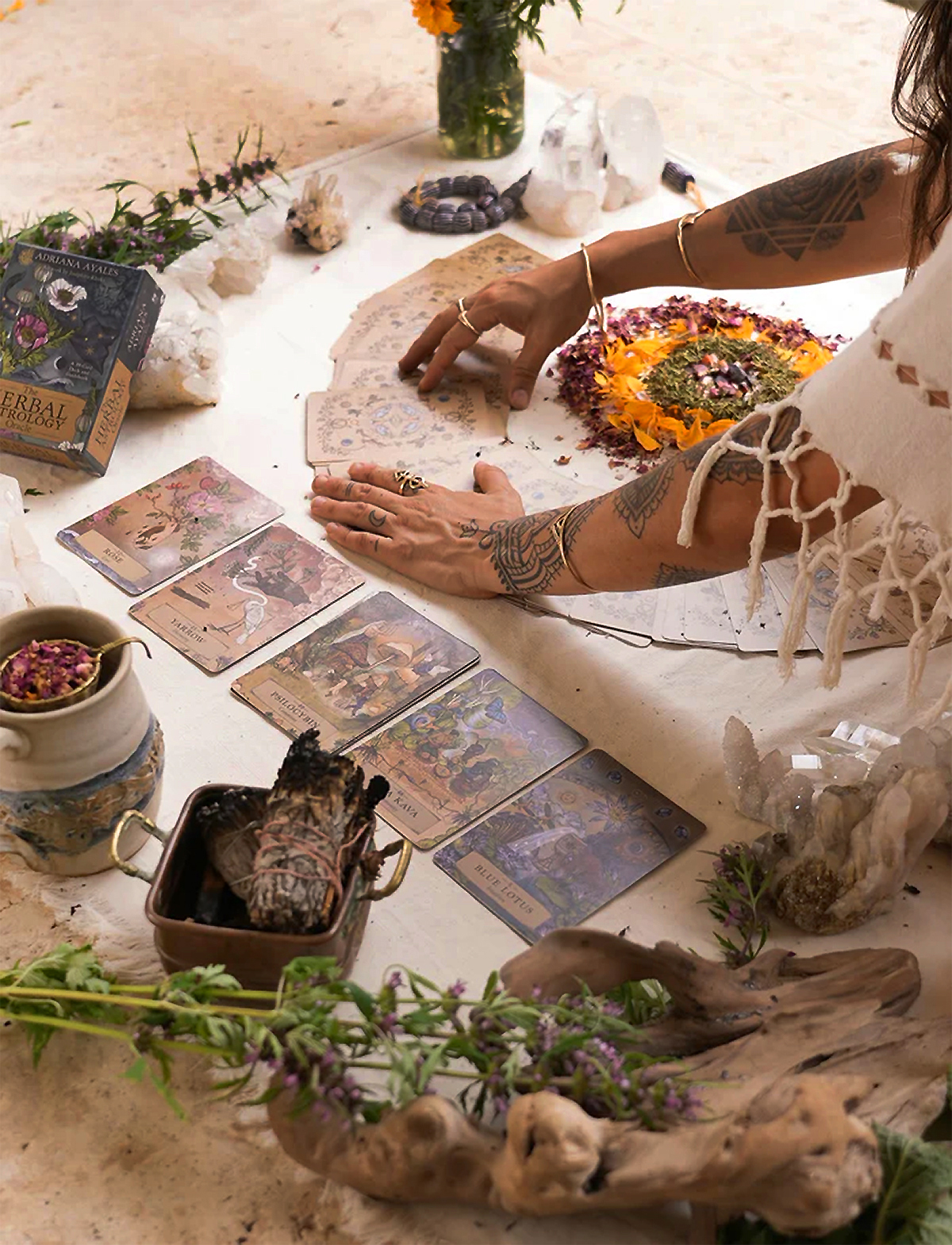
55-card oracle deck and guidebook written by Adriana Ayales of Anima Mundi Herbals and illustrated by Josephine Klerks. Photograph courtesy of Anima Mundi Herbals.
For the Home Apothecary Angel
These gift suggestions go out to all the home medicine makers and artisanal remedy collectors. Even the most savvy and experienced herbalist loves to sample the soulful concoctions of other crafters. These are among our favorite small apothecaries to support.
- Ancestrally-inspired remedies from Xálish Medicines. Everything in this shop exudes spirit and healing. Choose from an extraordinary selection of oxymels, herbal honeys, adaptogenic powders, flower essences, plant wands, elixirs, and tea blends.
- Top-quality, homegrown bulk herbs from the magnificent gardens at Kestrel Herb Farm, including anise hyssop, ashwagandha, chamomile, and reishi mushrooms.
- Flower essences from the magical shelves of One Willow Apothecaries. You’ll find a numinous number of interesting essences, including Sister Ivy for setting boundaries, Opium Poppy for powerful protection, Mimosa for joyful inspiration, and Ghost Pipe for ancestral healing.
- Apothecary angels will also appreciate simple yet special staples: raw local honey, glass Mason jars, craft brandy and other spirits, and local beeswax. A few of these items gathered together (or paired with any of the other gifts in this guide) make a thoughtfully themed gift bag or basket.
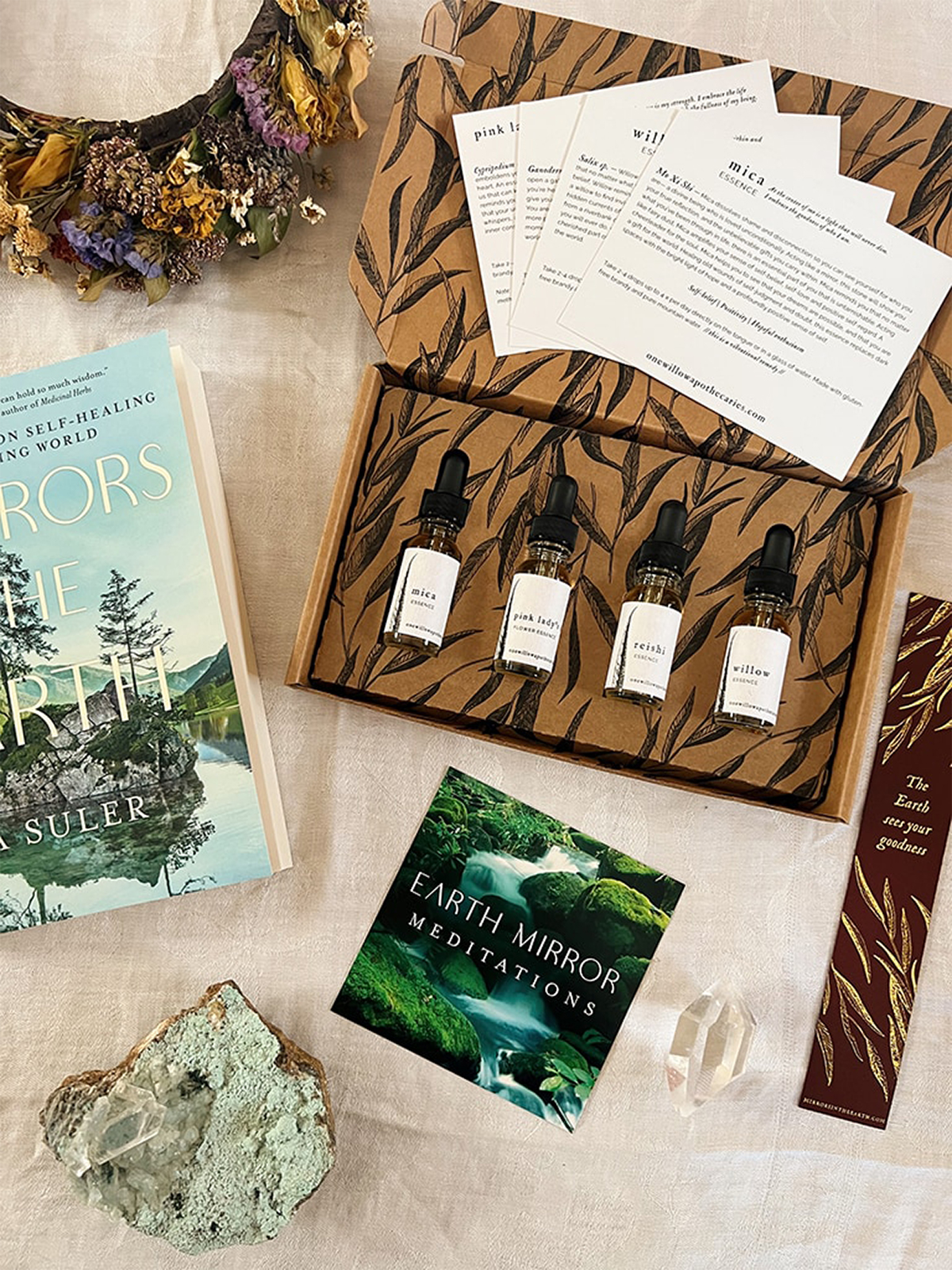
Mirrors in the Earth Complete Healing Collection by Asia Suler. Photograph courtesy of Asia Suler.
For the Herbal Ritualist
If your loved one relishes the ritual arts, offer them a gift that enhances intuition, inspires ceremony, and creates connection with the plants. These are the books, boxes, and tools that enliven our own experience of herbal magic.
- The evocative and culturally-rich Earth Medicines book by Felicia Cocotzin Ruiz. This volume of breathtaking beauty and plant ceremony can be enacted in every herbalist’s kitchen and apothecary.
- Beautiful card decks for connecting with plant allies. We especially love the rainbow-hued art and stirring descriptions of the Dirt Gems Deck & Guidebook created by Anne Louise Burdett and Chelsea Iris Granger. Equally adored is the traditional, astrologically-nuanced wisdom in the Herbal Oracle Deck by Adriana Ayales of Anima Mundi Herbals.
- Intuitive Gift Boxes from Jewelweed Shop. These personalized boxes feature herbs, candles, cards, journals, and other healing tools. Simply describe a theme and the person the gift box is for, and Jewelweed’s staff will put together an extra-special package that will be shipped straight to your loved one.
- Mirrors in the Earth by Asia Suler. This keepsake and guide is a ritual initiation into your personal connection with the plants. Readers will emerge transformed, with pockets full of jade-green insights about the natural world and how we are our own healers.
Need more book recommendations? See our list of the Best Herbal Medicine Books for Herbalists.
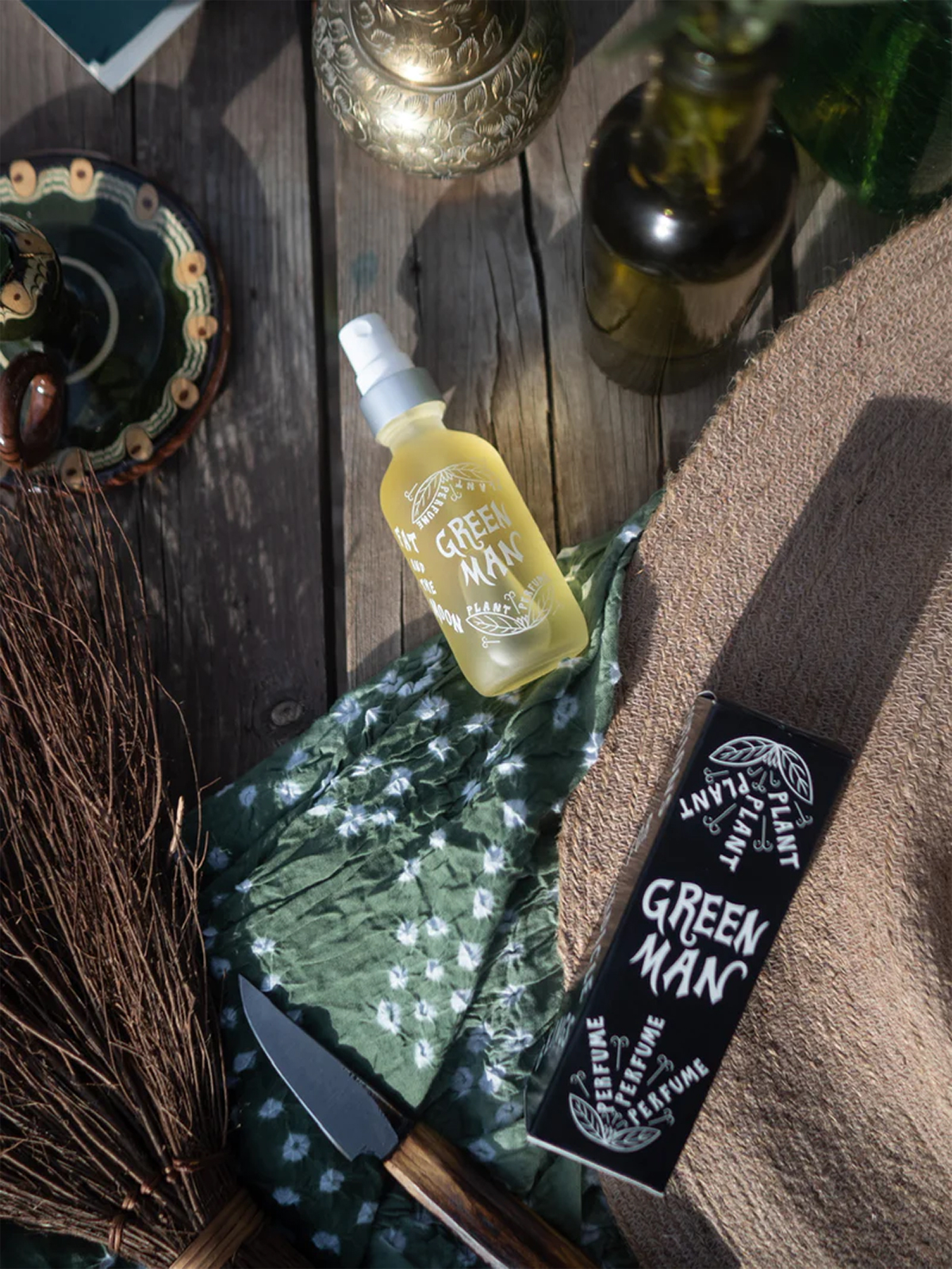
Green Man Plant Perfume by Fat and the Moon. Photograph courtesy of Fat and the Moon.
For the Aromatically Enchanted
Fragrance imprints deeply in our memories. An aromatic gift will leave a lasting impression on your loved one. Here are the scents and plants that we love to wrap up for our own cherished friends and beloveds.
- Plant hydrosols from Ash Sierra of Ritual Botanica. These are the most sensational hydrosols we’ve ever laid our noses on. Our favorites include the Tulsi Rose and Florida Water hydrosols. Get ready to inhale heaven.
- Botanical perfumes from Fat & the Moon. The jasmine and cedar notes in their Persephone Emerges perfume evoke the heady scents of a summer garden, while their Green Man perfume featuring clary sage and vetiver is deeply warm and comforting. Both scents are available as perfume sprays or spreadable balms.
- Roses! A bush or two, rather than a bouquet. If your scent-ual loved one has a green thumb, consider bestowing them with a fragrant antique rose to grow and tend. For a divine selection of organically-grown roses shipped right to your door, we recommend the online shop at Angel Gardens.
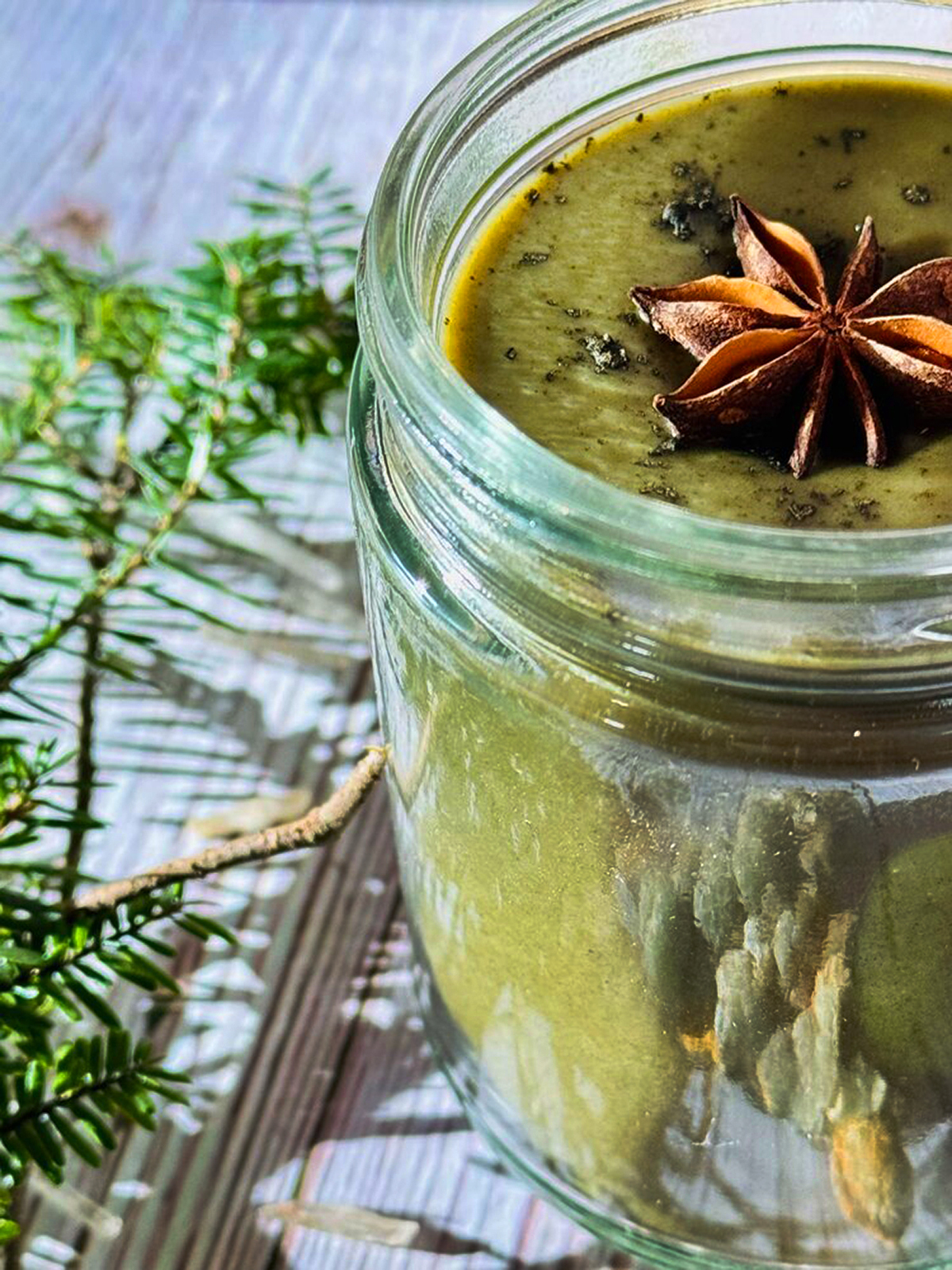
Winter Mint Ghee Seasonal Blend by Goddess Ghee. Photograph courtesy of Goddess Ghee.
For the Herbal Kitchen Witch
Magic is made in the herbal kitchen—from culinary confections to potent medicines. Whether your plant pal is more herbal foodie or medicinal alchemist, these gifts will inspire their creative process and take their table to new hawthorn berry heights.
- Vibrant single-origin spices from Diaspora Co. It doesn’t get much fresher than their Pragati turmeric, Baraka cardamom, Sannam chili, Kaveri vanilla, and Anamalai cacao.
- We also love the exquisite spice selections from our friends at Spicewalla. Try their Haute Chocolate and Golden Milk collections for warm winter afternoons by the fire.
- Hand-crafted herbal bitters from Woodspell Apothecary. Every herbal table needs a bottle of bitters, and these are among the best and most beautiful. We recommend the Spellbound Bitters, featuring a dreamy blend of lavender, lemon balm, and anise hyssop.
- Decadent medicinal and culinary plant powders from Anima Mundi Herbals, including their gorgeously gift-worthy blue butterfly pea powder, Euphoria joy + mood powder, and rose powder.
- Small-batch, grass-fed ghee from Goddess Ghee. You can choose from Classic Ghee, Brown Butter Ghee (my favorite), and over a dozen herbal blends, including Sweet Lullaby, Lunar Cacao, and Wild Ramp.
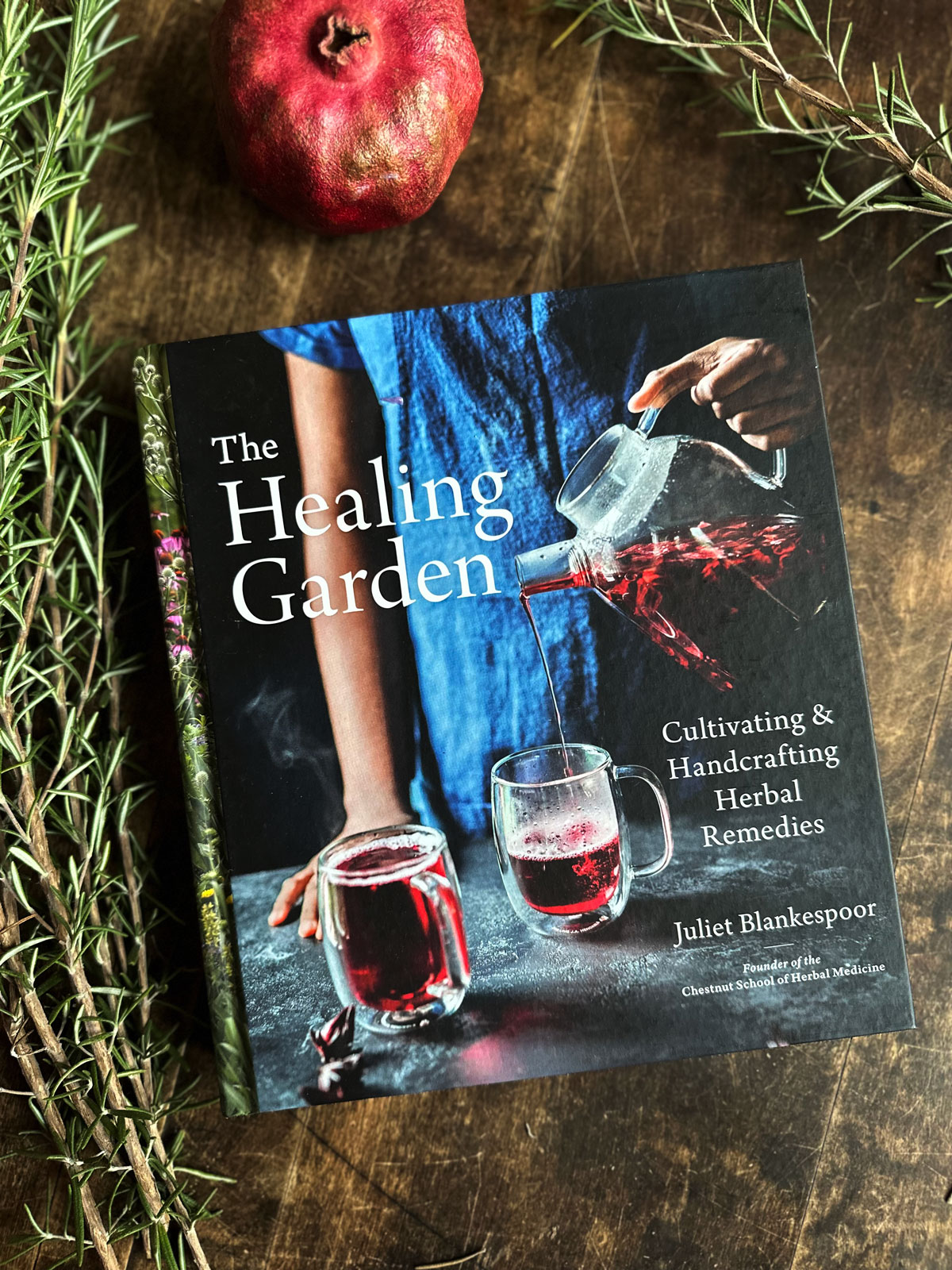
The Healing Garden: Cultivating & Handcrafting Herbal Remedies by Juliet Blankespoor. Photograph by Meghan Gemma.
For the Gleeful Gardener
Know a green thumb you can’t wait to gladden with a gift? Try one of the suggestions below for a plant-centered present that will make their gardener’s heart glow.
- The Healing Garden: Cultivating & Handcrafting Herbal Remedies by Chestnut School Queen Bee, Juliet Blankespoor. This book is a gorgeous herb gardening guide, sumptuous herbal cookbook, and medicine-making manual all in one. It’s soil-to-apothecary perfect as a present for every herb gardener!
Plus, with their copy of the book, your dear one will receive access to the Healing Garden Gateway, an exceptional online bonus overflowing with invaluable material: video tutorials, printable charts and worksheets, recipes, and a hand-picked list of herbal resources they’ll definitely want in their back pocket.
- A precious package of medicinal and floral seed sets from special sources like Strictly Medicinal Seeds, Floret Flower, and Earthbeat Seeds. Tie them up with a green velvet bow for the seed-lover in your life.
- A collection of sturdy and artisanal tools. For gifting, we especially recommend a great pair of pruners, a hori hori (Japanese digging knife), or a gardener’s tool belt. You’ll find links to all of these items in our article, Essential Gardening Tools for the Home Gardener.

Marigold Wrap Top by Needlebone. Photograph courtesy of Needlebone.
For the Botanical Beauty
Adorning ourselves with botanically-inspired beauty can be pure pleasure. Does your special plant person have a penchant for pampering? Here are a few of our top picks for adding something singular to their wardrobe or skincare ritual.
- Beauty Fruit Face Mask & Scrub from Heilbron Herbs, featuring raw honey, roselle hibiscus, marshmallow, aronia berry, and calendula. This vitamin C-rich scrub is food for your face (and it tastes like jam!).
- Clothing, prints, and cards inspired by herbal flora and crafted by Karalyn Wysocki of Needlebone. Try the Monarch and Milkweed Tee, Marigold Wrap, or the Ephemerals print.
- Have a dashing darling? Give them a jaunty plant-dyed beret from Maggie Pate of Nade Studio. Choose from a rainbow of natural colors, including violet, sky, cherry, charcoal, and luna.
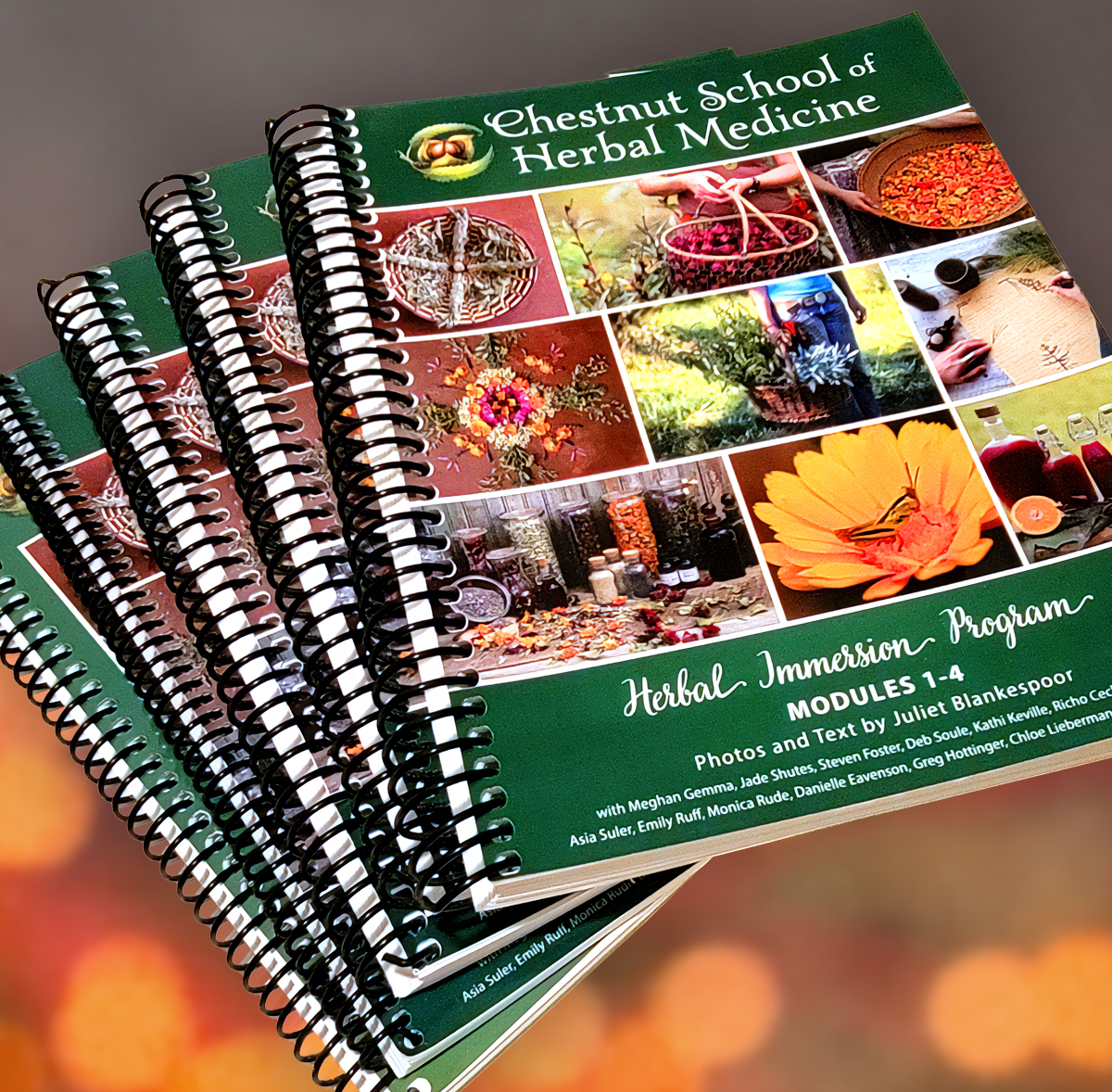
Chestnut School of Herbal Medicine online herbal programs. Photograph by Amanda Davis.
For the Plant-Passionate Person in Your Life
Do you know someone exceptional who wants to become an herbalist? The gift of an herbal education will put them firmly on the plant path and provide years of meaningful learning. Consider an Online Herbal Program with yours truly. We offer the most beautiful and detailed online programs in sustainable, professional herbalism anywhere in the world. Choose from our 1,000-hour Online Herbal Immersion, 150-hour Online Medicine Making Course, and our seasonally available 375-hour Online Foraging Course.
- The Online Herbal Immersion was designed for the truly green-hearted plant person. The program covers medicinal herb gardening, foraging, medicine making, herbal materia medica, plant identification., herbal entrepreneurship, and so much more in 167 videos, 186 lessons, 183 recipes, and a 1,500+ page printable course manual!
- The Online Medicine Making Course provides our expert guidance on the art (& science!) of handcrafting your very own herbal remedies—tinctures, teas, syrups, honeys, oils, salves, and so much more!
- The Online Foraging Course teaches everything you need to know to confidently identify, harvest, and prepare wild food + medicine by going deep with 21 of the most abundant and nourishing plants on the planet.
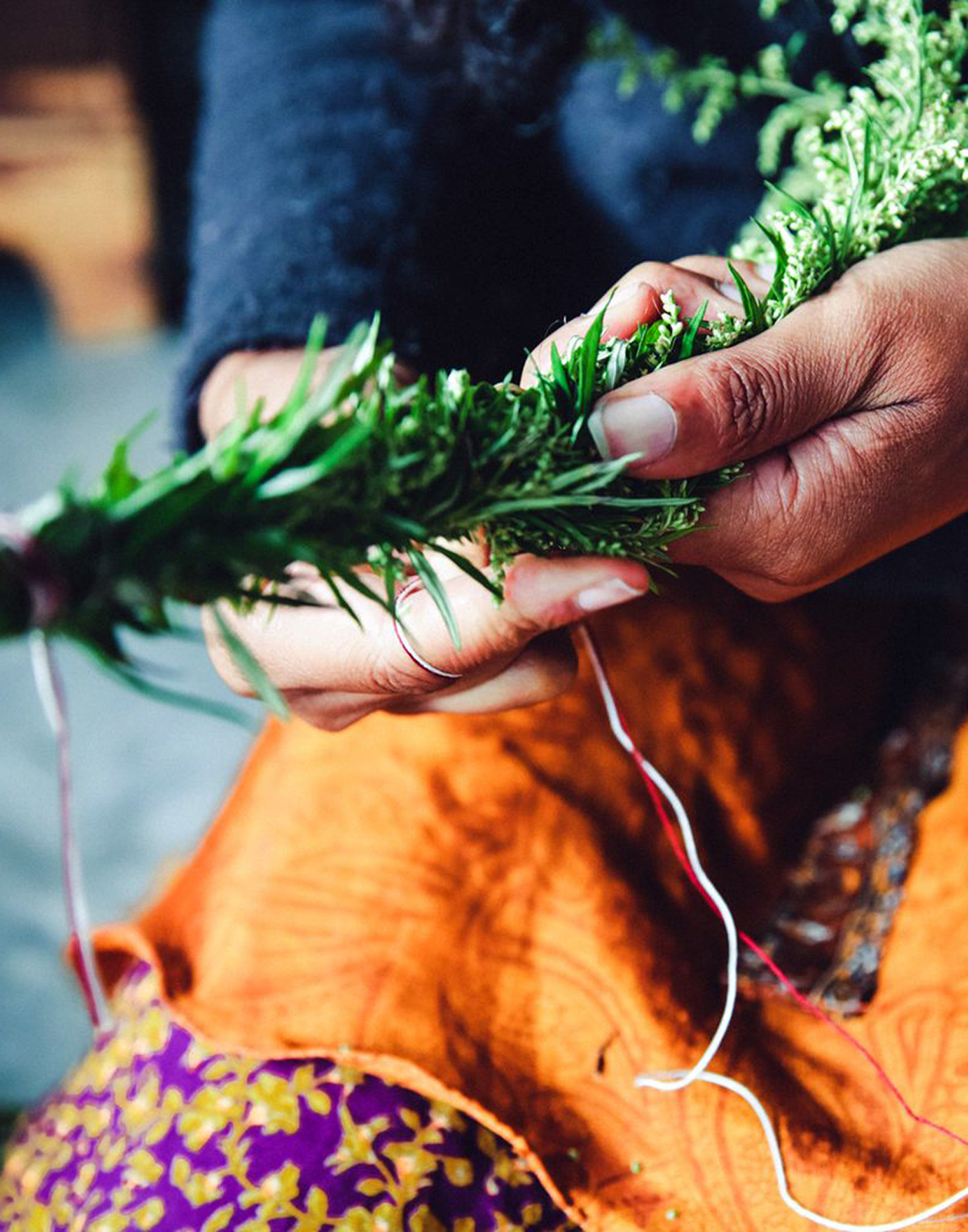
Rootwork Herbals People’s Medicine Reclamation Project. Photograph courtesy of Rootwork Herbals.
For the Heart of Gold
Would your herbal beloved rather give than be given to? For the generous green soul, consider a donation-based gift that supports plants and plant people around the country. We’ve listed a few suggestions below, but also consider local gardens, schools, and initiatives!
- Make a donation in your loved one’s name to Mountain Gardens, the plant sanctuary and home of the late and great Joe Hollis. Joe’s gardens are one of the largest collections of medicinal plants anywhere in the world and have been an educational destination for decades. Donations help keep this paradise thriving!
- Contribute to the People’s Medicine Reclamation Project. Your donations support the BIPOC community with free access to herbal medicine, individual consultations, and educational opportunities with the People’s Medicine School. They also sustain the Jane Minor BIPOC Community Medicine Garden, where BIPOC folks can freely access land, food, and medicine.
- Support the United Plant Savers, an extraordinary organization dedicated to research, education, and conservation of native medicinal plants and their habitats. In lieu of a donation, you can gift your heart of gold a United Plant Savers Membership, which includes the Journal of Plant Medicine Conservation and access to numerous other benefits and discounts.

Hibiscus Chutney makes an especially nice stand-in for cranberry sauce on the holiday table. Photograph by Sarah Snyder.
Delicious homemade recipes make great herbal gifts
Perhaps you want to try your hand at something homemade? We share several decadent recipes on Blog Castanea that make gorgeous gifts when packaged and paired with appropriate accouterments.
Meet Our Contributor:

MEGHAN GEMMA is one of Chestnut School of Herbal Medicine's primary instructors through her written lessons, and is the principal pollinator of the school’s social media community—sharing herbal and wild foods wisdom from the flowery heart of the school to an ever-wider field of herbalists, gardeners, healers, and plant lovers.
She has been in a steady relationship with the Chestnut School since 2010—as an intern and manager at the Chestnut Herb Nursery; as a plant-smitten student “back in the day” when the school’s programs were taught in the field; and later as a part the school’s woman-powered professional team. Meghan lives in the Ivy Creek watershed, just north of Asheville, North Carolina.
Interested in becoming a contributor?
© Chestnut School of Herbal Medicine and chestnutherbs.com, 2011-2024. Unauthorized use and/or duplication of this material without express and written permission from this site’s author and/or owner is strictly prohibited. Excerpts and links may be used, provided that full and clear credit is given to Chestnut School of Herbal Medicine and chestnutherbs.com with appropriate and specific direction to the original content.
Want to take a deeper dive into medicinal herbs and their uses?
Our 1,000-hour Herbal Immersion Program is the most comprehensive handcrafted online herbal course available, covering botany, foraging, herb cultivation, medicine making, and therapeutics.

The post Herbal Gift-Giving Guide appeared first on Chestnut School of Herbal Medicine.
]]>Herbal Compound Butters for Festive Feasting
Recipes and Photography by Sarah Snyder
Other text by Juliet Blankespoor & Meghan Gemma
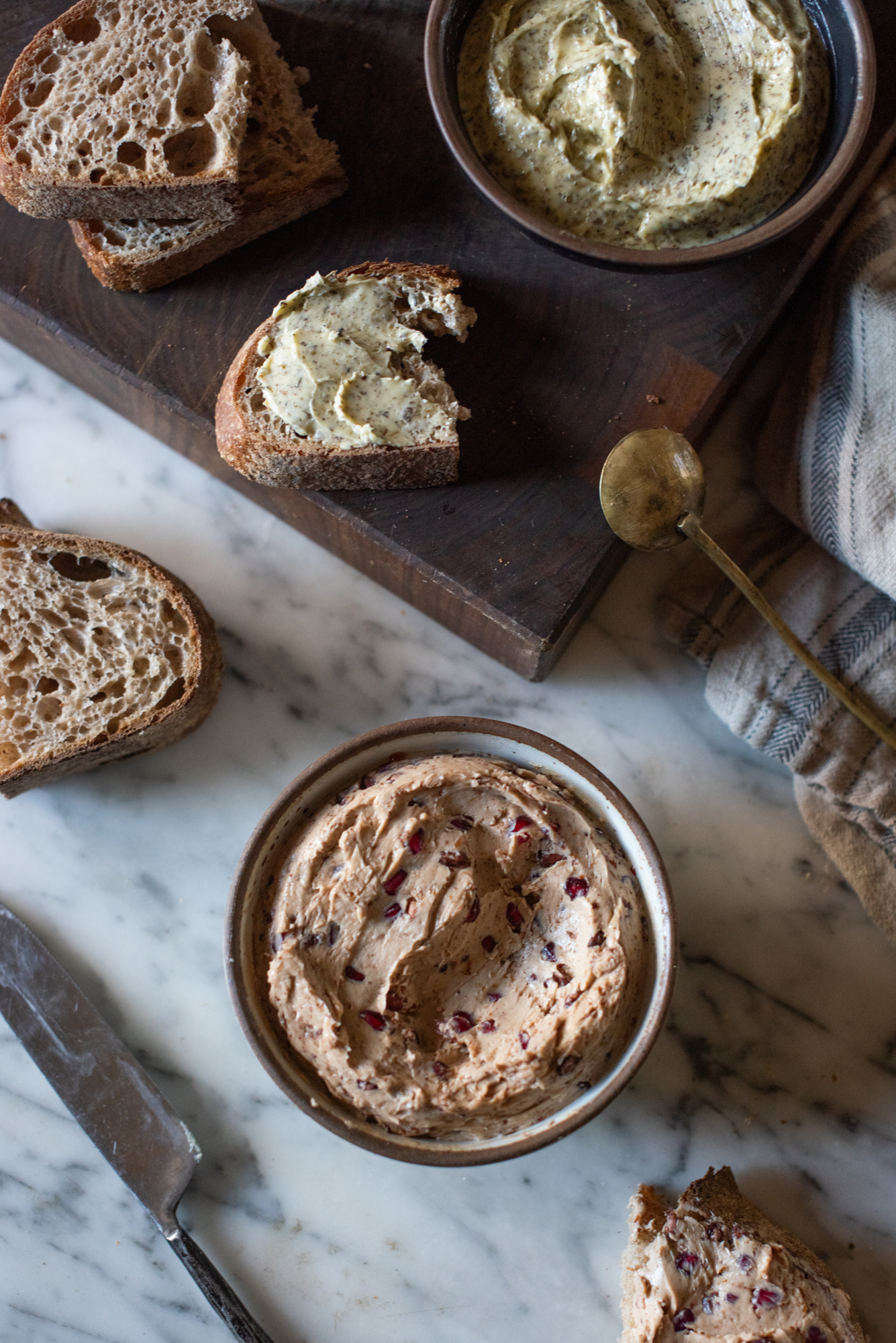
Flavored culinary butters add thrill to any cuisine.
Rich and sultry, compound butters generously lend a delectable flavor and silky texture to almost any dish. They can be slathered onto baked roots, fresh bread, and crackers or used to roast veggies or meat. Fruity, sour, and sweet butters are delicious with pancakes, muffins, or waffles. When you set the table with buttery herbal spreads, every occasion instantly feels special—from Sunday brunch to your best friend’s birthday dinner.
Despite compound butter’s stodgy-sounding name (borrowed from the French, beurre composé), flavored butters reliably add thrill to any cuisine. You may be familiar with compound butters if you’ve ordered steak at a swanky restaurant. After grilling meat or fish, the chef melts a melon ball-sized pat of compound butter on top, the flavor percolating in a pool of lavishness.
Compound butters can be frozen, giving you an elegant method of preserving fresh culinary herbs, especially those that don’t dry well like chives, cilantro, or parsley. Use the butter immediately or roll into logs, wrap in wax paper, and freeze for later use. Simply slice off a round when you’re ready to use the butter, or thaw out smaller portions to have on hand in the refrigerator.
If you avoid dairy, try one of the many non-dairy “butters” or, for a sweet butter, try coconut manna. These plant alternatives will have a different consistency than butter—you might not be able to roll them into a log, and instead, can serve them in a small bowl.
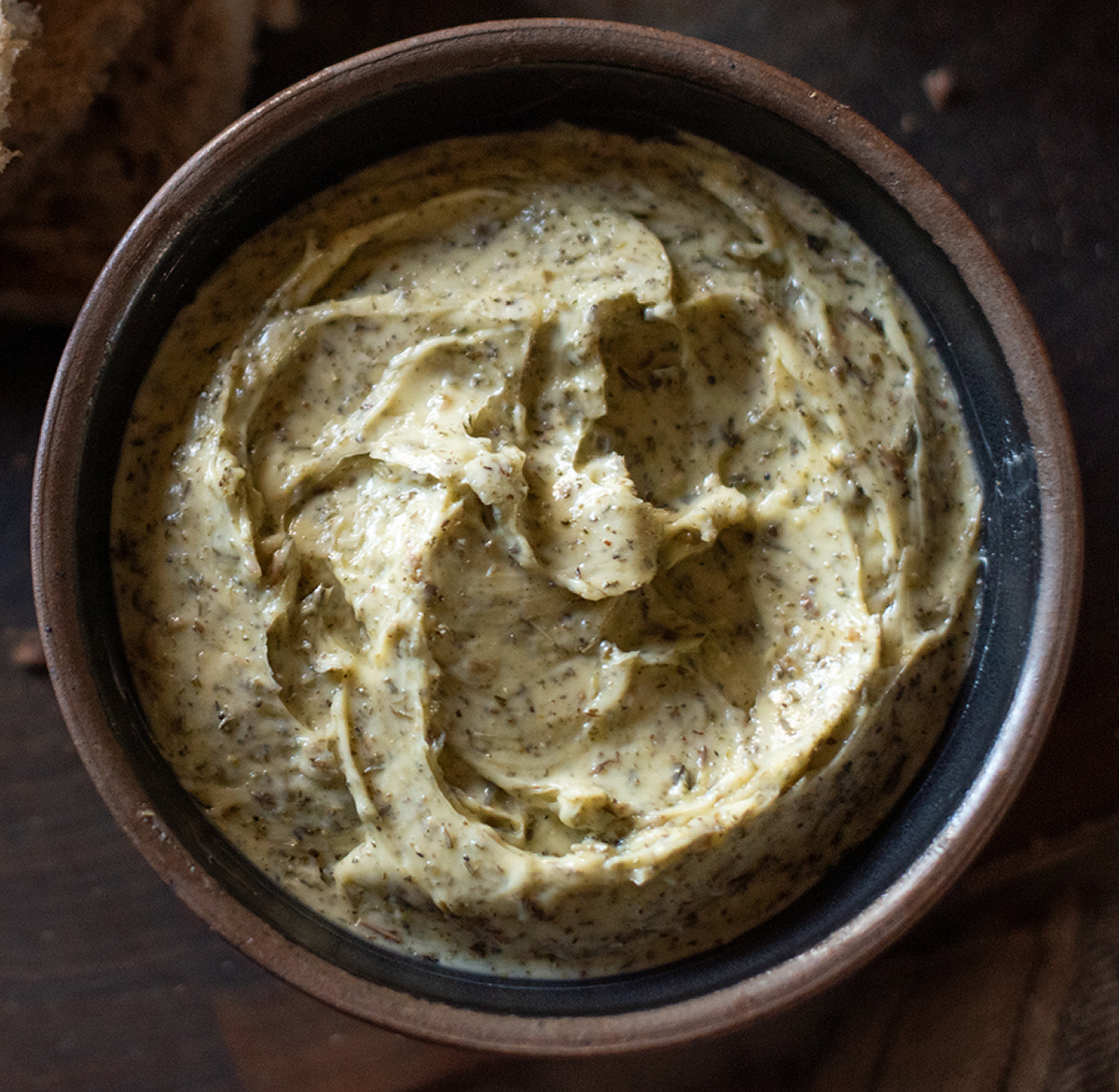
A bowl of Herbes de Provence herbal compound butter.

Herbes de Provence Herbal Butter
Equipment
- Mixing bowl
- Sturdy spoon
Ingredients
- 1 cup salted butter (1 cup = 2 sticks butter)
- 2 teaspoons dried thyme
- 2 teaspoons dried sage
- 2 teaspoons dried lavender
- 1 teaspoon dried basil
- 1 teaspoon dried tarragon
- 1 teaspoon dried oregano
Instructions
- Bring the butter to room temperature.
- Add all the ingredients to a bowl and mix with a sturdy spoon until combined.
- Store in the refrigerator or freeze for later.
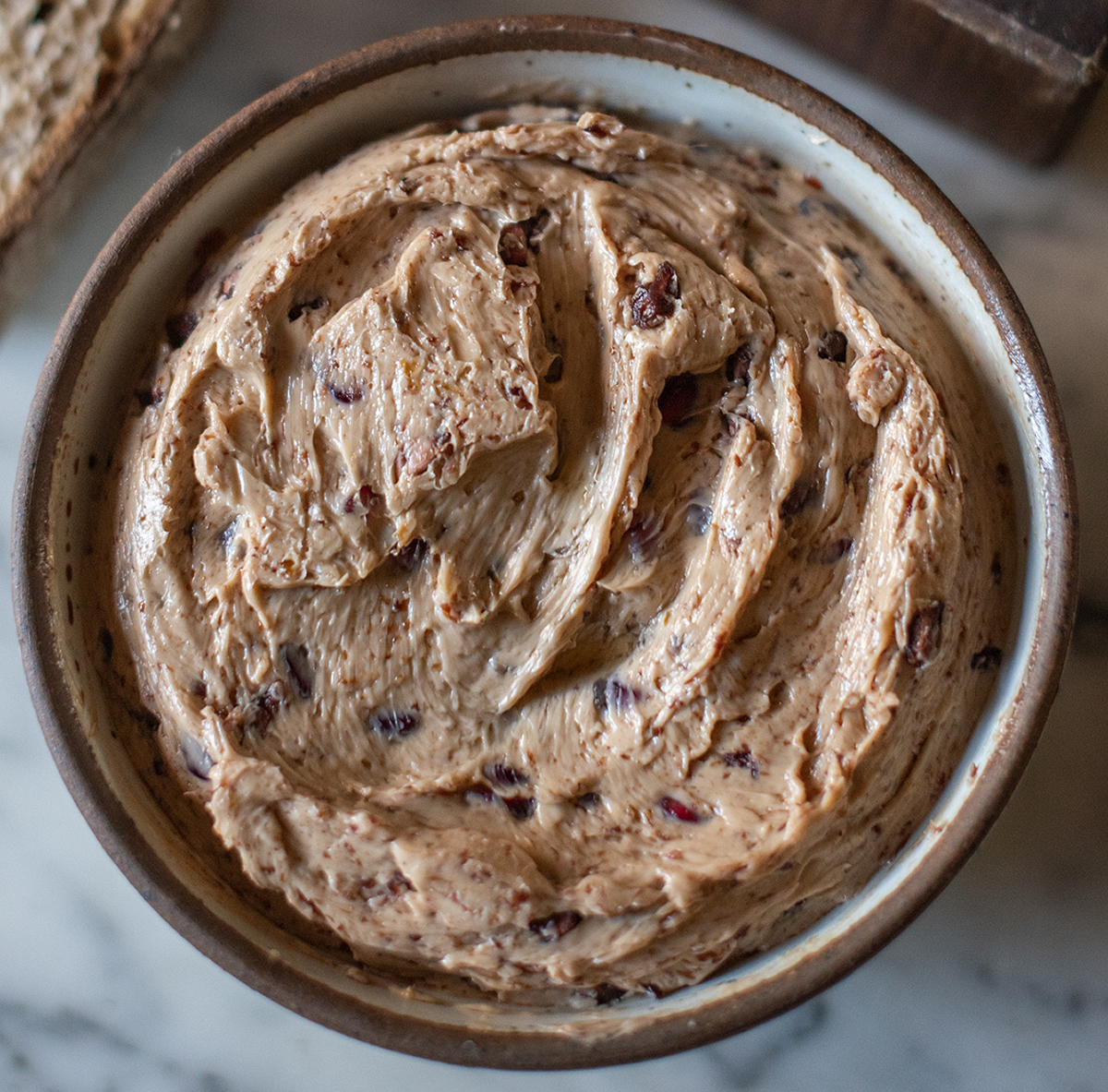
A bowl of pomegranate molasses compound butter.
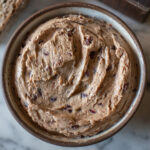
Pomegranate Molasses Butter
Equipment
- Mixing bowl
- Sturdy spoon
- Strainer
Ingredients
- 1 cup salted butter (1 cup = 2 sticks butter)
- 1 pomegranate
- 1 teaspoon grated fresh ginger
- 1 teaspoon orange zest
- 1 teaspoon molasses
Instructions
- Bring the butter to room temperature.
- Peel the pomegranate and separate the seeds.
- Leave half of the pomegranate seeds whole.
- Chop the remaining half of the pomegranate seeds and drain the excess juice using a strainer.
- Add all the ingredients, including whole and chopped pomegranate seeds, to a bowl and mix with a sturdy spoon until combined.
- Store in the refrigerator or freeze for later.
Learn more about the ingredients
For information on the medicinal benefits of herbs featured in these compound butter recipes, visit our articles on:
Basil
Basil (Ocimum basilicum) is best known for its culinary uses, but it is also a versatile medicinal. Learn more about basil.
Lavender
Lavender (Lavandula angustifolia) supports healthy digestion and soothes the nervous system. Learn more about lavender.
Sage
Garden Sage (Salvia officinalis) & White Sage (Salvia apiana) are versatile medicinal & antimicrobial herbs. Learn more about sage.
Looking for more feast-worthy recipes?
Try making our Hibiscus Chutney—it’s the ultimate herbal twist on cranberry sauce—and these show-stopping Herbal Finishing Salts (see pic below).
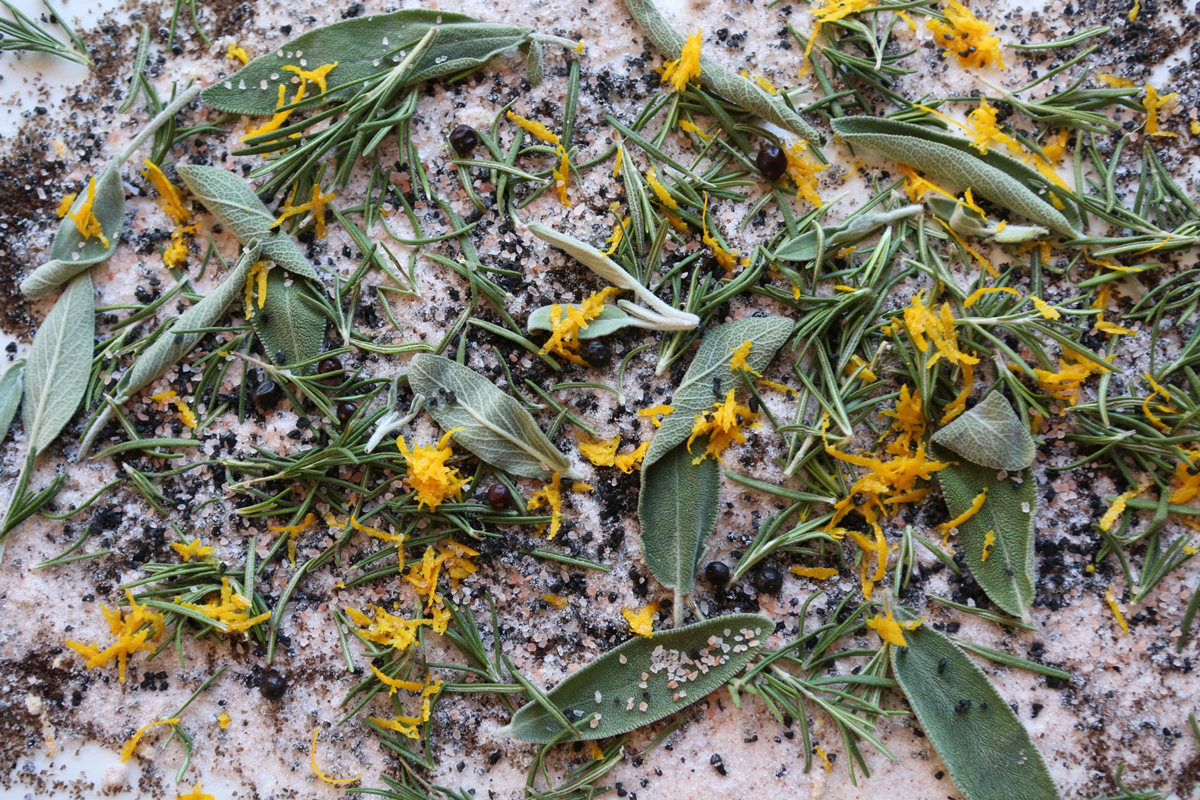
A close up of herbal finishing salt made from fresh sage, rosemary, orange zest, and juniper berries.
Meet Our Contributors:

SARAH SNYDER grew up in a small wooded town outside of Charlotte, NC. She studied music in college before moving to Asheville, NC to study pastry arts. Here she developed a love for plants, gardening, medicine-making, and homesteading. She worked as a photographer, pastry chef, and journalist before coming to Chestnut School for social media.
Most days you can find her reading with her dog and a mug of tea, getting the perfect shot of her garden, trying out yet another craft, or wrangling chickens back into the yard.

JULIET BLANKESPOOR is the founder, primary instructor, and Creative Director of the Chestnut School of Herbal Medicine, an online school serving thousands of students from around the globe. She's a professional plant-human matchmaker and bonafide plant geek, with a degree in botany and over 30 years of experience teaching and writing about herbalism, medicine making, and organic herb cultivation. Juliet’s lifelong captivation with medicinal weeds and herb gardening has birthed many botanical enterprises over the decades, including an herbal nursery and a farm-to-apothecary herbal products business.
These days, she channels her botanical obsession through her writing and photography in her online programs, on her personal blog Castanea, and in her new book, The Healing Garden: Cultivating and Handcrafting Herbal Remedies. Juliet and her family reside in a home overrun with houseplants and books in Asheville, North Carolina.

MEGHAN GEMMA is one of Chestnut School of Herbal Medicine's primary instructors through her written lessons, and is the principal pollinator of the school’s social media community—sharing herbal and wild foods wisdom from the flowery heart of the school to an ever-wider field of herbalists, gardeners, healers, and plant lovers.
She has been in a steady relationship with the Chestnut School since 2010—as an intern and manager at the Chestnut Herb Nursery; as a plant-smitten student “back in the day” when the school’s programs were taught in the field; and later as a part the school’s woman-powered professional team. Meghan lives in the Ivy Creek watershed, just north of Asheville, North Carolina.
Interested in becoming a contributor?
© Chestnut School of Herbal Medicine and chestnutherbs.com, 2011-2024. Unauthorized use and/or duplication of this material without express and written permission from this site’s author and/or owner is strictly prohibited. Excerpts and links may be used, provided that full and clear credit is given to Chestnut School of Herbal Medicine and chestnutherbs.com with appropriate and specific direction to the original content.
Want to take a deeper dive into medicinal herbs and their uses?
Our 1,000-hour Herbal Immersion Program is the most comprehensive handcrafted online herbal course available, covering botany, foraging, herb cultivation, medicine making, and therapeutics.

The post Herbal Compound Butters for Festive Feasting appeared first on Chestnut School of Herbal Medicine.
]]>Botánica Cimarrón: Student Business Spotlight
Interview by Meghan Gemma
Photography courtesy of Botánica Cimarrón

Star Feliz, owner of Botánica Cimarrón small batch apothecary and creative wellness company.
An Interview with Star Feliz of Botánica Cimarrón
Do ancestral herbal traditions inspire you? Are you intrigued by medicine that’s place-based, plant-based, and spiritual? Remedies that are cultural and rich? This is the kind of herbalism practiced by Star Feliz (they/them) of Botánica Cimarrón.
Star is a clinical herbalist, full-spectrum doula, spiritual guide, and Chestnut School of Herbal Medicine graduate. They practice Afro-Taino Caribbean and Western herbalism, drawing creative inspiration from their ancestral lineage and a big imagination for an earth-healing future.
The world needs more earth- and community-centered herbalists.
Botánica Cimarrón is the community vessel for Star’s vision: a small-batch apothecary and ritual arts container that sells expertly formulated bespoke medicines and spiritual tools. It’s also a local resource for herbal classes and accessible healthcare.
Star recently shared an interview with us for our Student Business Spotlight—a series featuring Chestnut School of Herbal Medicine graduates, their work, and the wide variety of professions herbalists can choose from. Star is a graduate of our Online Herbal Immersion Program—1,000 hours of our personal mentorship in sustainable herbalism and herbal career building. If you are interested in the wide variety of herbal careers you might pursue, see An Herbalist’s Salary and Career Opportunities and Learn How to Become an Herbalist.
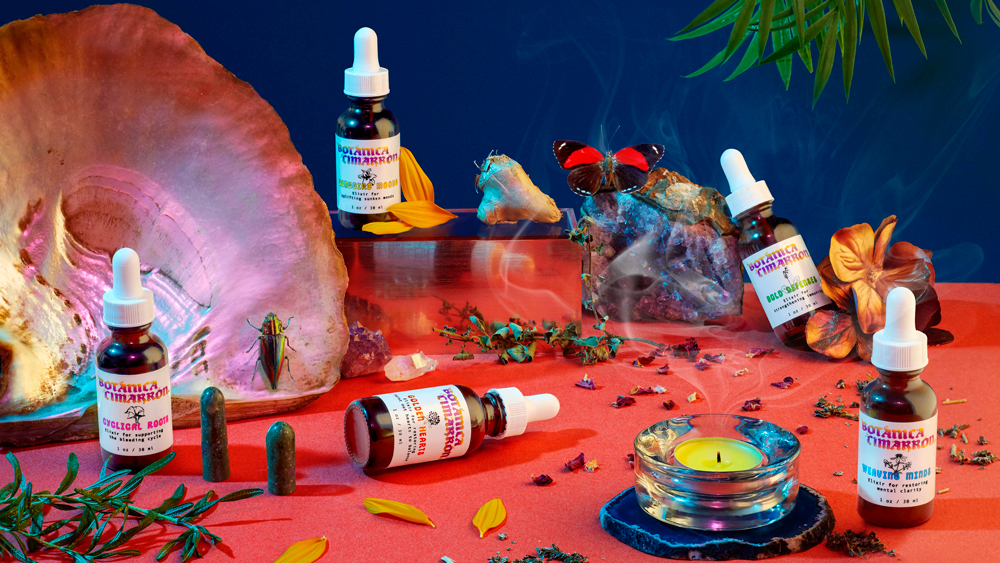
Botánica Cimarrón’s elixir collection.
Star, will you tell us a little bit about yourself and how you were first called to work in the field of herbal medicine?
I’m a Dominican-American artist, herbalist, and spiritual guide. The beginning of my path in herbalism started with my mother and grandmother and the herbal infusions we made together. When I was 19, I lived and worked on a permaculture farm, and that’s where I truly began to listen to the plant spirits, deepen my self-study, and honor my ancestral gifts for healing.
Please share with us about your herbal business, Botánica Cimarrón. What does it offer your community?
Rooted in ancient Afro-Taino wisdom, Botánica Cimarrón is a creative wellness company focused on healing marginalized people’s relationship to the earth through innovative lifestyle products and learning experiences that ensure our thriving futures. Everything is formulated and handmade in ceremony with the earth & stars. Botánica Cimarrón is based in Los Angeles, the unceded territory of Tovaangar.

Star Feliz creates powerful, ethically sourced, and lovingly handcrafted spiritual tools.
How did you know this was the right career move for you?
The signs were everywhere. My soul feels the most alive when I’m creating and close to nature. For many years before starting my own brand, I experienced firsthand the powerful healing effects my medicine had through working as a community-based herbalist, doula, and organizer. I never imagined this would be a career, but step by step, I’ve built a path for myself based on a sacred calling.
How has your herbal education, especially the business training inside our programs, supported your business?
Before I started at the Chestnut School of Herbal Medicine, I was already a practicing community medicine-maker, but I didn’t realize how much I was truly craving a learning structure until I delved into the coursework. The impact was so measurable! It was helpful to have new materials for reference and confidently move through blocks in my practice.
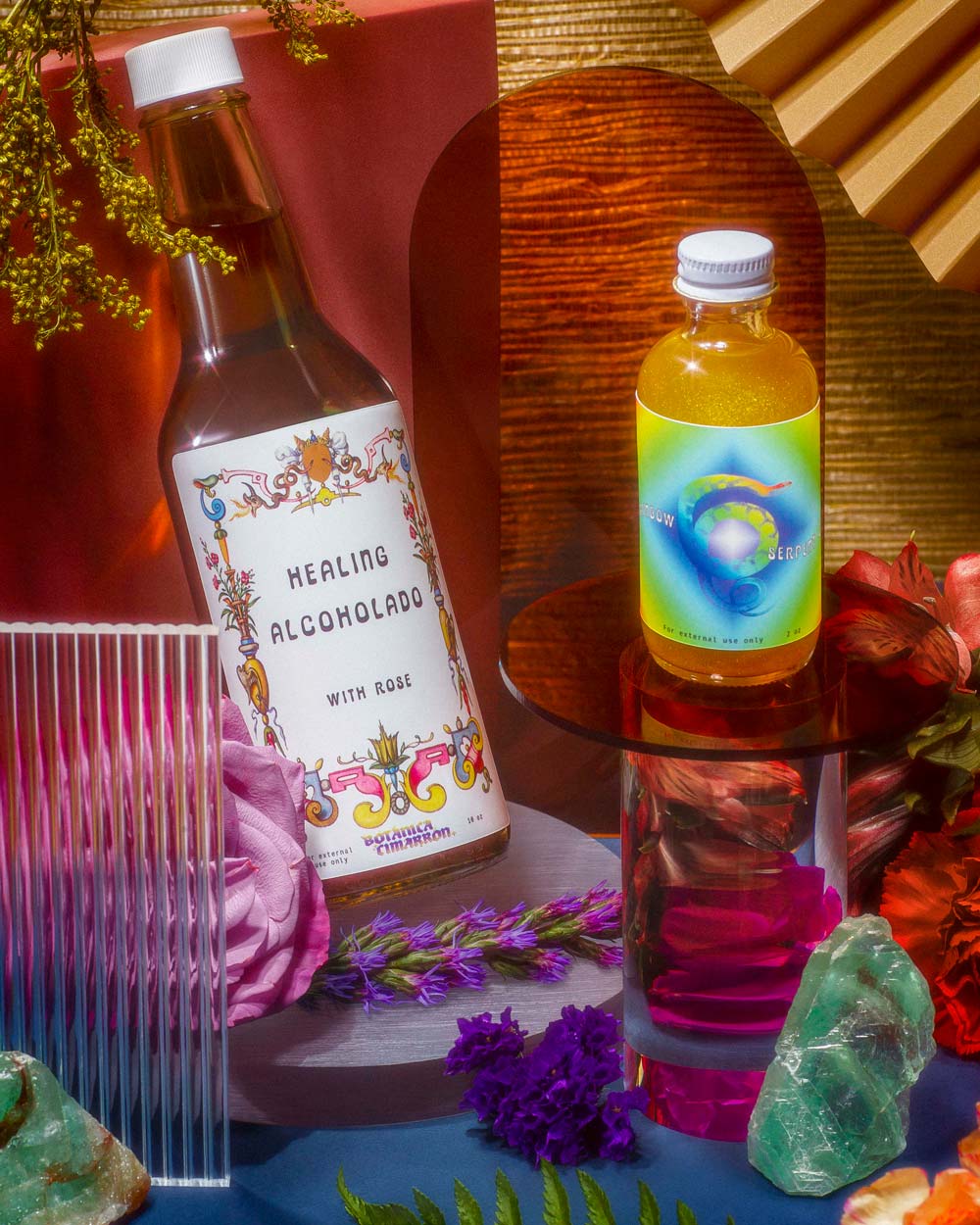
Botánica Cimarrón’s Healing Alcoholado and Rainbow Serpent Oil are available in their online shop.
What inspired you to study with us here at the Chestnut School?
I was attracted to the self-paced curriculum. It meant that I had the flexibility to lend my full energy to the mutual aid project I was involved with at the time, the Lenapehoking Freedom Fighters Herbal Care Kits, without having to choose one or the other.
What do you love most about running an herbal business? What are some of your challenges?
I love sharing this ancient knowledge with people in new and innovative ways. It helps that I get to work with some of the most amazing people in the world — people who work for the earth’s healing are the most open-hearted. The challenging part is the fast pace and often overwhelming amount of work that needs to be done for a business to keep running. Especially when you’re starting out as a team of one.

Botánica Cimarrón’s Rainbow Serpent ritual oil is formulated with real snake skin, gemstones, herbs and flowers, essential oils, and gold dust.
What are three herbs that are essential to your herbal practice/business and why?
Hibiscus – Potent fire medicine.
Moringa – A tree of life. Deeply nourishing.
Licorice – A brilliant activator within any formula.
Do you have any words of wisdom for those just starting their herbal education who are interested in starting a business? What advice do you have for budding herbal entrepreneurs?
Community is crucial (both personal and professional). If you don’t already have a community, focus on building one. And don’t skip over the boring legal, structural, backend, and other organizational building blocks!

Watch the Botánica Cimarrón website for a new extended edition of Green Gold: An Ancestral Plant Spirit Oracle Deck.
What do you think is next for you on your herbal journey?
I’m looking forward to writing more, plus teaching and studying in the tropics for periods of time. I’m working on an extended edition of my publication Green Gold: An Ancestral Plant Spirit Oracle Deck, so look out for that!
We’re so proud of our students!
We hope this interview inspires you to check out Star’s online shop and support a small, earth-centered herbal business. Perhaps you’ll find some inspiration for your own herbal business. You can connect with Star on Instagram @botanicacimarron and via the Botánica Cimarrón website.
To see what our other graduates are up to, and the wide variety of businesses they run, check out our Student Herbal Business Directory.
Want to take a deeper dive into medicinal herbs and their uses?
Our 1,000-hour Herbal Immersion Program is the most comprehensive handcrafted online herbal course available, covering botany, foraging, herb cultivation, medicine making, and therapeutics.

Interested in becoming a contributor?
© Chestnut School of Herbal Medicine and chestnutherbs.com, 2011-2024. Unauthorized use and/or duplication of this material without express and written permission from this site’s author and/or owner is strictly prohibited. Excerpts and links may be used, provided that full and clear credit is given to Chestnut School of Herbal Medicine and chestnutherbs.com with appropriate and specific direction to the original content.
The post Botánica Cimarrón: Student Business Spotlight appeared first on Chestnut School of Herbal Medicine.
]]>Winter Spiced Herbal Bitters for Digestive Health
Recipe and Photography by Sarah Snyder
Other text by Meghan Gemma

Everyone can benefit from a bottle of herbal bitters!
Paradoxically, bitter herbs make life sweet, as they have a profound effect on our enjoyment of food—one of life’s great pleasures. You might also say they improve our relationship with food, as many digestive woes can be corrected simply by adding herbal bitters to the diet.
Herbal bitters benefits include:
- Improve symptoms of digestive turmoil, including gas, bloating, cramps, indigestion, nausea, constipation, and even post-meal crankiness
- Curb sugar cravings
- Promote the growth of healthy intestinal flora
- Facilitate detoxification through their support and stimulation of the liver
It’s optimal to ingest bitters twenty minutes before eating, but if you forget, simply take them when you begin to eat. Try keeping your bitter tinctures on the kitchen table as a reminder. Bitters must be tasted to exert their medicinal effects. A few drops are all that’s needed.
The following herbal bitters recipe is an excerpt from our FREE Winter Seasonal Guide.
Sprinkled with snow dreams and frosted by starlight, the Winter Seasonal Guide is an ode to tending ourselves and our loved ones through the dark moons of winter, a guide for burnishing ourselves to brightness with the plants at our side.
It burns with three complementary candles:
- The Winter Apothecary. A tour of essential herbal wisdom for winter health and levity.
- 7 Healing Herbs for Winter. A materia medica spotlight on seven botanicals embodying the season’s herbal spirit.
- Herbal Recipes for Wintertime. A collection of festive, warming, and health-enhancing recipes.

Winter Spiced Herbal Bitters Recipe
Equipment
- 32 oz. glass jar
- Glass dropper bottles - Optional
Ingredients
- ½ cup dried hawthorn berries (Crataegus spp.) or double the amount of fresh berries
- 2 Tbsp. cacao nibs (Theobroma cacao)
- 2 Tbsp. dried orange peel (Citrus x sinensis)
- 1 Tbsp. hulled cardamom seeds (Elettaria cardamomum)
- 2 tsp. cut and sifted dried mugwort leaves (Artemisia vulgaris) or double the amount of chopped fresh leaves
- 2 cinnamon sticks (Cinnamomum verum)
- 2 cups brandy or vodka
Instructions
- In a 32 oz. glass jar, combine all herbs and spices.
- Cover with alcohol of choice. Brandy makes for a smooth and drinkable blend, while vodka provides a stronger and more medicinal extraction.
- Store in a cool, dark place for six weeks, shaking often.
- After six weeks, strain out the herbs and store your bitters in a glass jar in a dark cabinet. Best used within one year.
Looking for more medicinal recipes for wintertime?
Find more herbal allies for the chilly season on our blog, including our articles on:
Goldenrod Tincture Formula
This goldenrod tincture blend is a helpful internal remedy for congestion due to seasonal allergies, head colds, or sinus infections.
Mighty Pine Tops Tea
This tea recipe combines pine tops with dried peppermint and catnip for relief from sinus and lung congestion.
Medicinal Garlic Sauce
We almost always have a batch of this sauce on hand. It’s a convenient way to add fresh garlic to dishes just before serving.
Meet Our Contributors:

SARAH SNYDER grew up in a small wooded town outside of Charlotte, NC. She studied music in college before moving to Asheville, NC to study pastry arts. Here she developed a love for plants, gardening, medicine-making, and homesteading. She worked as a photographer, pastry chef, and journalist before coming to Chestnut School for social media.
Most days you can find her reading with her dog and a mug of tea, getting the perfect shot of her garden, trying out yet another craft, or wrangling chickens back into the yard.

MEGHAN GEMMA is one of Chestnut School of Herbal Medicine's primary instructors through her written lessons, and is the principal pollinator of the school’s social media community—sharing herbal and wild foods wisdom from the flowery heart of the school to an ever-wider field of herbalists, gardeners, healers, and plant lovers.
She has been in a steady relationship with the Chestnut School since 2010—as an intern and manager at the Chestnut Herb Nursery; as a plant-smitten student “back in the day” when the school’s programs were taught in the field; and later as a part the school’s woman-powered professional team. Meghan lives in the Ivy Creek watershed, just north of Asheville, North Carolina.
Interested in becoming a contributor?
© Chestnut School of Herbal Medicine and chestnutherbs.com, 2011-2024. Unauthorized use and/or duplication of this material without express and written permission from this site’s author and/or owner is strictly prohibited. Excerpts and links may be used, provided that full and clear credit is given to Chestnut School of Herbal Medicine and chestnutherbs.com with appropriate and specific direction to the original content.
Want to take a deeper dive into medicinal herbs and their uses?
Our 1,000-hour Herbal Immersion Program is the most comprehensive handcrafted online herbal course available, covering botany, foraging, herb cultivation, medicine making, and therapeutics.

The post Winter Spiced Herbal Bitters for Digestive Health appeared first on Chestnut School of Herbal Medicine.
]]>Storing Dried Herbs and Herbal Preparations for Freshness and Longevity
Written by Meghan Gemma and Juliet Blankespoor
Photography by Juliet Blankespoor

Fresh herbs can be bundled together and hung on a wooden rack to dry.
Which are the best herbs to start your home herbal apothecary? Which medicinals can I easily grow to dry and store? Where do I buy dried herbs?
Whether you grow your own herbs or purchase them from a bulk supplier, storing dried herbs properly will ensure they enjoy a long life filled with potency and freshness. In this article, we’ll share the basic rules of thumb for storing dried herbs (and tinctures, infused honeys, herbal oils, salves, and powdered herbs), plus we’ll impart our tips for finding the best high-quality bulk herbs to use in your home apothecary.
To learn about starting your own herbal medicine chest, visit our article on The 10 Best Herbs to Start Your Home Herbal Apothecary. And if you’re looking for high-quality sources to purchase your bulk herbs, along with medicine-making supplies, you’ll find details below.
Ready to grow an herb garden where you can gather and dry the freshest medicine on the planet? Check out our Medicinal Herb Gardening Hub—it’s loaded with articles to set you up on the green path, including:
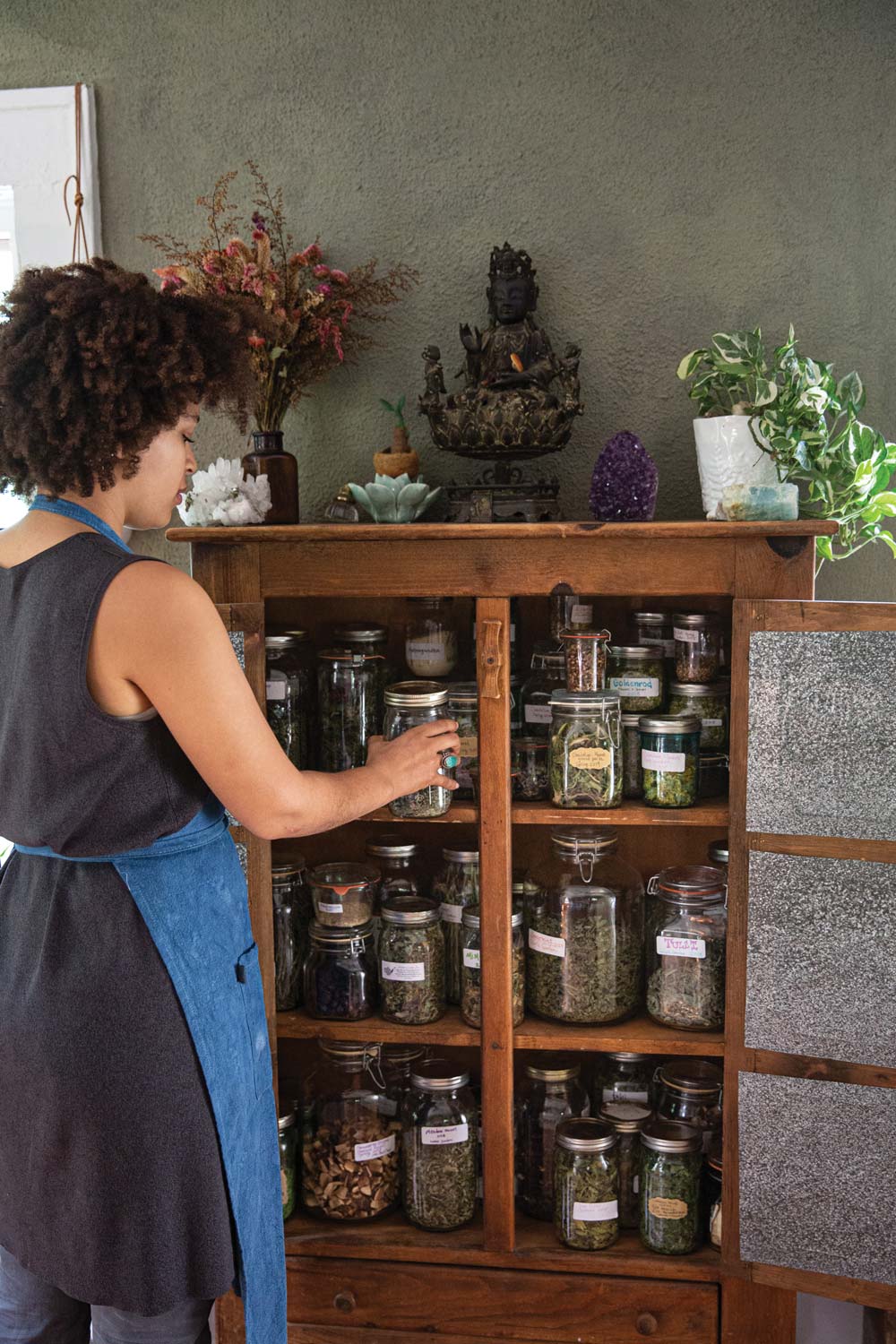
Dried herbs last longer if stored in a dark cabinet or hutch.
What is the best way to store dried herbs for freshness and longevity?
In general, you’ll want to store dried herbs and other medicinal preparations in airtight glass jars inside a cabinet, on a dark shelf, or anywhere out of direct sunlight. A location that is cool and dry will further increase the shelf life of your remedies. Keep your medicines out of the reach of small children and always label each bottle, as it’s all too easy to forget the contents of an unmarked medicine over time!
Dried leaves and flowers will typically last one to two years, and roots can last two to three years.
If you store dried herbs correctly, you’ll find the following to be a useful guideline:
- Dried leaves and flowers have a shelf life of 1-2 years
- Roots, seeds, and barks can last 2-3 years
Use your senses—smell, sight, and taste—to determine the vitality of stored herbs. If an herb looks vibrant and has retained most of its flavor and/or aroma, it’s still good medicine!
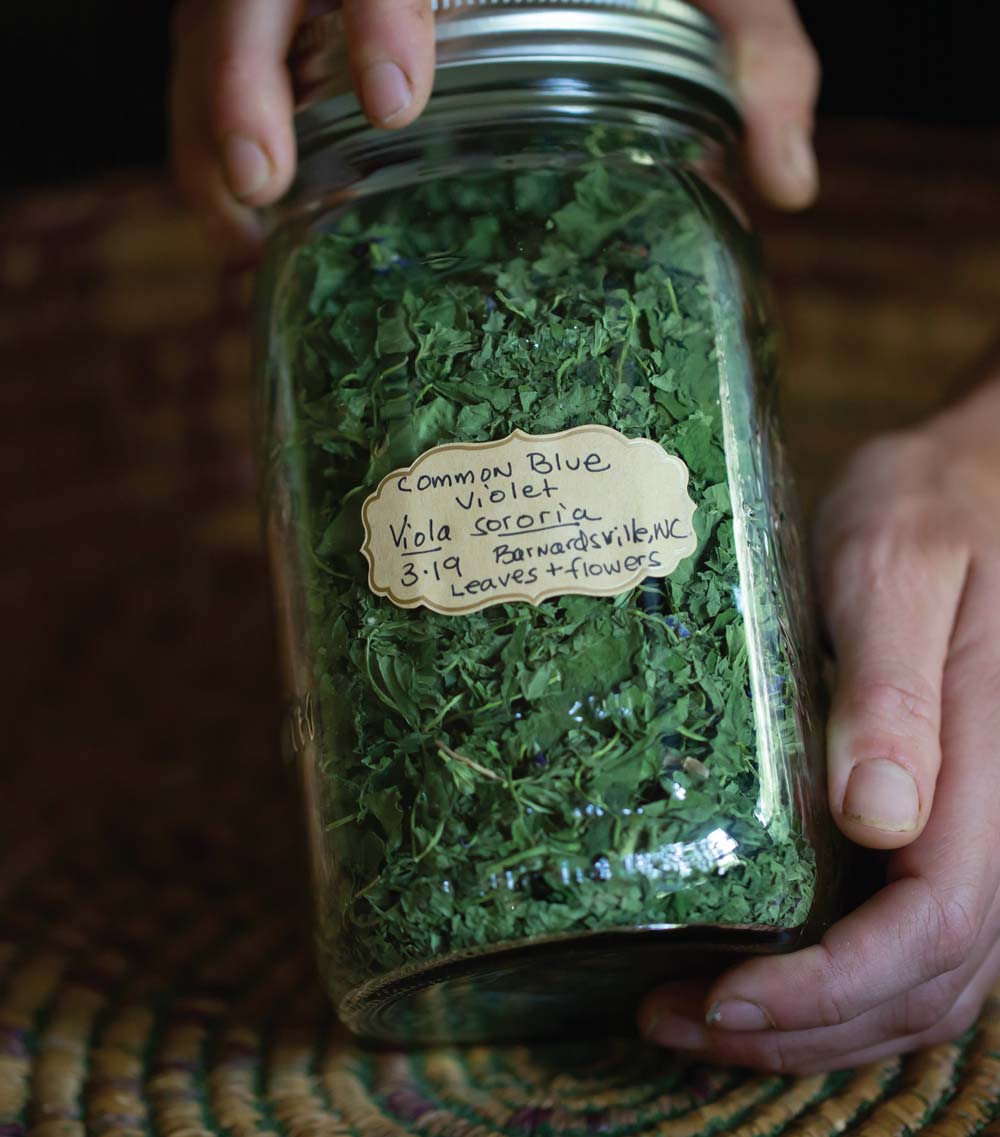
Label your jars of dried herbs with the name of the plant, the part gathered, and the date they were stored.
Where can I find high-quality dried herbs?
To source the most vibrant herbs, look first to small herb farmers and medicine makers (and even some top-notch larger suppliers). When purchasing herbs, we recommend sourcing them in this order when possible:
Local Growers and Small Sellers. This is an opportunity to visit local herb farms and see their medicine for yourself (plus you’ll be supporting small businesses and your local economy). Some growers even offer you-pick herbs. To find sources near you, see Rosalee de la Forêt’s List of Sustainable Herb Farms and Ethical Wildcrafters and our List of Bulk Herb Suppliers.
Local Medicine Makers. Check with your local apothecaries and medicine makers for freshly stocked bulk herbs and tea blends. Feel free to inquire where they source their herbs!
Mail-Order and Online Sellers. This is a straightforward option for purchasing bulk dried herbs online or by catalog. Check out our Sources of Bulk Herbs and Medicine Making Supplies list.
Dry Your Own Herbs. For a tutorial on drying fresh herbs from your garden, check out Mountain Rose Herbs’ article on How to Harvest, Dry, & Store Herbs from the Garden.

Storing freshly made tincture in an amber glass bottle will extend the medicine’s shelf life.
How do I store tinctures and other herbal preparations? And how long do tinctures last?
Like dried herbs, other herbal remedies will benefit from storage in a cool, dark space—a cabinet, hutch, pantry, wooden pie safe, or the like. Below you’ll find nuanced storage details and shelf life expectancies for:
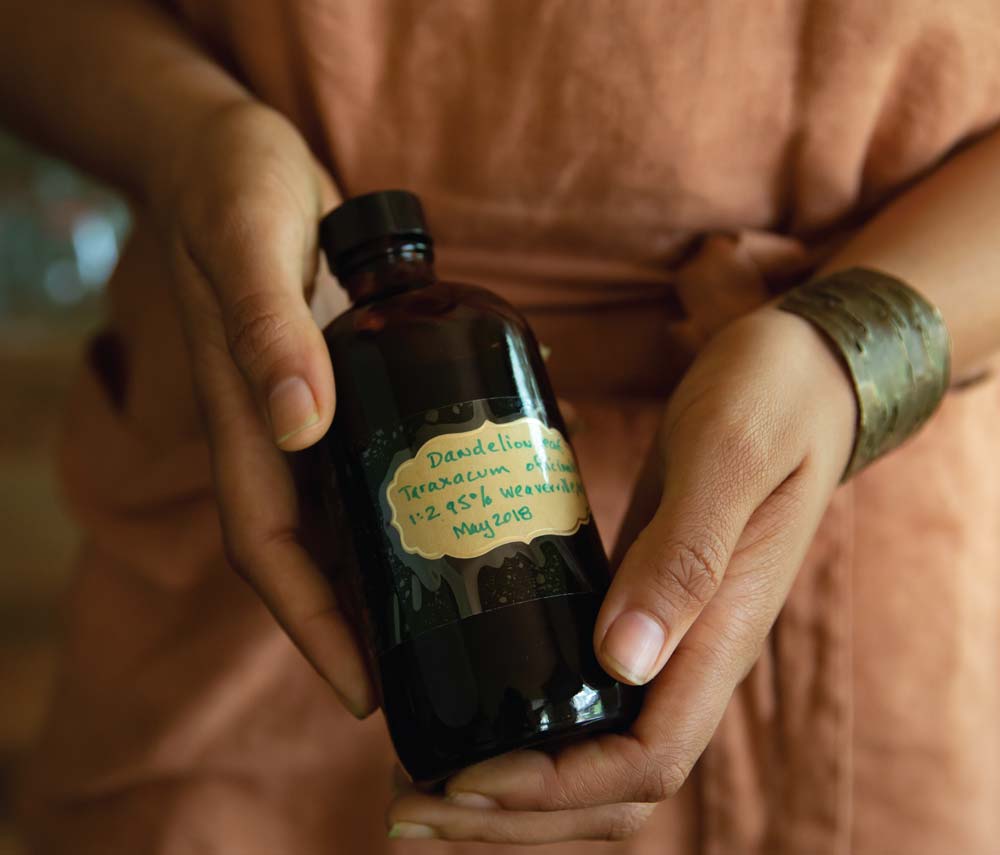
To prevent ink from running due to dribbles from the bottle, place clear packing tape over your labels.
Storing Herbal Tinctures
Properly stored tinctures—prepared with high-percentage alcohol (50% or higher)—can last for years, even decades. We store our tinctures (and syrups, vinegars, oxymels, infused oils, and simple syrups) in amber glass dispensing bottles with polyseal caps. These bottles have several helpful attributes:
- The brown glass excludes light, which can degrade medicine over time.
- The inside of the polyseal cap is resistant to solvents, as it is manufactured for chemical storage. While I don’t like that the inside of the cap is plastic, I haven’t yet found a better system.
- The bottles are a small investment, but they are washable and reusable—I have dozens that have been with me for over a decade.
As an alternative, people often store their medicine in glass canning jars. If you go this route, be aware that alcohol and vinegar will corrode canning lids over time, contaminating the medicine with plastic compounds. To prevent this, use natural waxed paper as a barrier on the inside of the lid.
Finally, make sure to store your alcohol-based tinctures some distance from the stove and potential kitchen fires as they are very flammable.
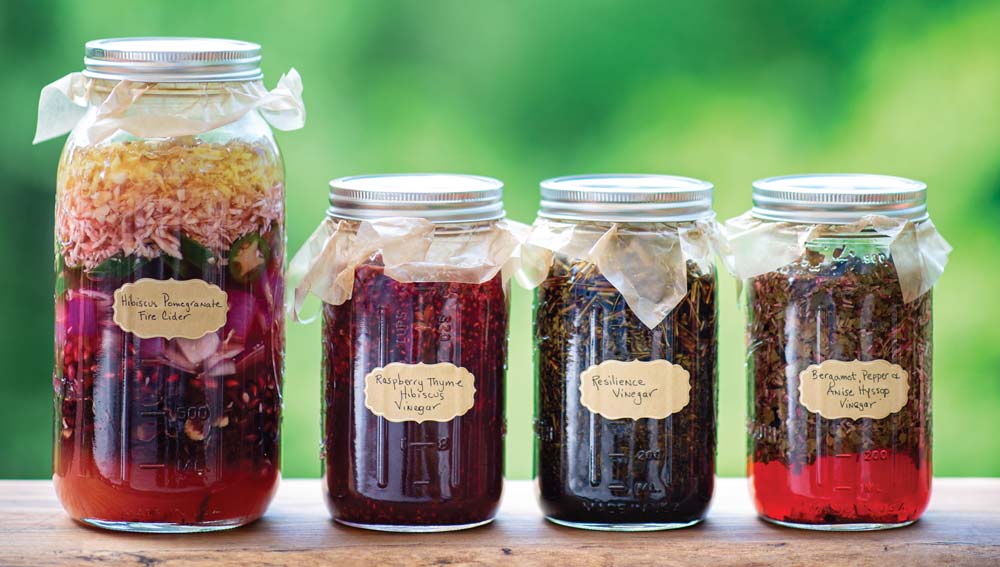
To protect your medicine from potential contamination due to corroded canning lids, place a layer of natural waxed paper on the inside of the lid while your herbs are infusing in vinegar.
Storing Herbal Vinegars
Vinegar-based extracts have a shorter shelf life than alcohol-based tinctures and should generally be used within six months to one year when prepared with fresh herbs (and ideally refrigerated), and one to five years for vinegars prepared with dried herbs. As with alcohol tinctures, we prefer to store vinegar extracts in amber glass bottles with polyseal caps.
Storing Herbal-Infused Honeys
Herbal honeys made from dried herbs have a very long shelf life—decades to perhaps centuries, or even millennia! We store infused honeys in glass jars of varying shapes and sizes. If you prepare honey from fresh herbs, the water weight will dilute the honey and its shelf life will be much shorter. We recommend refrigerating herbal honeys made from fresh herbs. Some of our favorite honeys to infuse include:
- Hawthorn, berries (Crataegus spp.)
- Angelica, root (Angelica archangelica and other Angelica species)
- Elecampane, root (Inula helenium)
- Elderberry, fruit (Sambucus nigra var. canadensis and Sambucus nigra)
- Schisandra, berries (Schisandra chinensis)
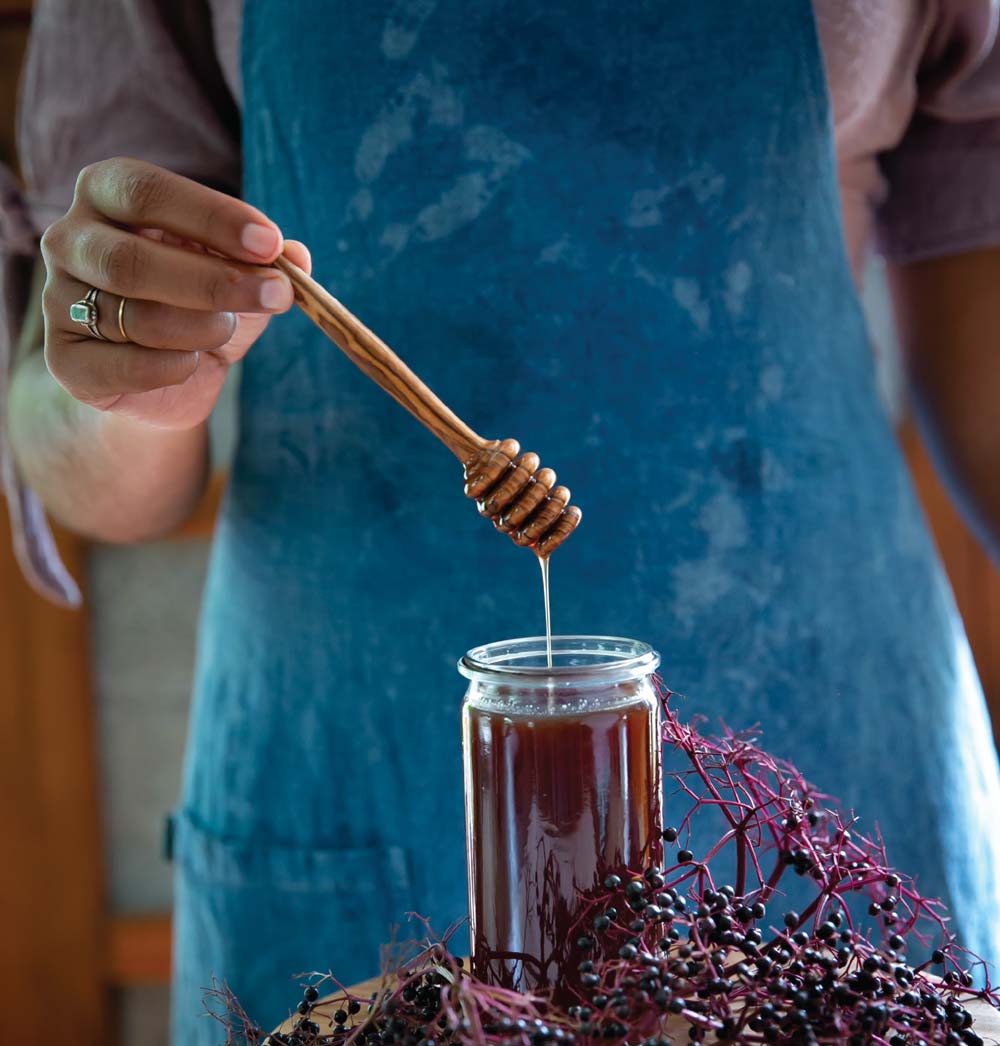
Elderberry-infused honey is a delicious stand-alone remedy, or it can be transformed into a medicinal herbal syrup.
Storing Herbal-Infused Oils and Salves
Herbal-infused oils and salves will typically last two to three years when refrigerated and one year unrefrigerated, depending on the stability of the oil used. Using dried herbs will greatly increase the shelf life of your herbal-infused oils.
Storing Powdered Herbs and Capsules
Herbal powders have a shorter shelf life than cut and sifted herbs (loose teas and bulk herbs) because the plant material is ground to such a fine consistency. Use powdered herbs within 6-12 months, storing them in the refrigerator or freezer for maximum freshness.
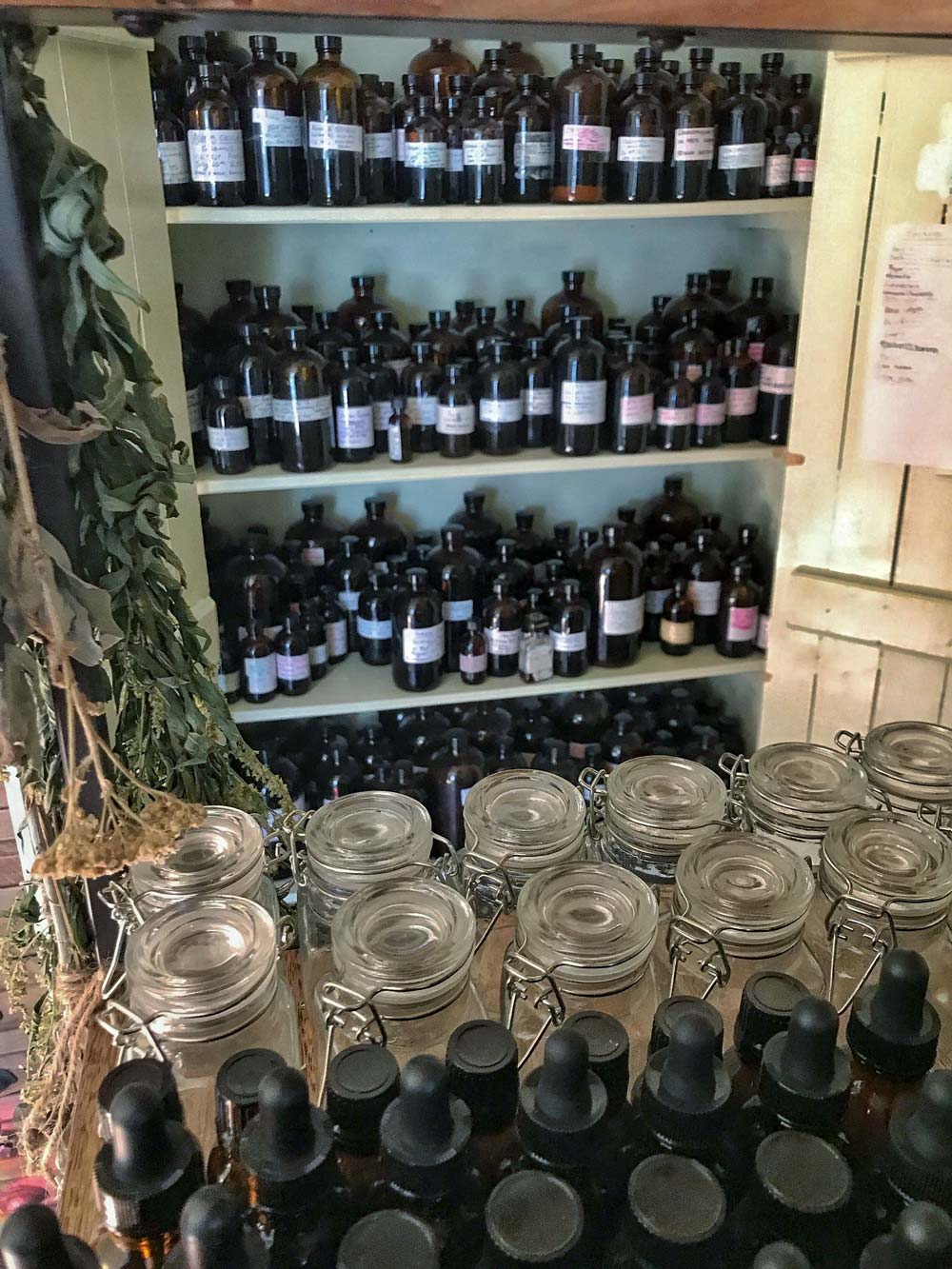
Herbal Storage & Shelf Life Chart
To wrap up our review on storing dried herbs and the longevity of different herbal preparations, here’s a handy chart to guide you in keeping your medicinals fresh and potent. We hope that this information will be helpful in nurturing your well-being and that of your community for years to come. Happy medicine making!
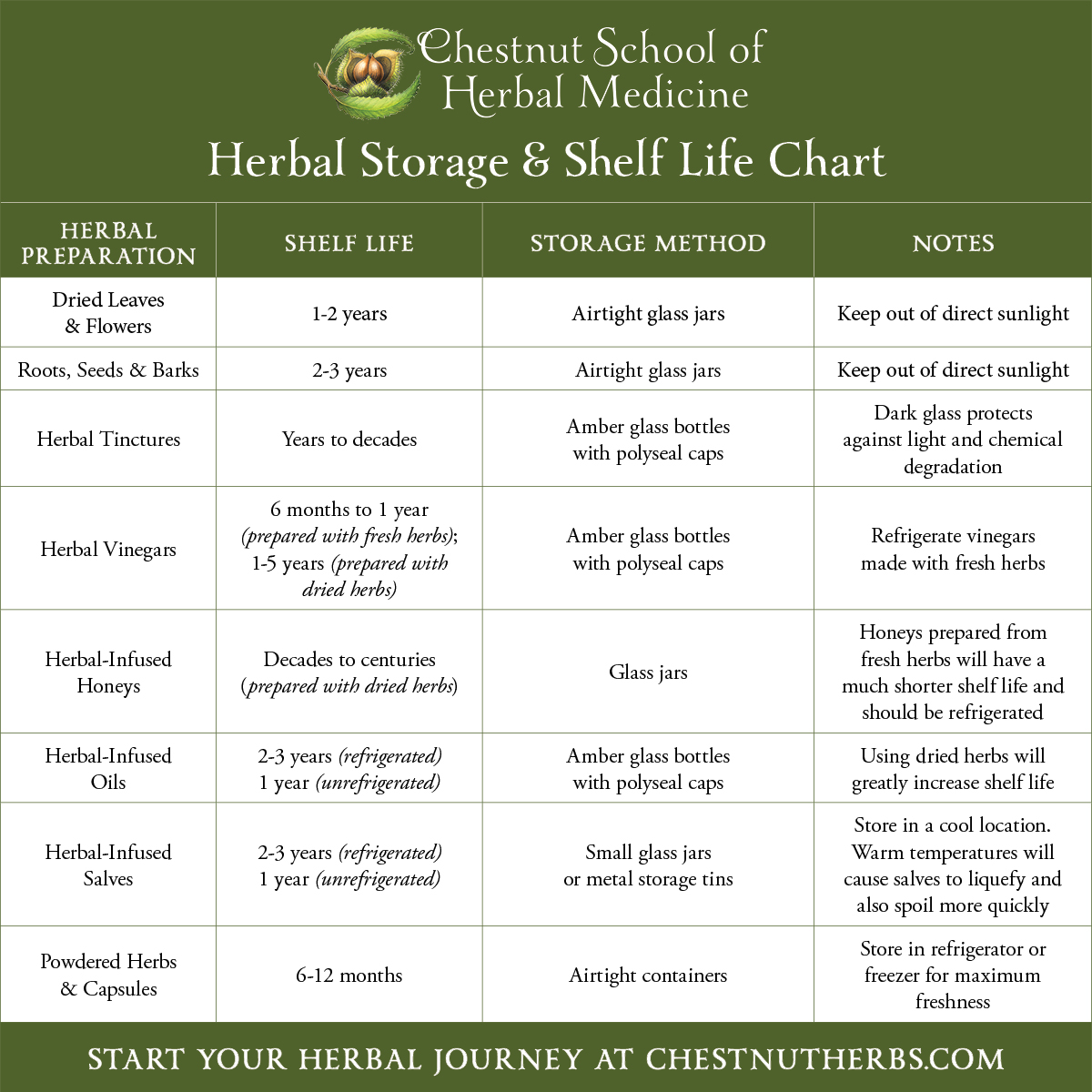
Meet Our Contributors:

MEGHAN GEMMA is one of Chestnut School of Herbal Medicine's primary instructors through her written lessons, and is the principal pollinator of the school’s social media community—sharing herbal and wild foods wisdom from the flowery heart of the school to an ever-wider field of herbalists, gardeners, healers, and plant lovers.
She has been in a steady relationship with the Chestnut School since 2010—as an intern and manager at the Chestnut Herb Nursery; as a plant-smitten student “back in the day” when the school’s programs were taught in the field; and later as a part the school’s woman-powered professional team. Meghan lives in the Ivy Creek watershed, just north of Asheville, North Carolina.

JULIET BLANKESPOOR is the founder, primary instructor, and Creative Director of the Chestnut School of Herbal Medicine, an online school serving thousands of students from around the globe. She's a professional plant-human matchmaker and bonafide plant geek, with a degree in botany and over 30 years of experience teaching and writing about herbalism, medicine making, and organic herb cultivation. Juliet’s lifelong captivation with medicinal weeds and herb gardening has birthed many botanical enterprises over the decades, including an herbal nursery and a farm-to-apothecary herbal products business.
These days, she channels her botanical obsession through her writing and photography in her online programs, on her personal blog Castanea, and in her new book, The Healing Garden: Cultivating and Handcrafting Herbal Remedies. Juliet and her family reside in a home overrun with houseplants and books in Asheville, North Carolina.
Interested in becoming a contributor?
© Chestnut School of Herbal Medicine and chestnutherbs.com, 2011-2024. Unauthorized use and/or duplication of this material without express and written permission from this site’s author and/or owner is strictly prohibited. Excerpts and links may be used, provided that full and clear credit is given to Chestnut School of Herbal Medicine and chestnutherbs.com with appropriate and specific direction to the original content.
Want to take a deeper dive into medicinal herbs and their uses?
Our 1,000-hour Herbal Immersion Program is the most comprehensive handcrafted online herbal course available, covering botany, foraging, herb cultivation, medicine making, and therapeutics.

The post Storing Dried Herbs and Herbal Preparations for Freshness and Longevity appeared first on Chestnut School of Herbal Medicine.
]]>By Dr Renita D’SouzaRatanjot is extensively used in the Ayurvedic treatment of pain, inflammation, eczema, wounds etc. Arnebia nobilis is commonly known as Ratanjot in...
This article Ratanjot Benefits, Remedies, Varieties, Research first appeared here Easy Ayurveda
]]>By Dr Renita D’Souza Curry leaves (Kadi Patta – Murraya koenigii) are well known for adding exotic flavors to Indian cuisine. It has medicinal properties...
This article Curry Leaves (Kadi Patta) Qualities, Remedies, Research first appeared here Easy Ayurveda
]]>By Dr Renita D’SouzaCapparis zeylanica is considered as ‘Rasaayana’ herb in Ayurveda system of medicine. Rasaayana plants are best used for the treatment of immune...
This article Vyaghranakhi (Capparis zeylanica) Qualities, Remedies, Research first appeared here Easy Ayurveda
]]>By Dr Renita D’SouzaPaneer dodi (Withania coagulans) is the medicinal herb extensively used to lower the blood sugar level by promoting the secretion of insulin...
This article Paneer Dodi (Withania coagulans) Uses, Remedies, Research first appeared here Easy Ayurveda
]]>By Dr Renita D’SouzaPeanut, also well known as groundnut is an important oilseed crop and the best natural source for fat and protein. It is...
This article Peanut Qualities, Benefits, Research first appeared here Easy Ayurveda
]]>By Dr Renita D’Souza Introduction Anjeer (Ficus carica) is a very well-known nutritive fruit with many medicinal virtues. It helps in quick recovery from fatigue...
This article Anjeer Uses, Medicinal Qualities, Remedies, Research first appeared here Easy Ayurveda
]]>By Dr Renita D’Souza Introduction Ixora coccinea is an Ayurvedic medicinal plant used as natural remedy for diarrhea, painful periods, vaginal white discharge, loss of...
This article Ixora coccinea Uses, Remedies, Qualities, Research first appeared here Easy Ayurveda
]]>By Dr Renita D’SouzaChenopodium album is an Ayurvedic medicinal plant known by Sanskrit term “Vaasthooka” is widely used in spleen disorders, rheumatism, dysentery, bleeding piles,...
This article Bathua – Chenopodium album Qualities, Remedies, Research first appeared here Easy Ayurveda
]]>By Dr Renita D’SouzaTomato is a well-known versatile vegetable with high nutritive value. It is beneficial to health and prevent lifestyle disorders such as diabetes,...
This article Tomato Uses, Remedies, Qualities, Research first appeared here Easy Ayurveda
]]>By Dr Renita D’Souza Introduction Potato (Solanum tuberosum) is a well-known food crop cultivated worldwide. Commonly known as White potato or Irish potato. Potato being...
This article Potato Uses, Remedies, Qualities first appeared here Easy Ayurveda
]]>The post Soporific Herbs: Top 15 Herbal Sedatives that Can Calm & Help You Get a Good Night’s Sleep appeared first on Health and Natural Healing Tips.
]]>The post Strong Legs, Strong Men: Tackling Varicose Veins Head-On appeared first on Health and Natural Healing Tips.
]]>The post Decoding the Ages: Varicose Veins and Circulatory Health Throughout Life appeared first on Health and Natural Healing Tips.
]]>The post From Sedentary to Active: Lifestyle Shifts for Varicose Vein Health appeared first on Health and Natural Healing Tips.
]]>The post Gravity’s Grasp: The Science Behind Varicose Veins’ Affinity for Legs appeared first on Health and Natural Healing Tips.
]]>The post Silent Struggles: A Comprehensive Guide to Uterine Fibroids appeared first on Health and Natural Healing Tips.
]]>The post From Teens to Twenties: Navigating Varicose Veins in Youthful Years appeared first on Health and Natural Healing Tips.
]]>The post The Feminine Struggle: Addressing Varicose Veins in Women appeared first on Health and Natural Healing Tips.
]]>The post Step by Step: Lifestyle Strategies for a Vein-Healthy Journey appeared first on Health and Natural Healing Tips.
]]>The post Unveiling the Most-Searched Sex Positions in the US: A Comprehensive Guide to Ignite Passion and Enhance Intimacy appeared first on Health and Natural Healing Tips.
]]>Why is it Important to Treat High Blood Pressure Early?
Treating high blood pressure as early as possible is crucial because it can significantly reduce the risk of serious health complications. Uncontrolled high blood pressure puts a strain on your blood vessels and organs, potentially leading to heart attacks, strokes, kidney damage, and vision loss. This is why we always advise our patients to take their health serious, in order to help those suffering from hypertension get healing through the use of natural remedies we have produced several herbal remedies that can reduce high blood pressure drastically. Our herbal remedy is a blend of natural ingredients known for their ability to support heart health and regulate blood pressure. Let's take a closer look at the ingredients and their benefits:
Ingredients and their benefits:
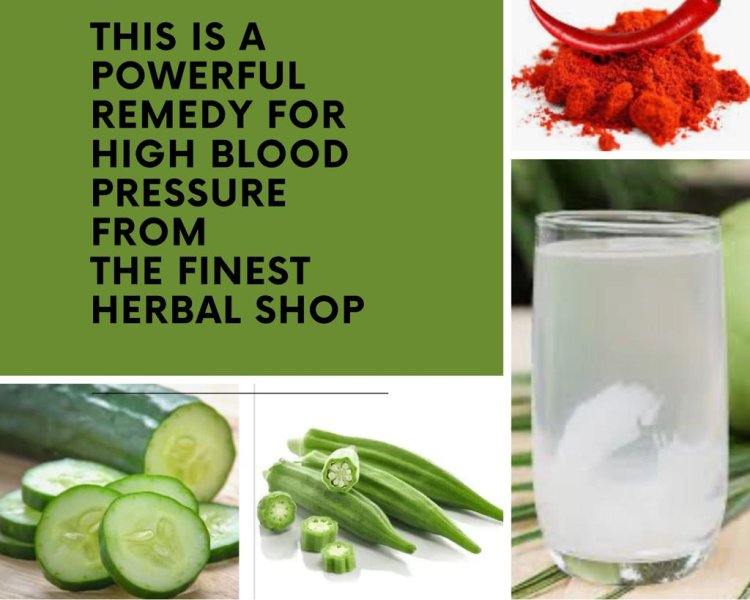
1. Okra: Okra is a rich source of vitamins, minerals, and dietary fiber. It helps stabilize blood sugar and glucose levels, reducing the risk of complications such as stroke and promoting overall cardiovascular health.
2. Cucumber: Cucumber is known for its heart-friendly properties. It aids in improving heart function and alkalizing the body, which can help maintain healthy blood pressure levels.
3. Young Coconut: Young coconut water is a refreshing and hydrating beverage that offers numerous health benefits. It contains essential nutrients like iron and calcium, promotes healthy cells, and reduces inflammation, contributing to a healthier cardiovascular system.
4. Cayenne Pepper: A pinch of cayenne pepper adds a kick to the remedy and plays a crucial role in improving blood circulation. It also helps to reduce high blood pressure and provides added protection against infections.
How to Use the Herbal Remedy:
1. Pour the coconut water into an 8 oz glass.
2. Add a pinch of cayenne pepper to the glass.
3. Cut up the cucumber and Okra, then place them in the glass.
4. Cover the glass and let it sit overnight.
5. Drink this powerful concoction three times a day for the first three days, then reduce to twice a day.
Disclaimer:
It is essential to note that this remedy is not a cure for high blood pressure. We strongly advise seeking the advice of an herbal therapist or your physician before starting any new treatment.
For more effective herbal remedies and holistic healing visit our websites www.finestherbalshop.com or www.finestherbalextra.com to explore a wide range of 100% organic herbs and remedies. Join our wellness club to access valuable information about using herbs to combat various illnesses while on your healing journey www.finestherbalwellnessclub.com .
Take control of your health with the power of natural remedies. This herbal remedy from Finest Herbal Shop is an effective approach to managing high blood pressure. Nourish your body with these natural ingredients, and empower yourself on the path to better heart health. Remember, every small step towards a healthier lifestyle contributes to a healthier heart and a happier life.
]]>c are two very different growths or lesions that can form in the ovaries of women. A fibroid is a benign tumor that is composed of solid muscle tissue and is a common growth in the uterus. Fibroids can occur anywhere in the muscle wall of the uterus and vary in size from very small (the size of a pea) to quite large (the size of a soccer ball). They can cause a range of different symptoms from heavy bleeding during menstruation to abdominal pain, pressure and urinary incontinence.
A cyst, on the other hand, is a saclike structure that can form in the ovaries and is often filled with a fluid. Ovarian cysts may be harmless in some cases, but other types may require medical attention. Most cysts are benign, meaning they are not cancerous, and they tend to occur in women of reproductive age. Cysts can cause various symptoms such as abdominal bloating, lower abdominal pain and irregular period. Other symptoms may include pain during intercourse, fullness in the abdomen and increased menstrual bleeding.

Although in most cases fibroids and cysts are benign and will not cause any problems, it is important to consult with a doctor to obtain medical advice and obtain the necessary medical treatment if needed. Surgery is the most common treatment for both fibroids and cysts, but medications can also be used as a form of treatment for cysts. Women who experience symptoms such as pelvic pain, pressure or urinary incontinence should see their doctor as soon as possible to get a proper diagnosis and treatment.
10 Causes Of Fibroid And Cyst
Here are 10 of the most common causes of fibroids and cysts:
1. Hormonal Imbalances – Many of the symptoms associated with fibroids and cysts are linked to hormone imbalances. When hormones like estrogen, progesterone, and testosterone become unbalanced, they can cause fibroids and cysts to develop.
2. Poor Diet – A nutrient-poor diet that is high in processed and sugary foods may contribute to the growth of fibroids and cysts. Eating overly processed foods can disrupt hormone balance, which in turn can increase the risk of developing these growths.
3. Overweight or Obesity – Being overweight or obese can increase the risk of uterine fibroids and ovarian cysts. The exact mechanism is unclear, but it is thought that fat cells may produce hormones that contribute to the development of these growths.
4. Lack of Exercise – A sedentary lifestyle can also increase the risk of developing fibroids and cysts. Regular exercise helps to maintain hormonal balance, improves circulation and boosts energy levels, which can help to reduce the risk of these growths.
5. Stress – Stress can have a major impact on the body’s hormone balance, and thus can lead to the development of uterine fibroids and cysts. Stress can also cause the body to produce cortisol, a hormone linked to abdominal fat deposition, which can further increase the risk of developing these growths.
6. Exposure to Environmental Toxins – Exposure to environmental toxins, such as pesticides and herbicides, has been linked to an increased risk of developing fibroids and cysts.
7. Exposure to Radiation – Long-term exposure to radiation, such as x-rays and radiation therapy, is thought to increase the risk of developing ovarian cysts and fibroids.
8. Alcohol and Tobacco Use – Regular alcohol and tobacco use can disrupt the body's hormonal balance, increasing the risk of developing uterine fibroids and cysts.
9. Family History – A family history of fibroids and/or cysts can increase the risk of developing these growths.
10. Genetics – Certain genetic conditions, such as Turner's Syndrome, can also increase the risk of developing fibroids and/or cysts.
Although the exact cause of uterine fibroids and cysts is not yet known, these 10 potential causes are believed to play a role in their development. If you are experiencing any symptoms of fibroids and cysts, be sure to contact your healthcare provider for an evaluation and diagnosis. Knowing what is causing your symptoms is the first step towards finding effective treatment.

Some Symptoms Of Fibroid And Cyst.
The symptoms of cysts and fibroids can vary. These can include:
• Abdominal pain and discomfort
• Painful periods with cramping, bloating, and heavy bleeding
• Pelvic pressure and pain
• Urinary incontinence and frequent urination
• Low back discomfort
• Leg pain
• Pain during intercourse
• Infertility
If you experience any of the above symptoms, you should see your doctor or herbal therapist for an accurate diagnosis.
10 Herbal Remedies For Fibroid And Cyst
Herbal remedies for fibroids and cysts are becoming increasingly popular as more people are looking for natural and effective ways to ease their symptoms. These effective and easy-to-use home-made remedies are a great way to keep the body in balance and reduce pain.
Buy organic herbal remedy for fibroids and cysts from finest herbal shop LLC and wave fibroid goodbye, we have received countless testimonies of the effectiveness of this remedy.

You can also try the remedies below
1. Garlic: Garlic is an ancient remedy that contains antiviral, antifungal, and antibacterial properties. It is effective in protecting and healing the body from infections as well as boosting the immune system. For fibroids and cysts, it can be taken internally or applied topically as a paste on the affected area to reduce inflammation.
2. Apple cider vinegar: Apple cider vinegar is a natural tonic with antifungal, antiviral, and antiseptic properties. It helps boost the body’s immunity and can be taken internally or used topically as a poultice. It is also believed to reduce the size of fibroids and cysts.
3. Dandelion root: Dandelion root is a diuretic, which means it helps the body eliminate waste material from the cells. It also helps to cleanse the liver and kidneys, which can reduce pain and inflammation.
4. Milk thistle: Milk thistle is known to boost the liver’s ability to remove toxins from the body, which can help reduce the pain and inflammation associated with fibroids and cysts.
5. Ginger: Ginger has anti-inflammatory properties that help reduce pain and inflammation caused by fibroids and cysts. It can be taken as a tea or in capsule form as a supplement.
These five home-made herbal remedies are great alternatives to over-the-counter medications. They are all natural, safe, and effective in helping reduce the pain and inflammation associated with fibroids and cysts. For best results, it is recommended to have these remedies part of a regular and balanced diet.
Caution.
When using herbal remedies for fibroid or cyst, the user should be aware of the possible side-effects associated with herbal remedies. Some herbs can be potent and can interact with medications, so it is important to consult a healthcare provider before using an herbal remedy. In addition, herbs may cause allergic reactions in some individual
]]>It all began with a desperate search for alternative solutions to tackle my fibroid ordeal. Frustrated with conventional treatments, I stumbled upon the virtual realm of the Finest Herbal Wellness Club—a sanctuary of herbal remedies and personalized care accessible with just a few clicks.
With a flicker of hope rekindled within me, I embarked on a journey of healing like no other. The online club, with its wealth of knowledge and experienced herbalists, provided a lifeline for those seeking natural remedies. It was a community where I could find solace, support, and the empowering tools I needed to take control of my health.
The club's digital platform allowed me to access a vast repository of herbal remedies, carefully curated to address a myriad of health concerns, including fibroids. Each remedy was meticulously crafted, drawing from the ancient wisdom of botanical healing and tailored to individual needs.
With trembling anticipation, I reached out to the club, requesting a personalized remedy for my fibroids. The process was seamless—through email or Telegram, I could communicate my struggles and share my medical history, knowing that I was in the hands of experts who genuinely cared.
The response was swift and compassionate. The club's herbalists took the time to understand the intricacies of my condition, crafting a bespoke remedy that held the promise of relief and restoration. The virtual connection felt surprisingly intimate, bridging the gap between distance and healing.
As the days turned into weeks, and weeks into months, I faithfully followed the herbal remedy prescribed by the club. The transformation I experienced was nothing short of remarkable. Slowly but surely, the intensity of my symptoms began to fade. The excruciating pain subsided, and the oppressive weight of my fibroids lifted, allowing me to regain a sense of normalcy in my life.
But the Finest Herbal Wellness Club offered more than just remedies. They fostered a sense of community and support that extended beyond the digital realm. Through online forums and virtual gatherings, I connected with fellow members who were also on their healing journeys. We shared stories, offered encouragement, and celebrated each milestone reached—a united front in the face of health challenges.
One of the most astonishing aspects of the Finest Herbal Wellness Club is its affordability. Their commitment to making herbal remedies accessible to all is truly commendable. They offer various membership plans, starting from the incredibly affordable Vitality Boost Plan at just $1.99 per month. For those seeking comprehensive care, the Gold Harmonious Health Plan is available for $3.99 per month. And for ultimate support and access to their entire herbal arsenal, the Ultimate Herbal Arsenal Plan can be obtained for only $5.99 per month. It's a small investment for a life-changing wellness journey.
To anyone grappling with health challenges, I urge you to embrace the healing potential of the Finest Herbal Wellness Club. Reach out to this virtual haven, where personalized remedies and compassionate support await. Let the experts guide you towards a path of healing, as they did for me. Reclaim your health and embark on a journey of transformation—one email or Telegram request at a time.
Join the Finest Herbal Wellness Club today and discover a world of natural remedies, a supportive community, and affordable access to a treasure trove of herbal wisdom. Your health and well-being deserve this nurturing embrace.
JOIN THE CLUB NOW
]]>My health took an unexpected turn, and I found myself trapped in a cycle of exhaustion and uncertainty. Doctors were baffled, unable to provide a concrete diagnosis or an effective treatment. I felt like a flickering candle, on the verge of being snuffed out. Desperate to reclaim my vitality, I embarked on a journey to seek an alternative path to healing, hoping to find a glimmer of light in the darkness that had consumed me.
It was on a sunny afternoon, amidst the bustling stalls of a local farmers' market, that I stumbled upon a sight that would forever alter the course of my life. Organic dandelions, with their vibrant yellow petals, stood tall and proud, as if whispering secrets of hope. I was drawn to them like a moth to a flame.
Approaching an old herbalist's booth, I found myself immersed in a conversation that would change everything. The herbalist, a wise and weathered soul, spoke of the remarkable healing properties possessed by organic dandelions. Their ability to cleanse the body, reduce inflammation, and restore vitality ignited a spark of curiosity within me. Could this be the answer I had been searching for?
Without hesitation, I acquired a bundle of those golden treasures and began incorporating them into my daily routine. The delicate dance of brewing organic dandelions into a warm, comforting tea became a ritual of hope and healing. With each sip, I could feel nature's embrace infusing me with renewed strength and resilience.
Days turned into weeks, and something extraordinary began to unfold. A subtle transformation took hold of me. The heavy fog of fatigue that had blanketed my existence lifted, replaced by a newfound energy that surged through my veins. My body, once frail and feeble, grew stronger with every passing day. It was as if the organic dandelions had breathed life back into my weary soul.
Driven by an insatiable hunger for knowledge, I delved deeper into the world of organic dandelions. Their remarkable antioxidant properties, their role in supporting liver health, and their ability to promote a balanced immune system became my guiding lights on this journey of self-discovery. Each revelation solidified my belief in the extraordinary healing potential of these humble herbs.
Today, I share my story with you, dear readers, as a testament to the profound importance of herbs and the immeasurable impact they can have on our lives. It is a reminder that sometimes, amidst the chaos and uncertainty, healing can be found in the most unexpected places.
So, I urge you to embrace the wonders of nature, to seek solace in the gentle embrace of organic herbs, and to believe in the incredible healing potential that resides within our world. For within these petals lies the power to transform lives and illuminate the path to a brighter, healthier future.
With love and gratitude,
Lily
Are you look for where to get organic Dandelion?
Finest Herbal Shop offer selection of organic dandelion products that are carefully sourced and crafted with utmost care.
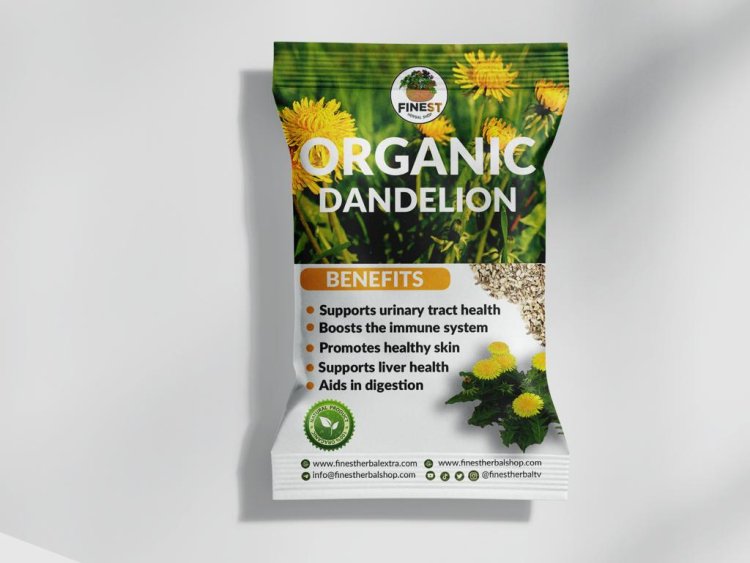
BUY NOW
]]>Carrots are one of the most versatile vegetables. Not only are they delicious raw or cooked, they are also rich in a variety of vitamins, minerals, and other important nutrients. Carrots contain high amounts of beta-carotene, which helps protect the eyes from macular degeneration and improves vision. In addition, carrots are high in Vitamin A, C, K, and B6, as well as dietary fiber, manganese, and potassium.

Since carrots are crunchy and sweet, they can be enjoyed in a variety of ways. Carrots can be used in salads, roasted, steamed, boiled, pickled, pureed, or juiced. Carrots also make a great addition to soups and stir-fries, as well as cakes and other baked goods.
Benefits of eating carrots.
Here are a few of the benefits associated with eating carrots.
Carrots are an excellent source of dietary fiber, which is important for overall digestive health. Eating fiber helps to keep the digestive system moving and allows food to pass through the body regularly. Additionally, fiber helps slow down the absorption of sugar in the blood, helping to regulate blood sugar levels.
Carrots are also a low-calorie, nutrient-rich food. They contain significant amounts of vitamin A, potassium, and vitamin K as well as other nutrients, including calcium, phosphorus, magnesium, and iron. Vitamin A helps to keep eyes healthy and allows for healthy cell growth. Potassium works to keep the cells hydrated and helps control the body’s fluid balance. Vitamin K is important for bone health and helps to prevent blood clots. Consuming carrots regularly can help to improve overall health and wellbeing.

Carrots are also known for their anti-aging benefits. They contain high amounts of antioxidants, which help protect the body from the damage caused by free radicals. The presence of antioxidants helps to reduce the signs of aging, such as wrinkles and fine lines. Eating carrots also helps to keep the skin looking younger, brighter, and smoother. Eating carrots can also strengthen the immune system, helping the body to fight off infection and disease.
In summary, carrots provide a host of benefits, which is why they are a popular choice for many people. They are packed with essential vitamins and minerals and help to protect the body from the damage caused by free radicals. Eating carrots on a regular basis helps to keep the skin looking younger and healthier, helps to regulate blood sugar levels, and provides essential fiber for optimal digestive health. It’s easy to see why carrots are such a great addition to any diet.
7 Recipes you can make with carrot
There are many creative ways to incorporate carrots into your diet, and here are seven recipes you can make with carrots.
1. Carrot Soup: Carrot Soup is a rich and velvety soup that can be eaten as a meal on its own or used as an appetizer. It's easy to make and requires only a few ingredients like carrots, onions, vegetable stock and garlic.
2. Carrot Juice: Carrot juice is a great way to get your daily dose of vitamins, minerals and other nutrients. Simply blend carrots and a small amount of water to make a delicious and nutritious juice that can be consumed throughout the day.
3. Carrot Muffins: Carrot muffins are easy to make snacks that are perfect for breakfast or a mid-day snack. Simply mix together shredded carrots, flour, baking powder, sugar, and your favorite spices for a delicious and moist muffin.
4. Baked Carrot Fries: Baked carrot fries are a healthier alternative to traditional French fries. Simply chop carrots into strips, season with olive oil, spices and herbs, and then bake until they become crispy.
5. Carrot Salad: Carrot salad is a great side dish for lunch or dinner. All you need are shredded carrots, cucumbers, onions, cheese, and dressing. Mix all the ingredients together in a bowl and serve.
6. Carrot Cake: Carrot cake is a classic dessert that's sure to please your sweet tooth. Simply mix together grated carrots, eggs, flour, sugar, baking powder, and spices and pour into a cake pan and bake.

7. Carrot Juice: Carrot juice is a great way to get your daily dose of vitamins, minerals and other nutrients. Simply blend carrots and a small amount of water to make a delicious and nutritious juice that can be enjoyed throughout the day.
Carrots can be used for a variety of recipes that are easy to make and delicious. These seven remedies should give you a great start in exploring the many uses for carrots. So, go ahead and add some carrots to your kitchen and be creative.
Caution.
It is important to be aware of the potential risks associated with carrots and to consume them in moderation.
Carrots are high in Vitamin A, which is essential for good vision, and can boost immunity. However, eating too many carrots can lead to hypervitaminosis A, a condition characterized by increased pressure in the skull and swelling in the legs and ankles. Risk factors include consuming more than 10,000 international units of Vitamin A daily from all sources, which is the equivalent of eating about 14 large carrots. Vitamin A is a fat-soluble vitamin, meaning that it is stored in the body and can build up to potentially dangerous levels.
It is therefore important to enjoy carrots as part of a balanced diet but to consume them in moderation to avoid potential risks. Additionally, people who may be at a heightened risk from consuming too many carrots, such as pregnant women and those on medication, should discuss their diets with a healthcare professional. Eating carrots in moderation as part of a balanced diet can help promote good health.
]]>fibroid and cyst are two very different growths or lesions that can form in the ovaries of women. A fibroid is a benign tumor that is composed of solid muscle tissue and is a common growth in the uterus. Fibroids can occur anywhere in the muscle wall of the uterus and vary in size from very small (the size of a pea) to quite large (the size of a soccer ball). They can cause a range of different symptoms from heavy bleeding during menstruation to abdominal pain, pressure and urinary incontinence.
A cyst, on the other hand, is a saclike structure that can form in the ovaries and is often filled with a fluid. Ovarian cysts may be harmless in some cases, but other types may require medical attention. Most cysts are benign, meaning they are not cancerous, and they tend to occur in women of reproductive age. Cysts can cause various symptoms such as abdominal bloating, lower abdominal pain and irregular period. Other symptoms may include pain during intercourse, fullness in the abdomen and increased menstrual bleeding.

Although in most cases fibroids and cysts are benign and will not cause any problems, it is important to consult with a doctor to obtain medical advice and obtain the necessary medical treatment if needed. Surgery is the most common treatment for both fibroids and cysts, but medications can also be used as a form of treatment for cysts. Women who experience symptoms such as pelvic pain, pressure or urinary incontinence should see their doctor as soon as possible to get a proper diagnosis and treatment.
10 Causes Of Fibroid And Cyst
Here are 10 of the most common causes of fibroids and cysts:
1. Hormonal Imbalances – Many of the symptoms associated with fibroids and cysts are linked to hormone imbalances. When hormones like estrogen, progesterone, and testosterone become unbalanced, they can cause fibroids and cysts to develop.
2. Poor Diet – A nutrient-poor diet that is high in processed and sugary foods may contribute to the growth of fibroids and cysts. Eating overly processed foods can disrupt hormone balance, which in turn can increase the risk of developing these growths.
3. Overweight or Obesity – Being overweight or obese can increase the risk of uterine fibroids and ovarian cysts. The exact mechanism is unclear, but it is thought that fat cells may produce hormones that contribute to the development of these growths.
4. Lack of Exercise – A sedentary lifestyle can also increase the risk of developing fibroids and cysts. Regular exercise helps to maintain hormonal balance, improves circulation and boosts energy levels, which can help to reduce the risk of these growths.
5. Stress – Stress can have a major impact on the body’s hormone balance, and thus can lead to the development of uterine fibroids and cysts. Stress can also cause the body to produce cortisol, a hormone linked to abdominal fat deposition, which can further increase the risk of developing these growths.
6. Exposure to Environmental Toxins – Exposure to environmental toxins, such as pesticides and herbicides, has been linked to an increased risk of developing fibroids and cysts.
7. Exposure to Radiation – Long-term exposure to radiation, such as x-rays and radiation therapy, is thought to increase the risk of developing ovarian cysts and fibroids.
8. Alcohol and Tobacco Use – Regular alcohol and tobacco use can disrupt the body's hormonal balance, increasing the risk of developing uterine fibroids and cysts.
9. Family History – A family history of fibroids and/or cysts can increase the risk of developing these growths.
10. Genetics – Certain genetic conditions, such as Turner's Syndrome, can also increase the risk of developing fibroids and/or cysts.
Although the exact cause of uterine fibroids and cysts is not yet known, these 10 potential causes are believed to play a role in their development. If you are experiencing any symptoms of fibroids and cysts, be sure to contact your healthcare provider for an evaluation and diagnosis. Knowing what is causing your symptoms is the first step towards finding effective treatment.

Some Symptoms Of Fibroid And Cyst.
The symptoms of cysts and fibroids can vary. These can include:
• Abdominal pain and discomfort
• Painful periods with cramping, bloating, and heavy bleeding
• Pelvic pressure and pain
• Urinary incontinence and frequent urination
• Low back discomfort
• Leg pain
• Pain during intercourse
• Infertility
If you experience any of the above symptoms, you should see your doctor or herbal therapist for an accurate diagnosis.
10 Herbal Remedies For Fibroid And Cyst
Herbal remedies for fibroids and cysts are becoming increasingly popular as more people are looking for natural and effective ways to ease their symptoms. These effective and easy-to-use home-made remedies are a great way to keep the body in balance and reduce pain.
Buy organic herbal remedy for fibroids and cysts from finest herbal shop LLC and wave fibroid goodbye, we have received countless testimonies of the effectiveness of this remedy.

You can also try the remedies below
1. Garlic: Garlic is an ancient remedy that contains antiviral, antifungal, and antibacterial properties. It is effective in protecting and healing the body from infections as well as boosting the immune system. For fibroids and cysts, it can be taken internally or applied topically as a paste on the affected area to reduce inflammation.
2. Apple cider vinegar: Apple cider vinegar is a natural tonic with antifungal, antiviral, and antiseptic properties. It helps boost the body’s immunity and can be taken internally or used topically as a poultice. It is also believed to reduce the size of fibroids and cysts.
3. Dandelion root: Dandelion root is a diuretic, which means it helps the body eliminate waste material from the cells. It also helps to cleanse the liver and kidneys, which can reduce pain and inflammation.
4. Milk thistle: Milk thistle is known to boost the liver’s ability to remove toxins from the body, which can help reduce the pain and inflammation associated with fibroids and cysts.
5. Ginger: Ginger has anti-inflammatory properties that help reduce pain and inflammation caused by fibroids and cysts. It can be taken as a tea or in capsule form as a supplement.
These five home-made herbal remedies are great alternatives to over-the-counter medications. They are all natural, safe, and effective in helping reduce the pain and inflammation associated with fibroids and cysts. For best results, it is recommended to have these remedies part of a regular and balanced diet.
Caution.
When using herbal remedies for fibroid or cyst, the user should be aware of the possible side-effects associated with herbal remedies. Some herbs can be potent and can interact with medications, so it is important to consult a healthcare provider before using an herbal remedy. In addition, herbs may cause allergic reactions in some individuals, so it is important to read the labels carefully and make sure to buy only from trusted sources.
]]>